March 11
Though a whole host of spots to see are listed on our itinerary, Younes decides, sensibly enough, to take us to only the best and to add a couple of interest that we’re not on the list.
Most interesting to both Carol and me are the street scenes of people going about their ordinary lives. Here are some taken at various times during the day.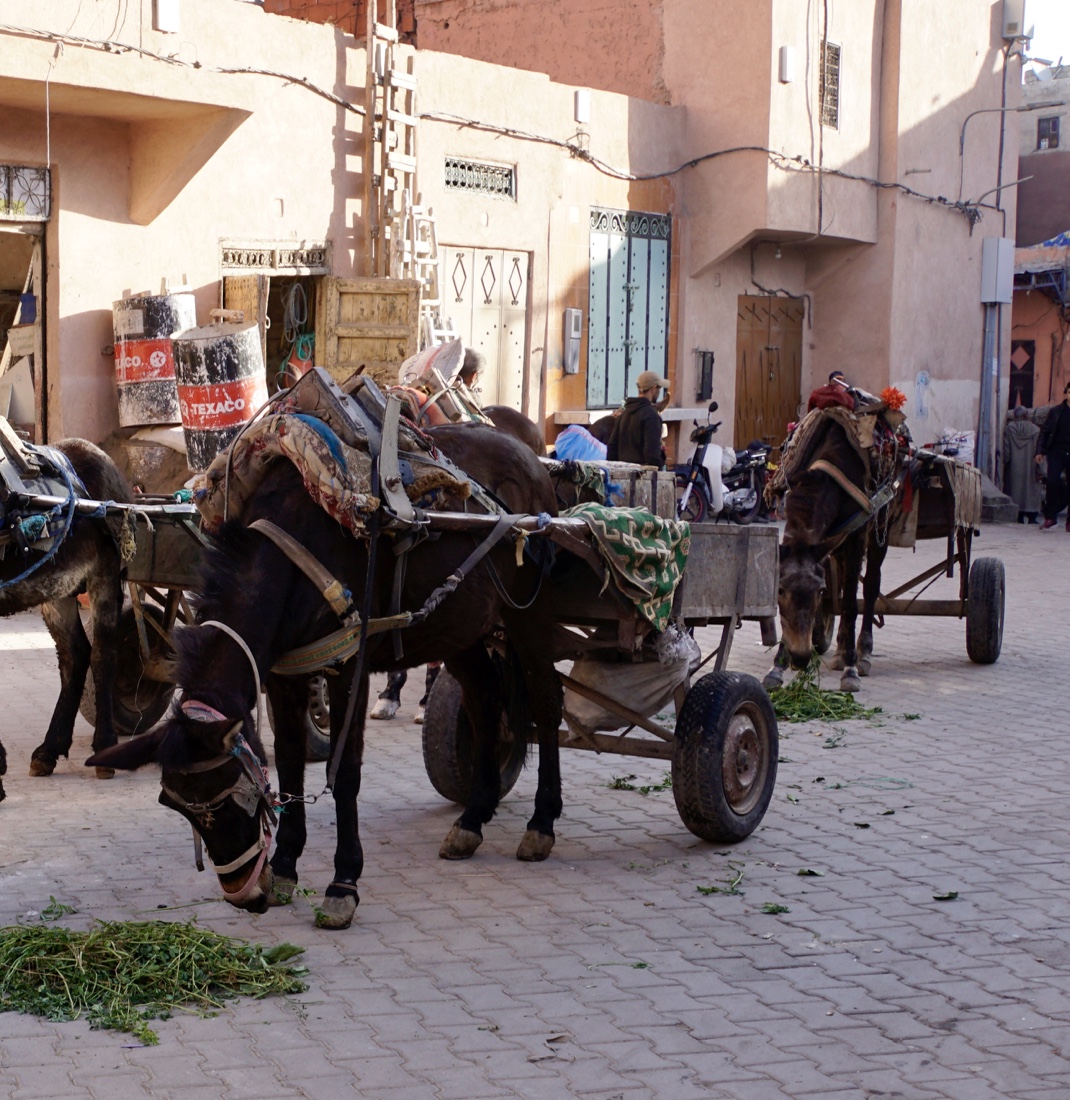 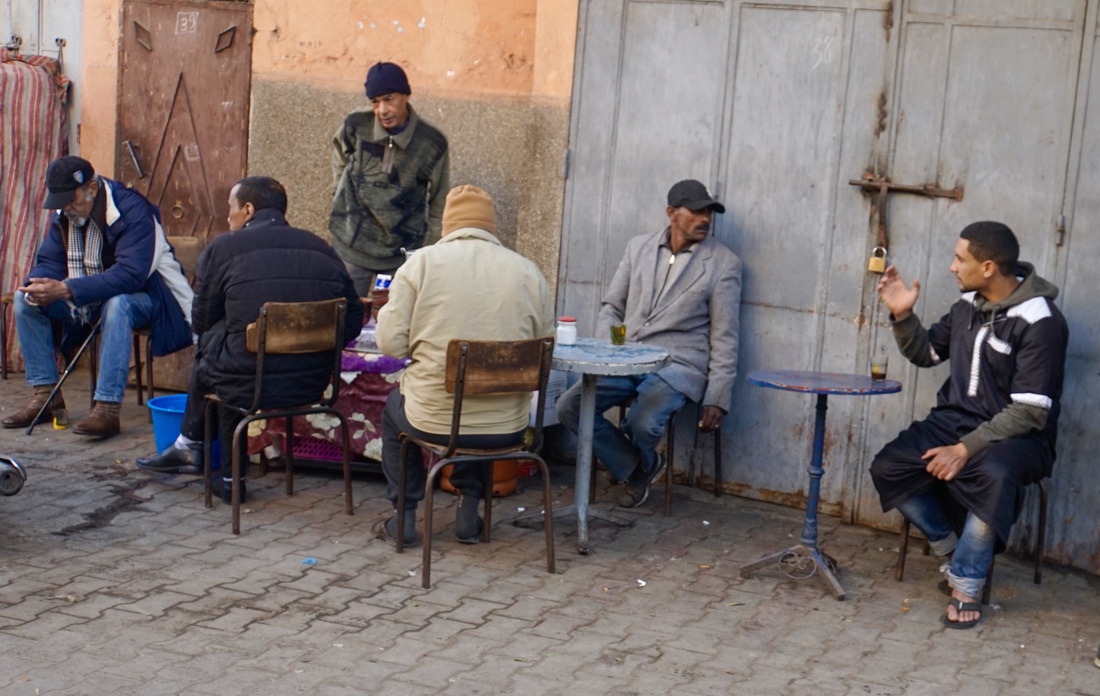 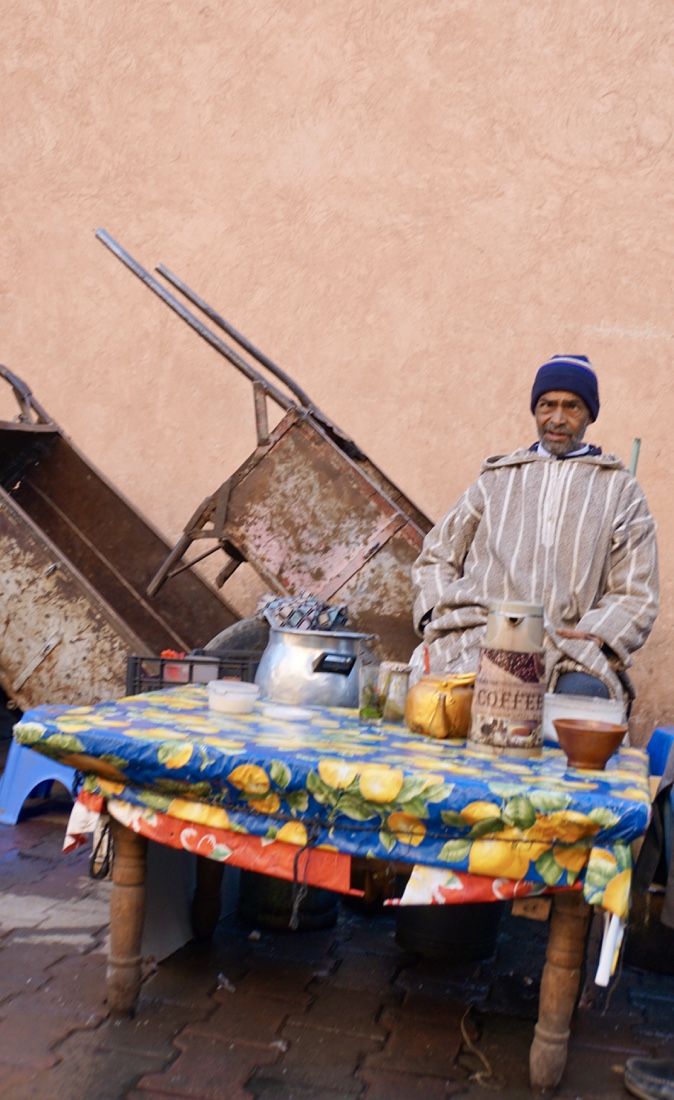
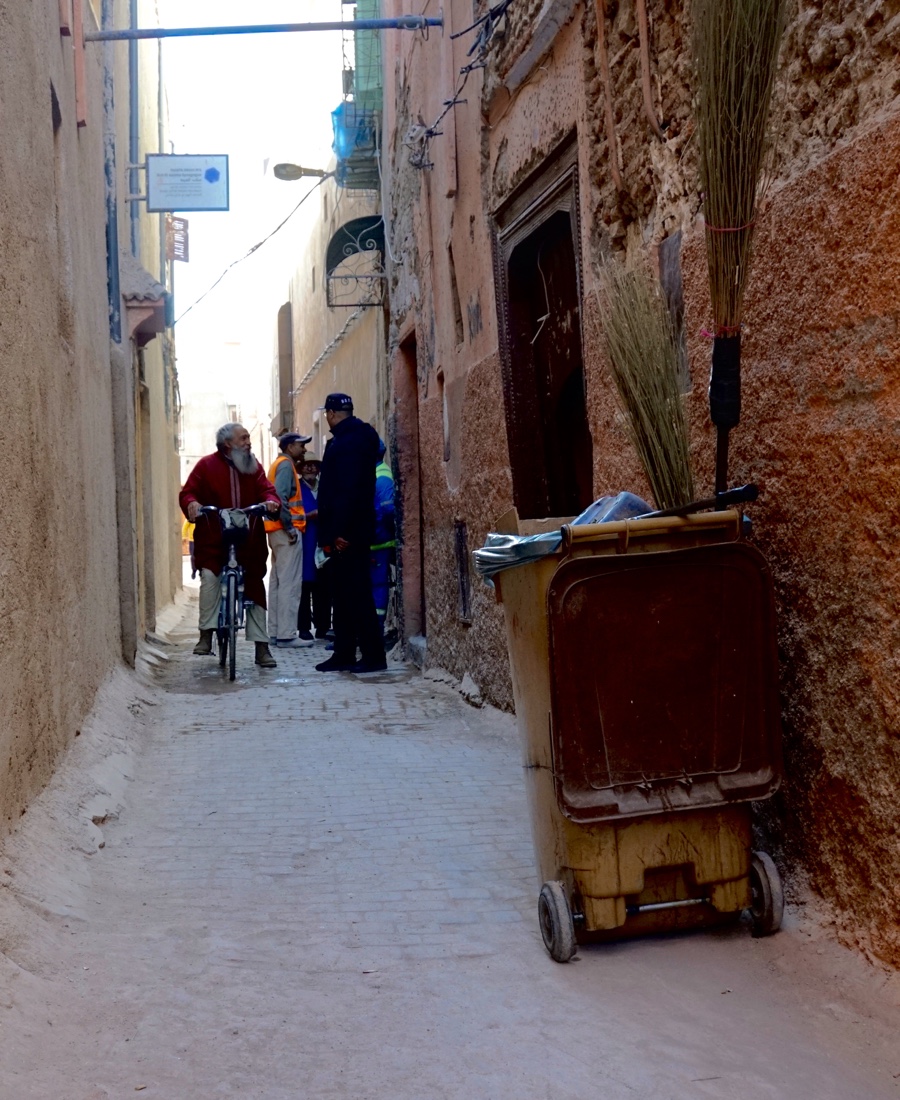 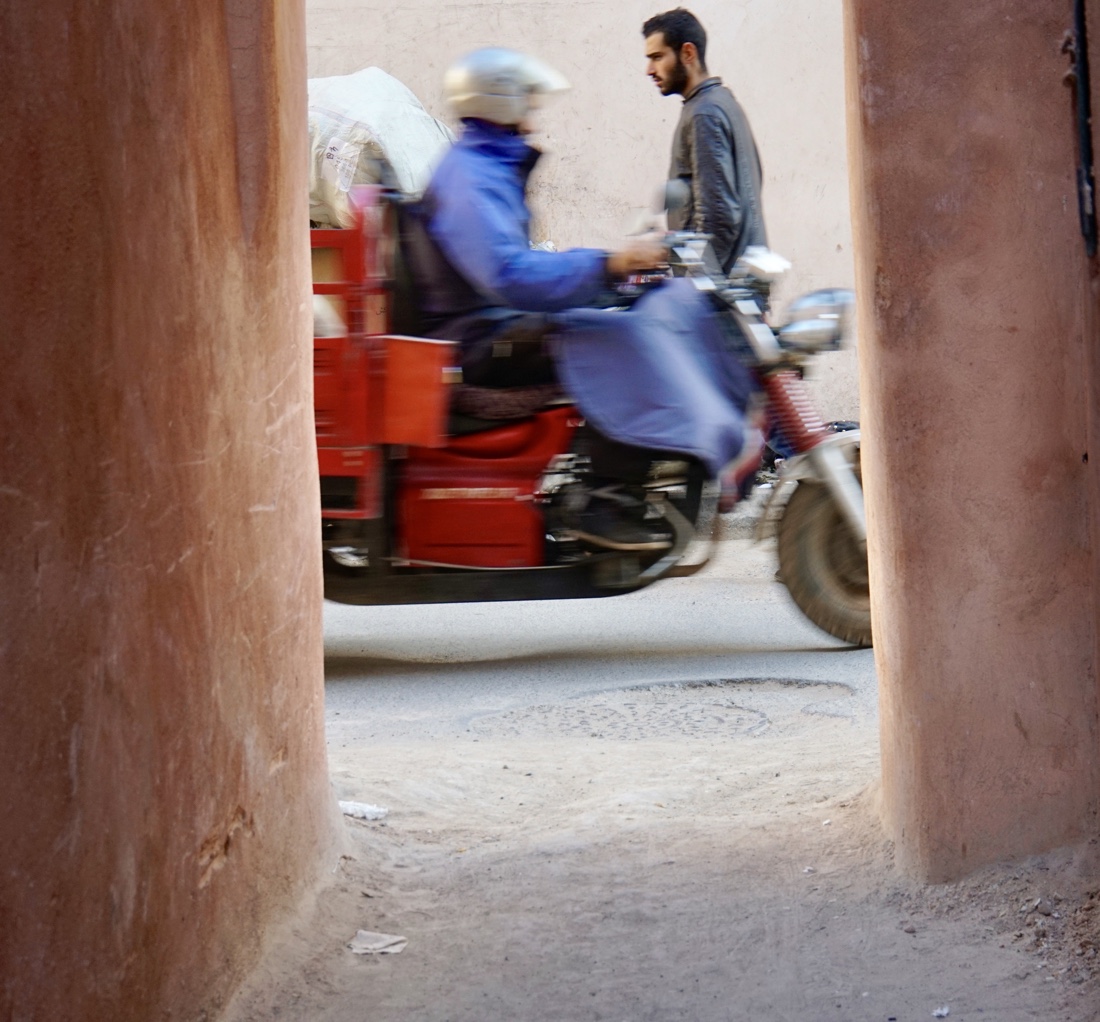 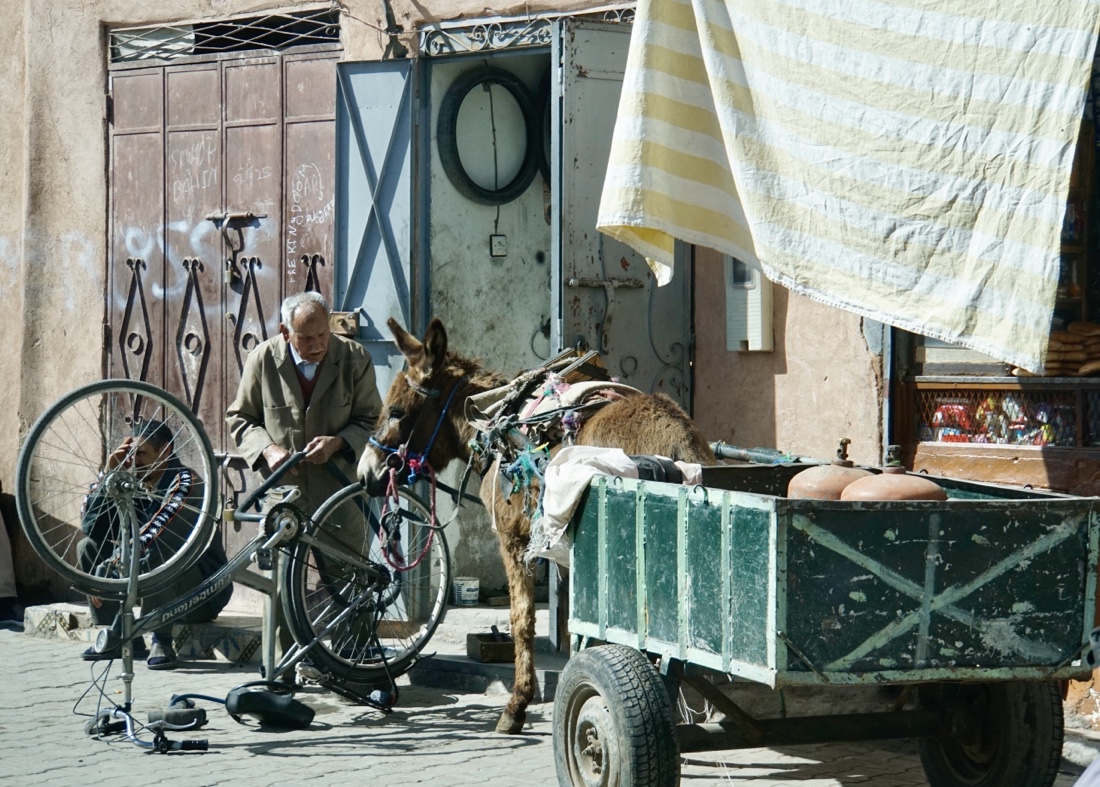 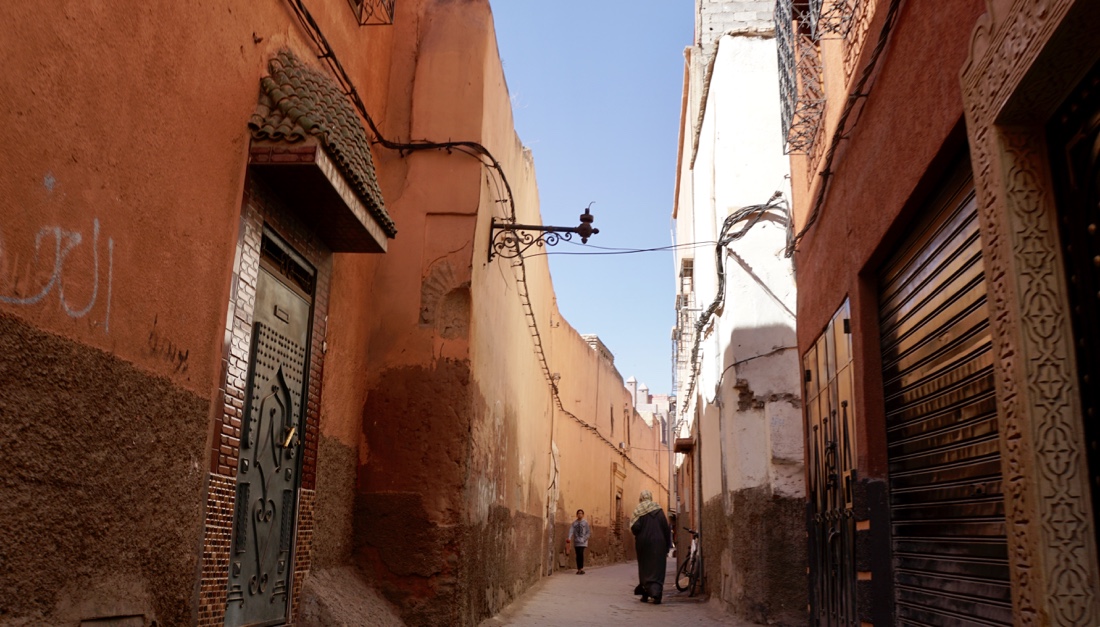 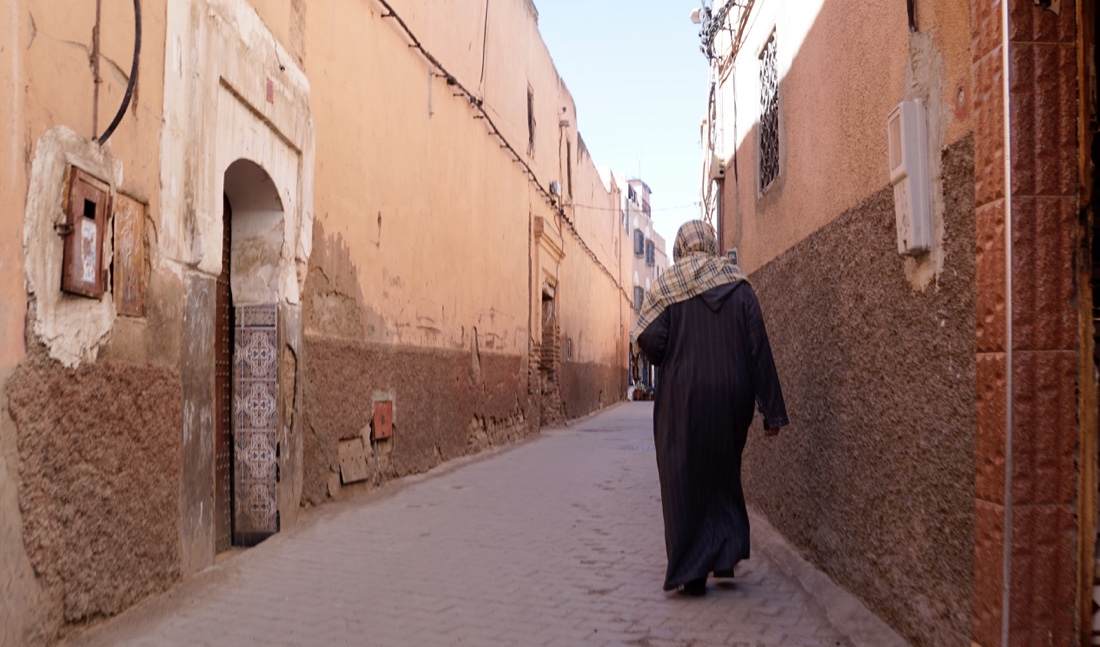 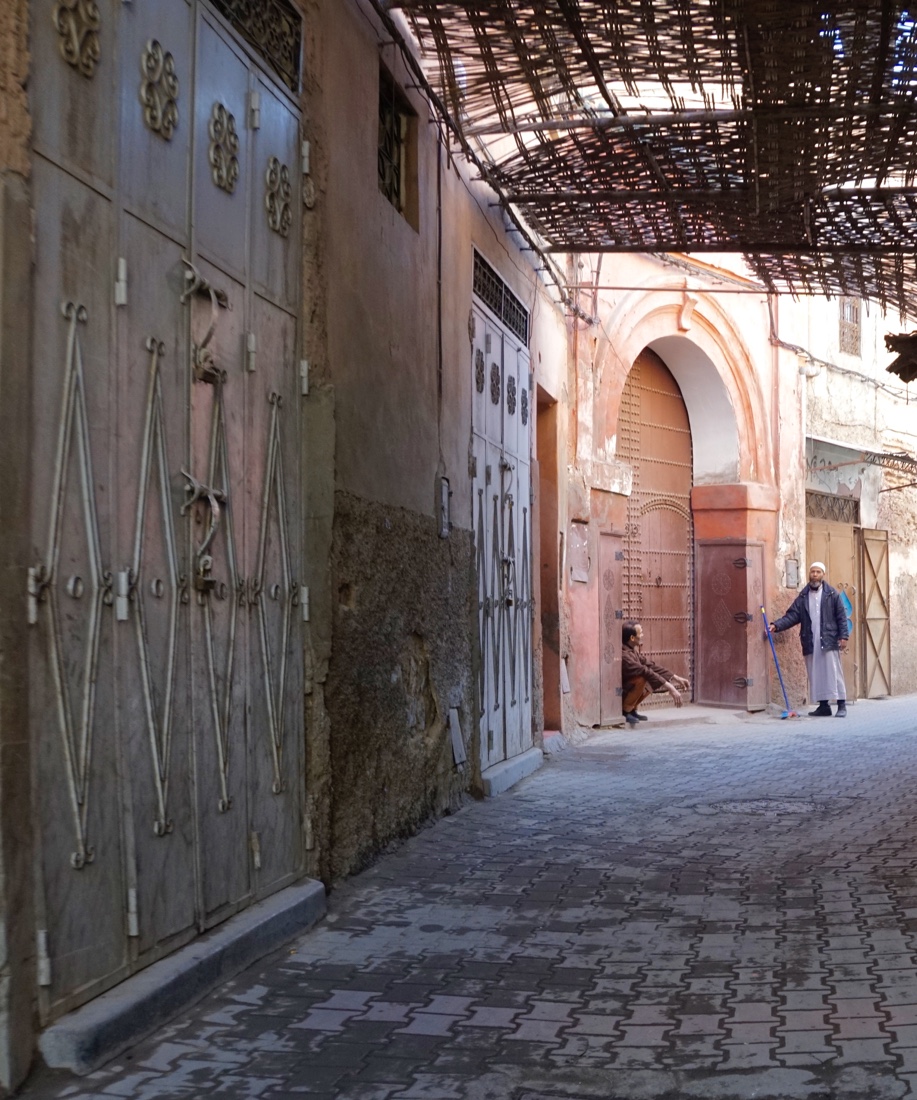 Our first stop, unscheduled, was another synagogue. No services were being conducted, but we enjoyed seeing and walking around the building. Our first stop, unscheduled, was another synagogue. No services were being conducted, but we enjoyed seeing and walking around the building.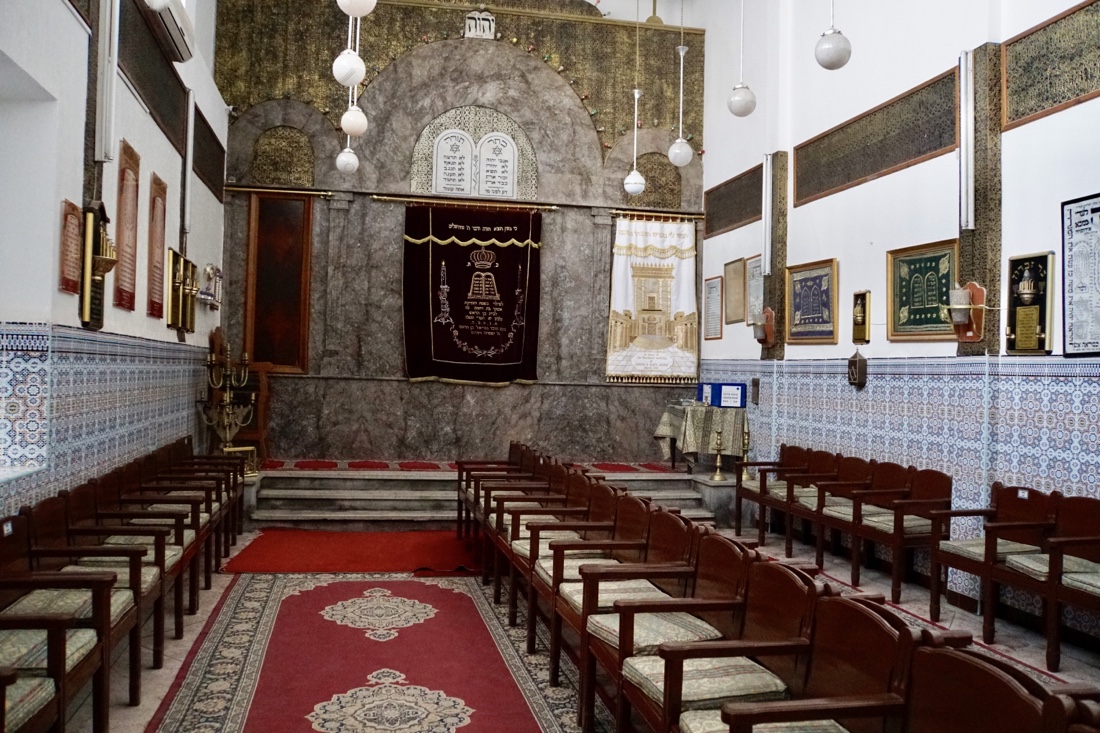
Next we head to the late 19th Century Bahia Palace, which is a wonderful example of Moroccan architecture. Very spectacular ceramic, plaster and tile work.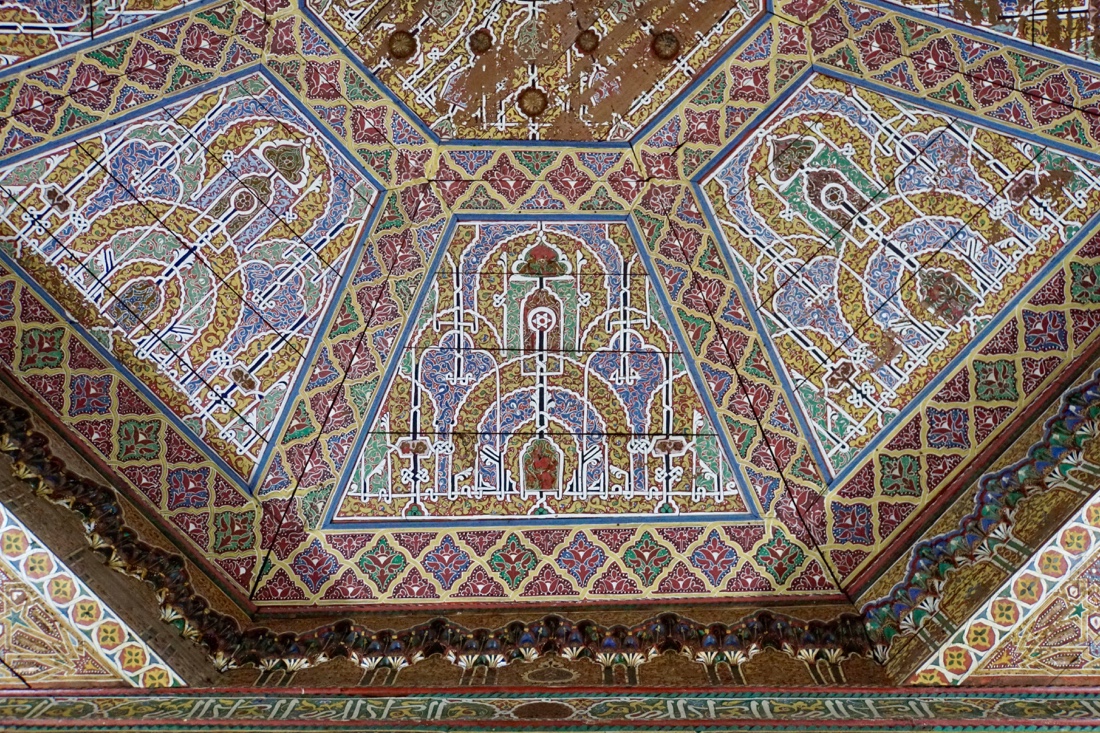 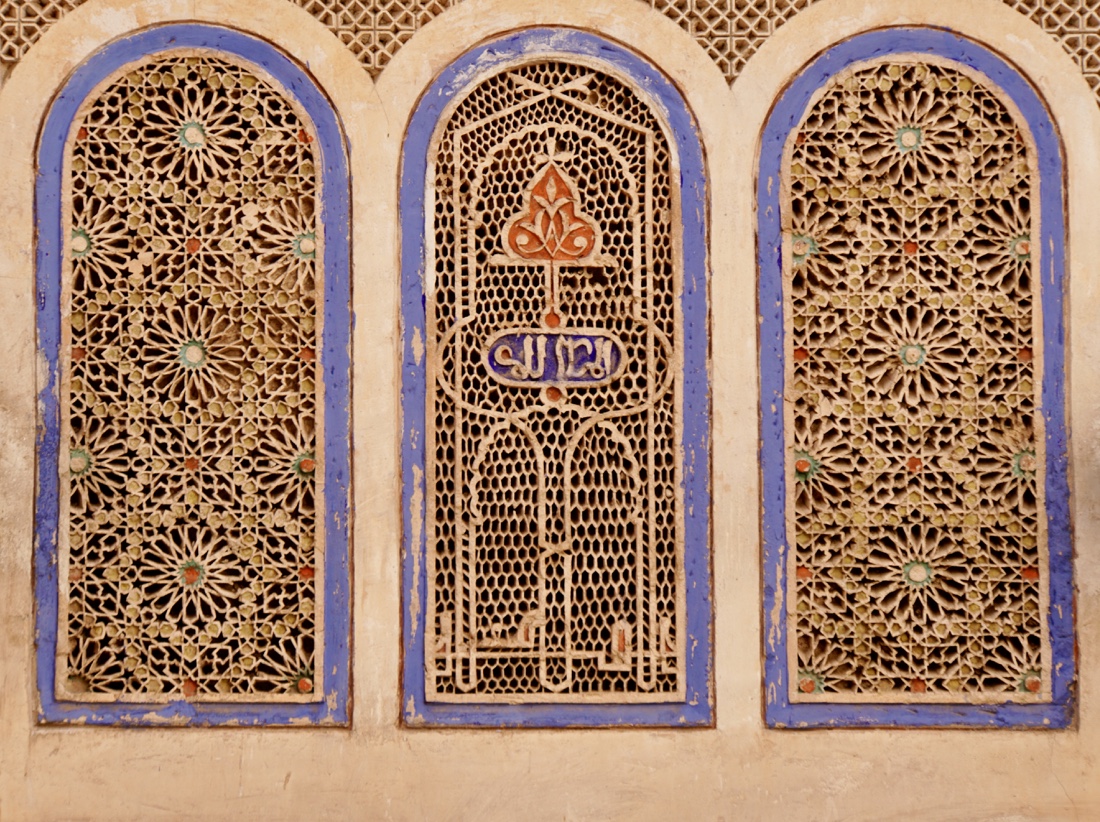 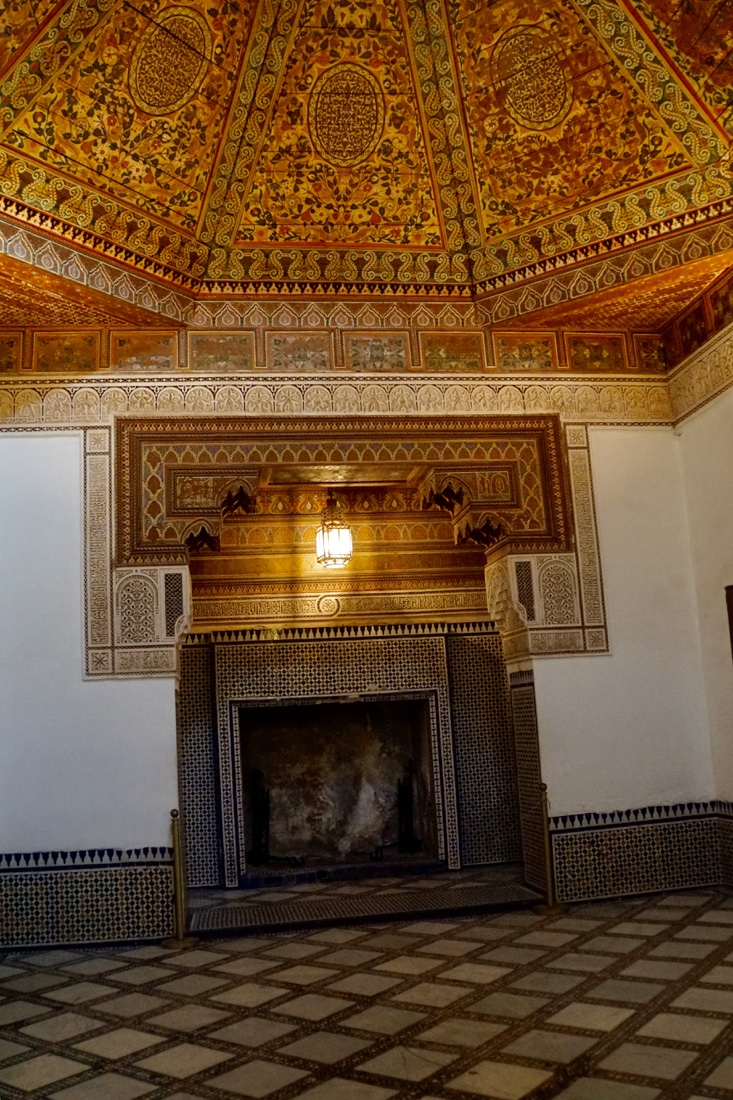 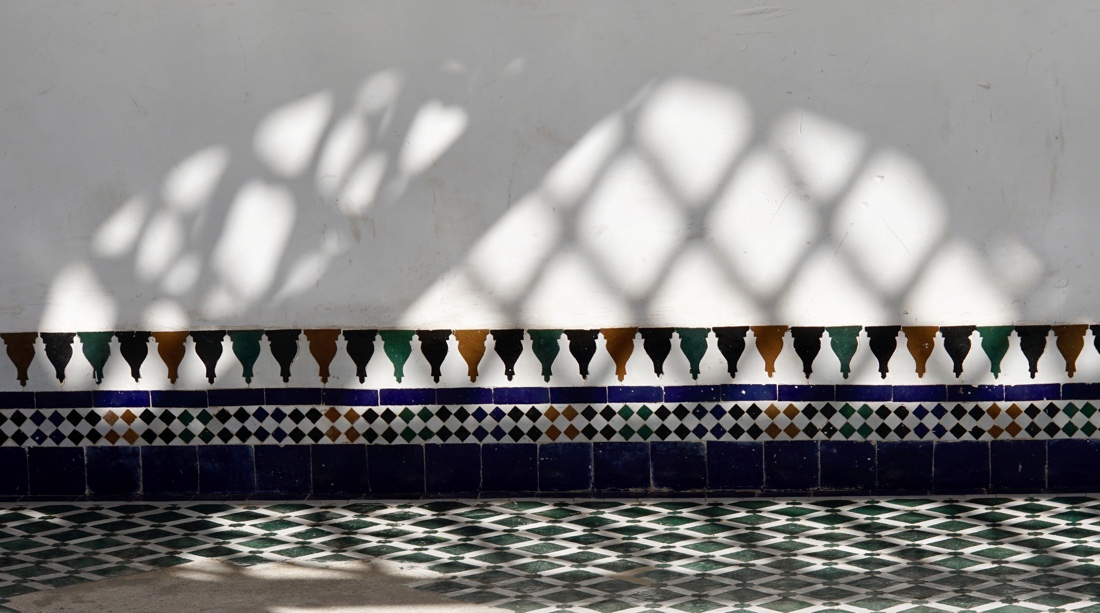
We then head to our motor bikes for an hour and a half sidecar ride around the area. We are able to get up close to local life on these Urals, the Russian knockoffs of the 1938 BMW R71 that seat two passengers per bike, one on the back and one in the sidecar. We are driven around by two French guys. I thought the sidecar rides were great fun, but Carol was less enthused.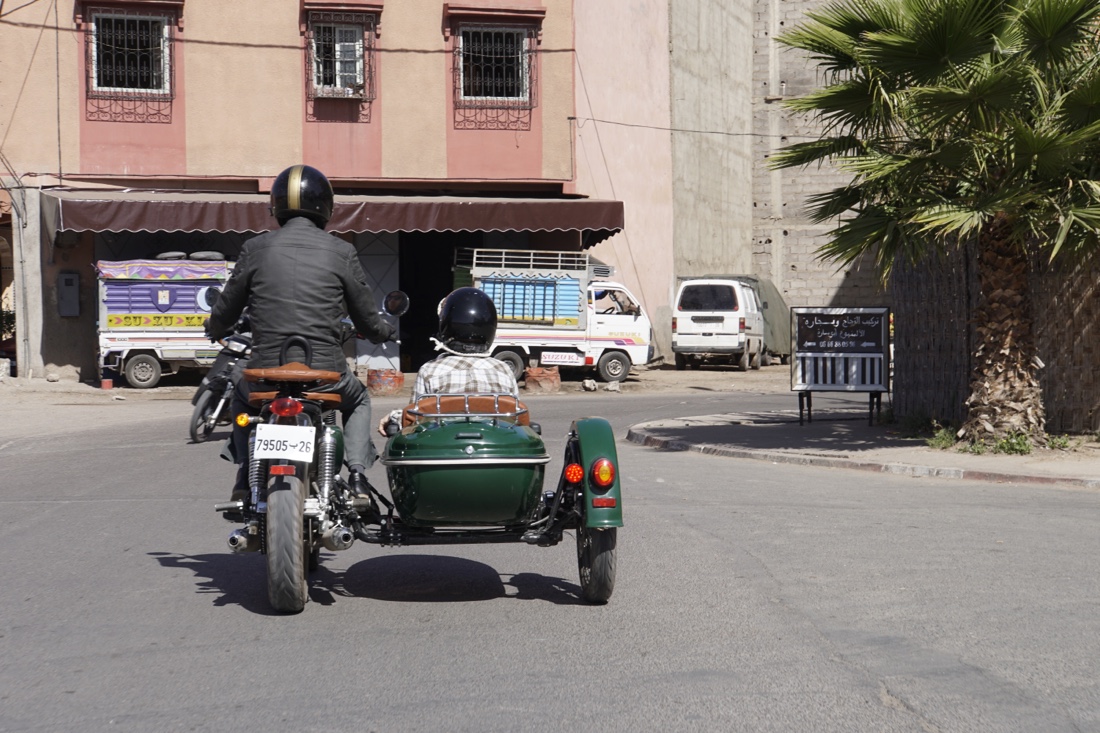 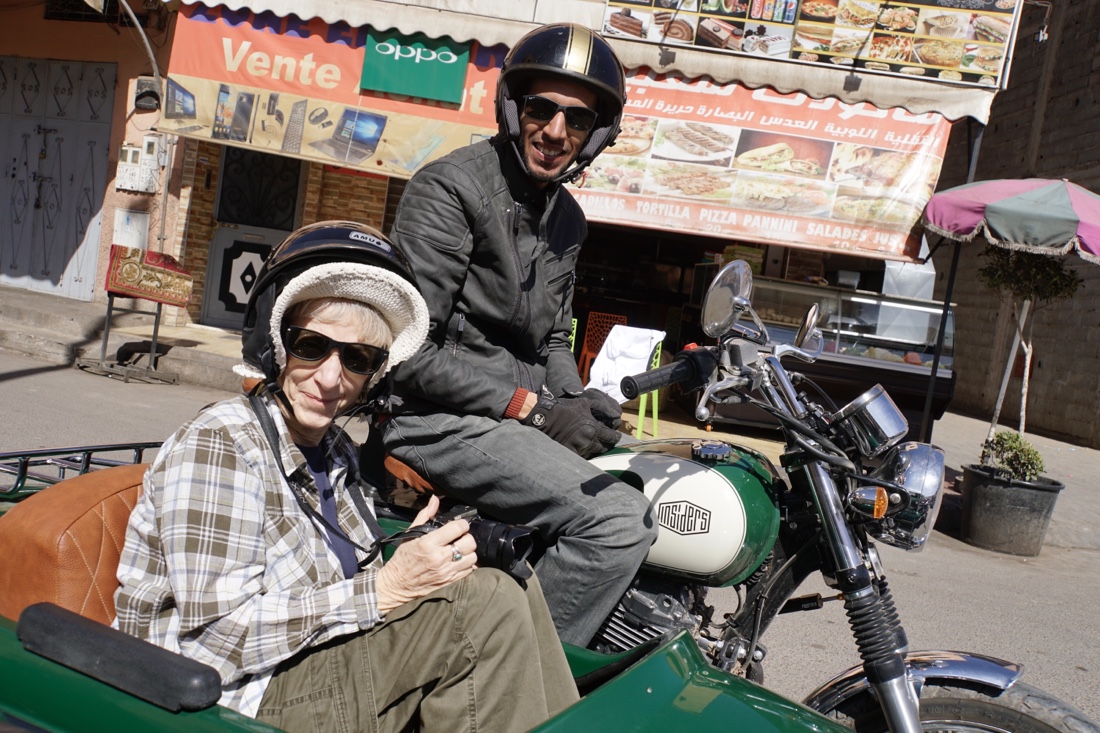
After the sidecar ride we visit a Berber pharmacy and learn about the healing qualities of a number of oils and creams. We purchase some, including one that should make Carol look about ten years younger in photos starting tomorrow and another sure to heal some scalp itching I’ve had.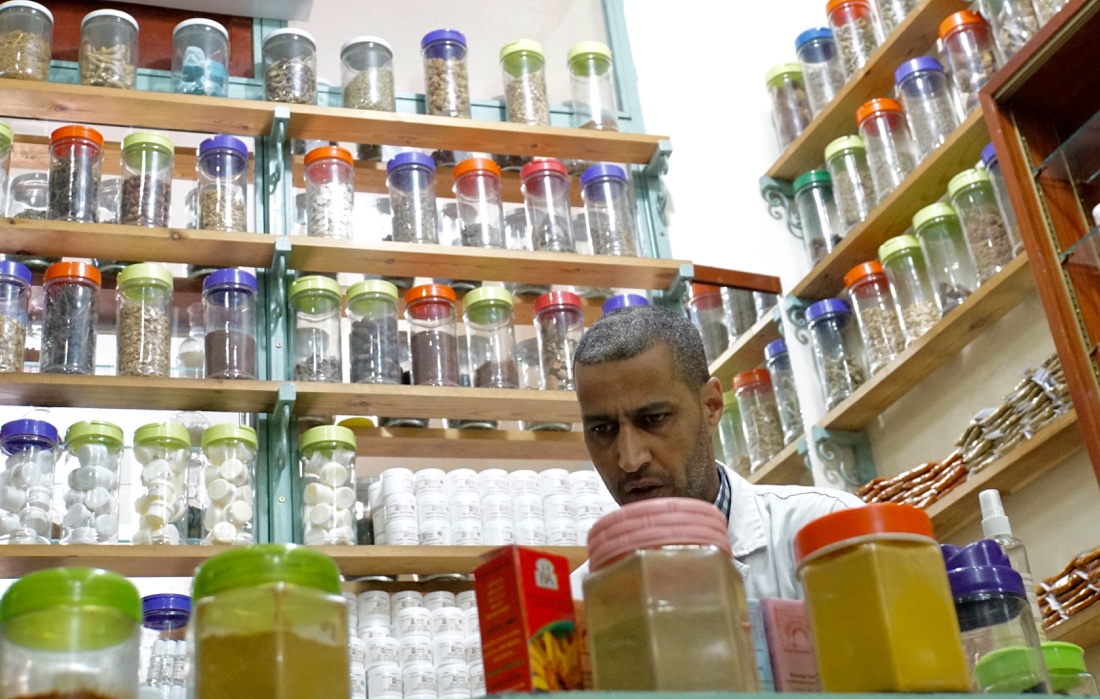
We stop for a very good lunch at a local restaurant with views of the impressive minaret of he Koutoubia Mosque, the largest mosque in Marrakech. The minaret was completed under the reign of the Almohad Caliph Yaqub al-Mansur (1184-1199) and was used as model for Giralda of Seville then for the Hassan Tower of Rabat.
After lunch we have a private showing of new work at a recently converted former bean factory. The Voice Gallery showcases local and international work, mainly by young artists, who come to create and collaborate with each other, extending boundaries and exchanging ideas and utilizing the culture and landscape of Morocco to inspire their artistic endeavors. The charming associate director of Voice Gallery shows us around and explains what the artists are saying in their work. For example, ceramic sculptures of the iconic McDonald’s arches are a commentary on what modern mass production and the search for uniformity and wealth are doing to traditional values. Carol and I are quite impressed with the gallery.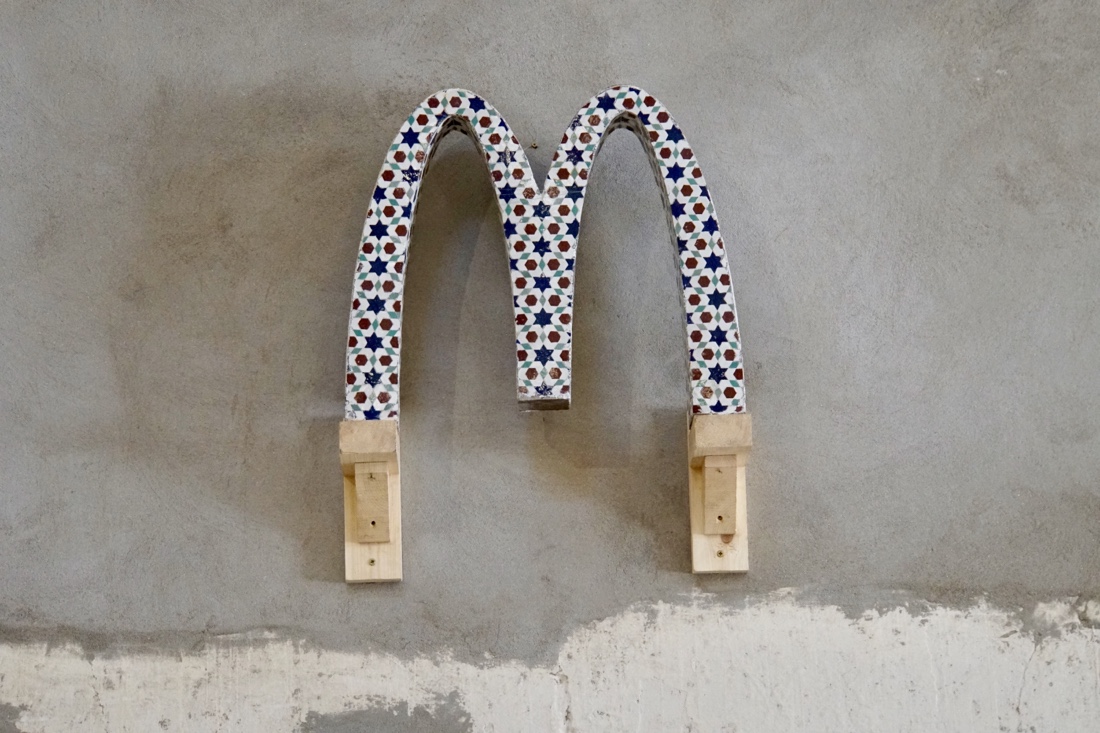
We then visited the residence and atelier of Lahrbi Charkaoui one of today’s celebrated living contemporary artists. Larbi is a Moroccan painter born in 1972. He has a degree in plastic arts, and his artistic approach is based on the hybridization of traditional Arab calligraphy and of fine arts. His characters inundate the canvases, where he occupies the space with his rounded forms. With this approach, Larbi seeks to free the Arabic letter of its orthodoxy to make it a universal sign, that belongs to cosmogony, inscribing it in an abstract kind of optical space . He does his own supports, carefully preparing the canvas, the leather or the wood. He creates striking chromatic compositions, combining furor and delicacy, darkness and acidity, brilliantly. Larbi’s work has been the object of about fifteen solo exhibitions and about twenty group exhibitions, mainly in Morocco and France.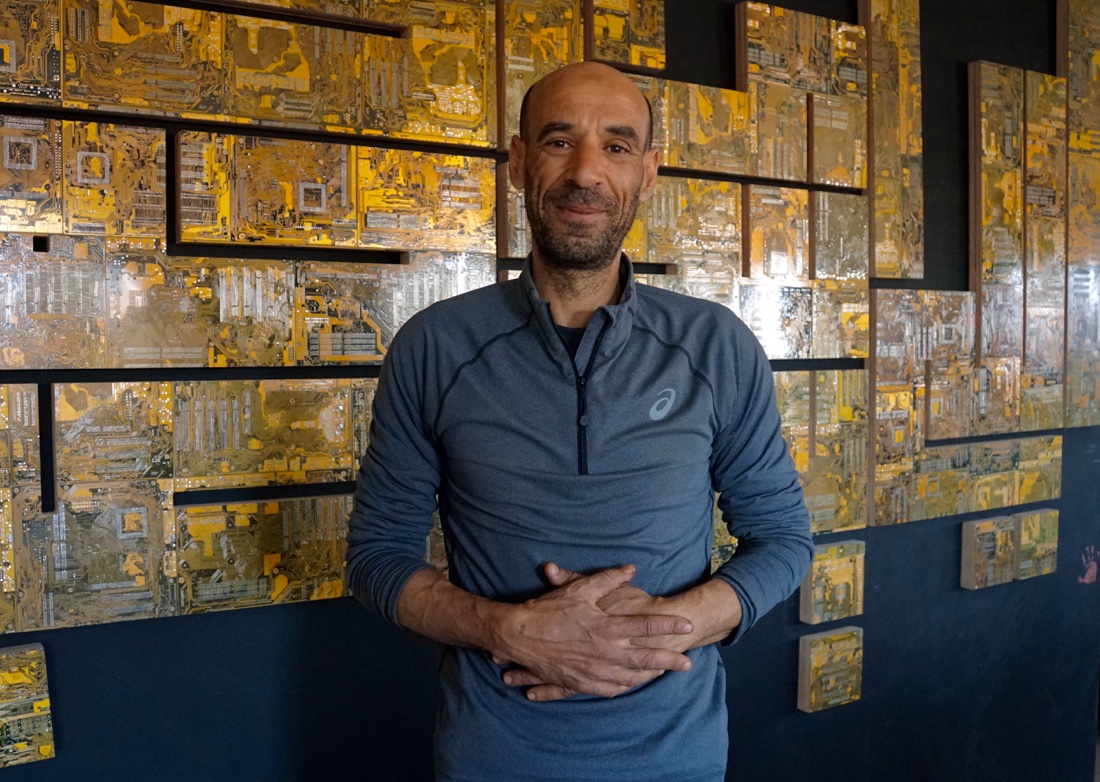
We return to the hotel to relax for a couple hours before meeting two,friends from Evanston, Maureen and Dan Flannery, who happen to be visiting Marrakech. We have wine in a courtyard of our riad, then walk a couple blocks for an excellent dinner Le Foundouk, a restaurant Carol found online, back in a Chicago.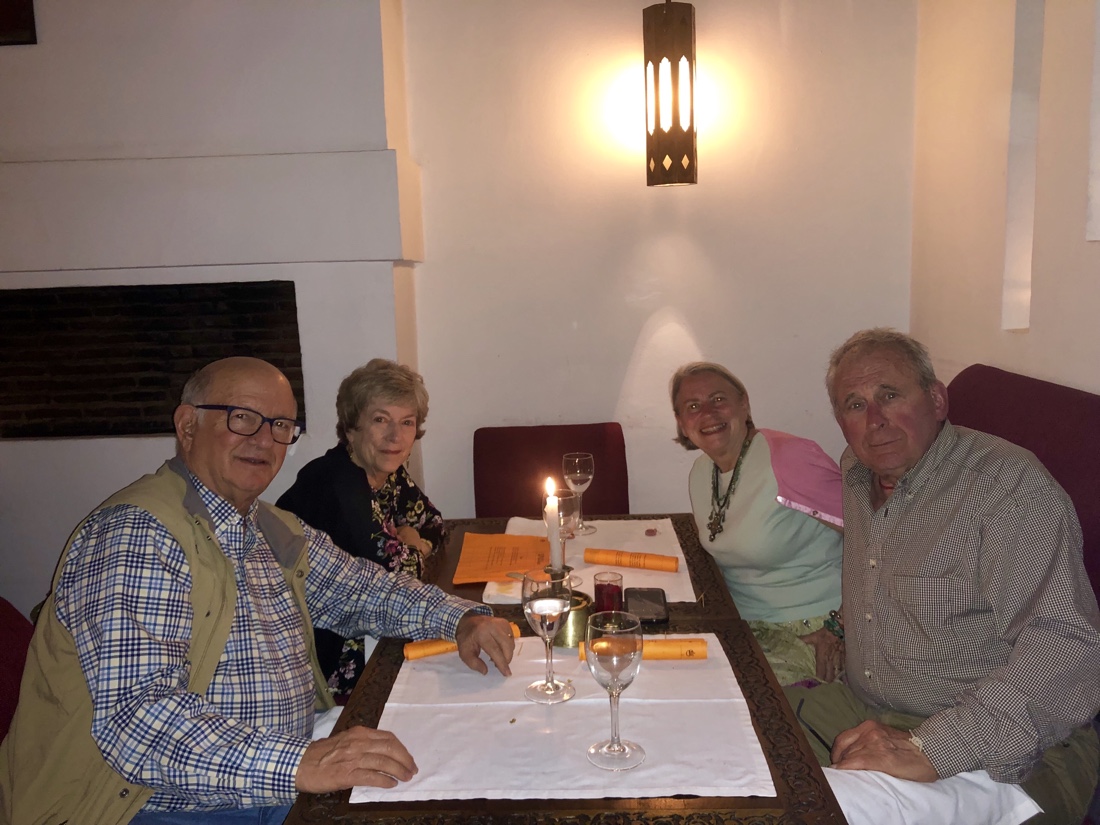
Carol and I return to the hotel to read, blog and retire.
March 10
In the morning, after breakfast, Carol and I go our separate ways.
I do a photographic tour that focuses on exploring photography within a Muslim culture and understanding the place that photography takes in an environment that appears both alluring yet mystical at the same time. The tour is tailored to my interests and is designed to capture people within the culture of the medina that can be difficult if done alone (I learned that yesterday). A professional local photographer, like Omar Chennafi, can help get the best locations, light and subjects.
Omar, 33, is quiet and unassuming. We move at a very leisurely pace. No rush. He shares a number of tips that help me to get better photos today. As useful as his photographic guidance proves, at least as enjoyable were the discussions we had about photography and art when we took breaks. Omar is working on a book documenting Fes in photos. I’m able to share experiences that Carol and I had in publishing our books. He’s also interested in the intersection between art and society so I discussed some work Carol and I may be getting involved in with original music written for four voices and Japanese calligraphy and painting.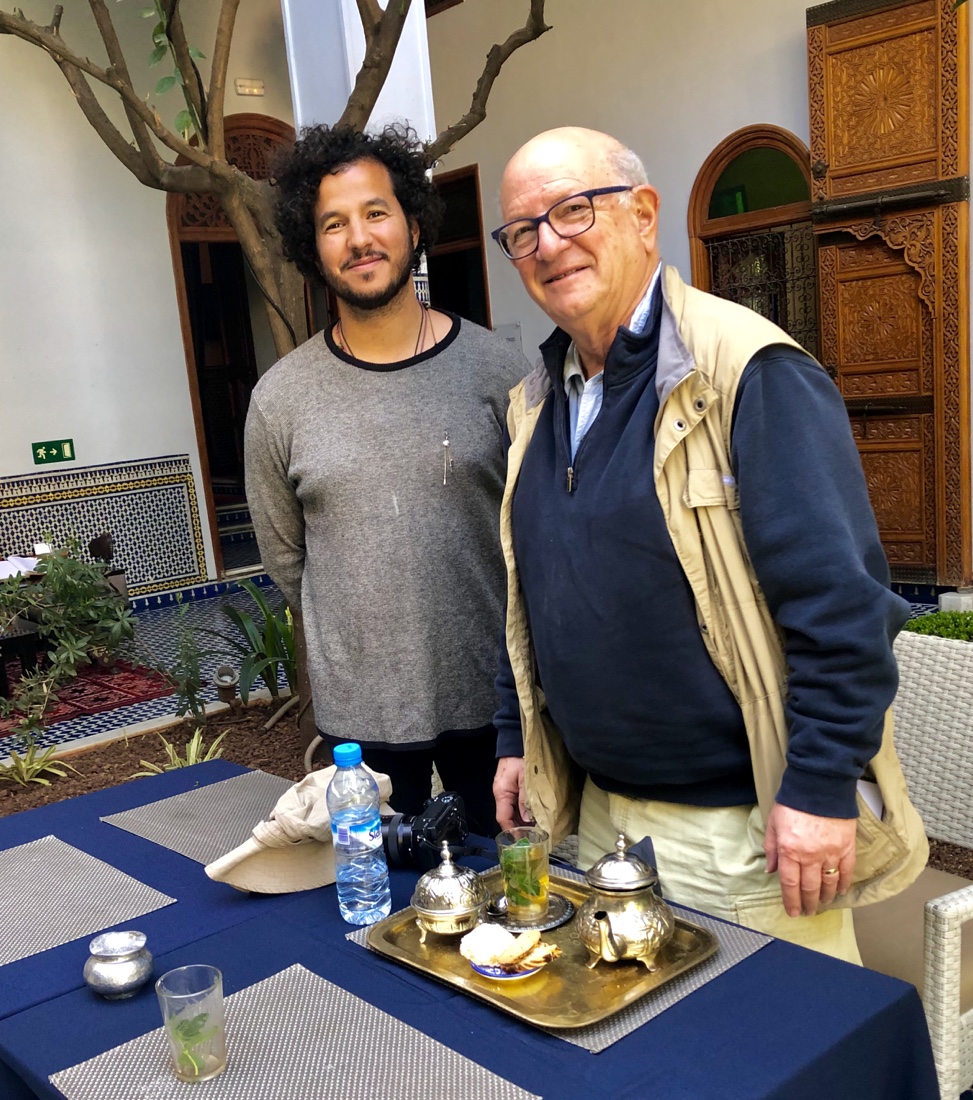
Omar has become one of Morocco’s most well-known and loved professional photographers’” according to Moroccan World News. His photography has been featured in Time Magazine, The Huffington Post, and other publications worldwide. As well as being the official photographer for the World Sacred Music Festival in Fes, he works to create photography and art projects within the community to share his passion and skills. He is the curator of the Fes Gathering bringing international artists to Fes to join their African counterparts. The Fourth Edition in 2019 explored the role and challenges of arts with social responsibility in Morocco and the Arab world. As a well-known face in the Fes medina, Omar is able to open up the opportunities for portrait photography in the otherwise private world of the medieval alleyways.
Here are some photos I took, with Omar’s guidance this morning.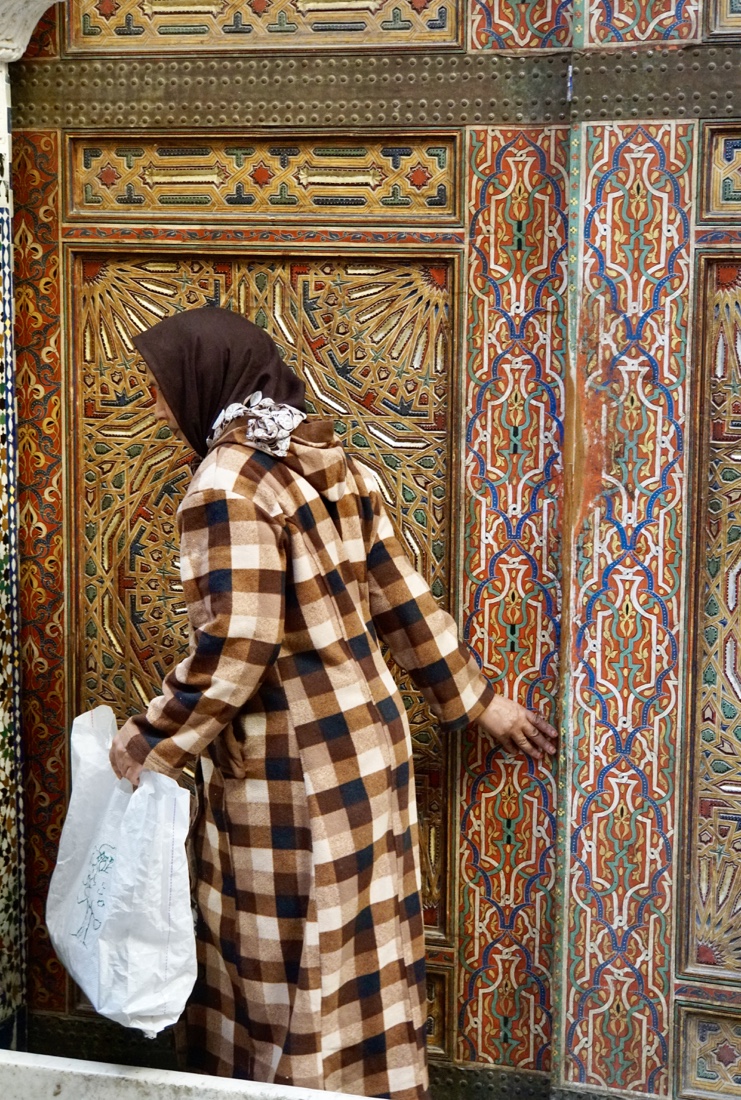 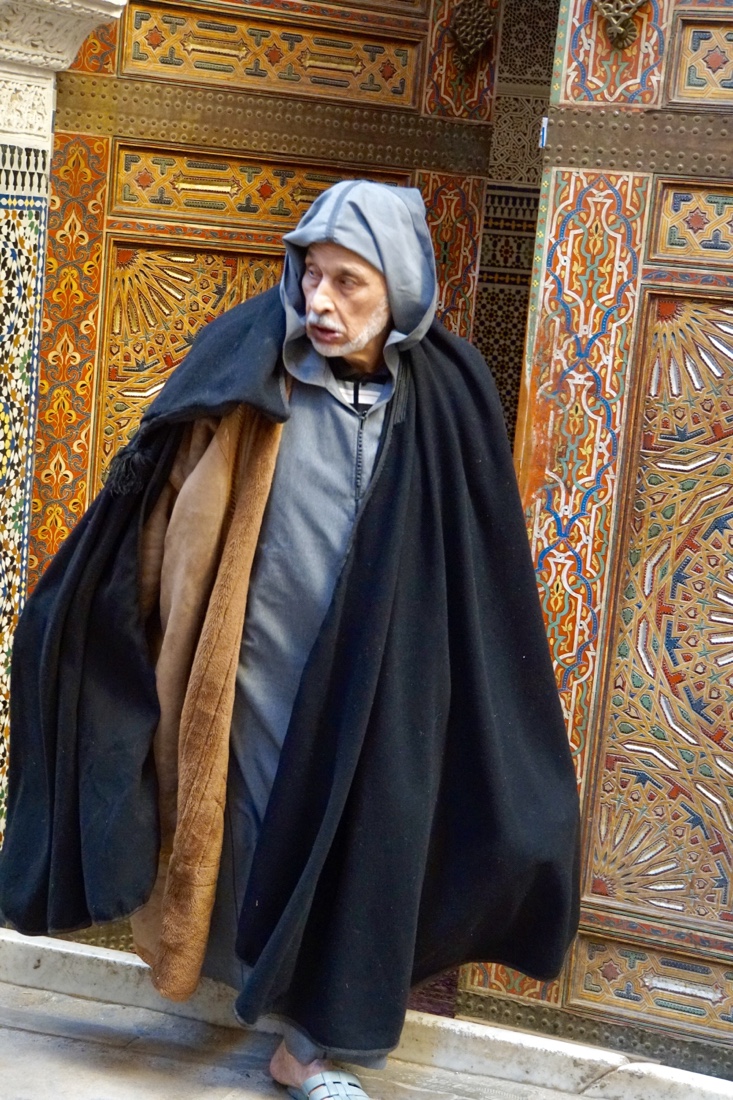 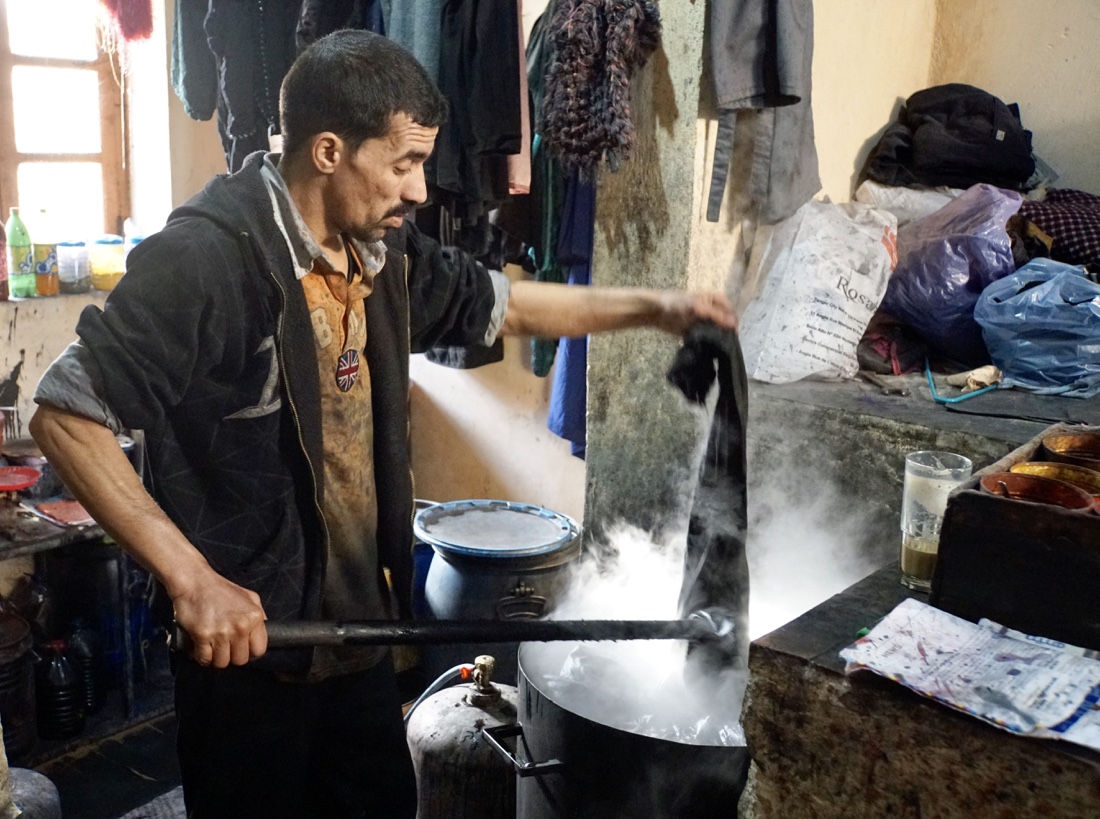 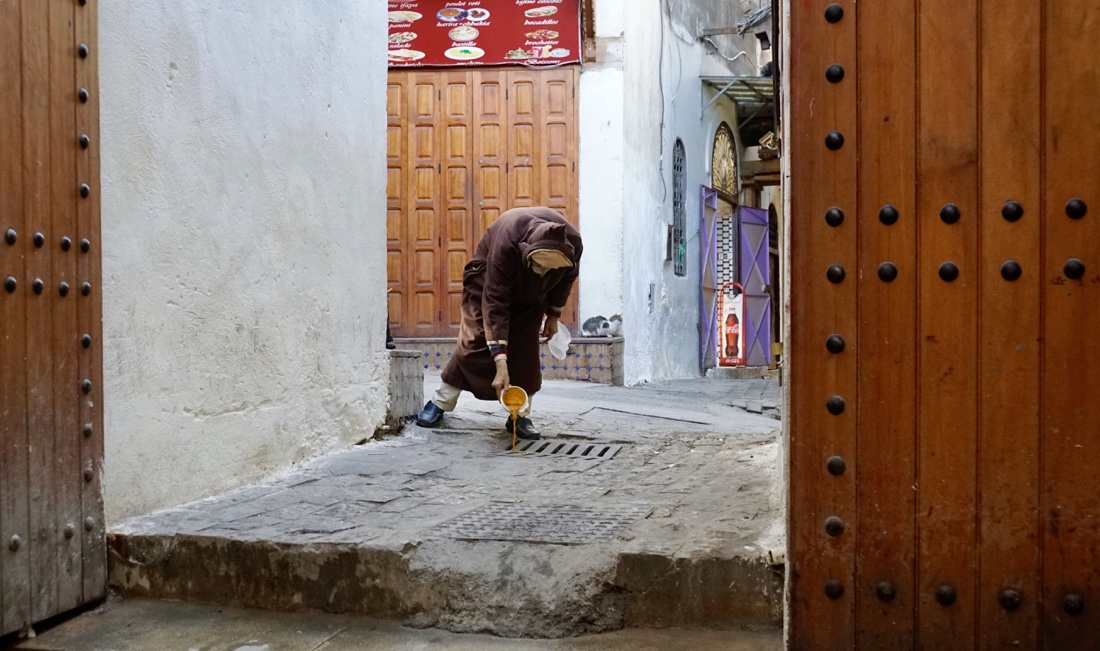 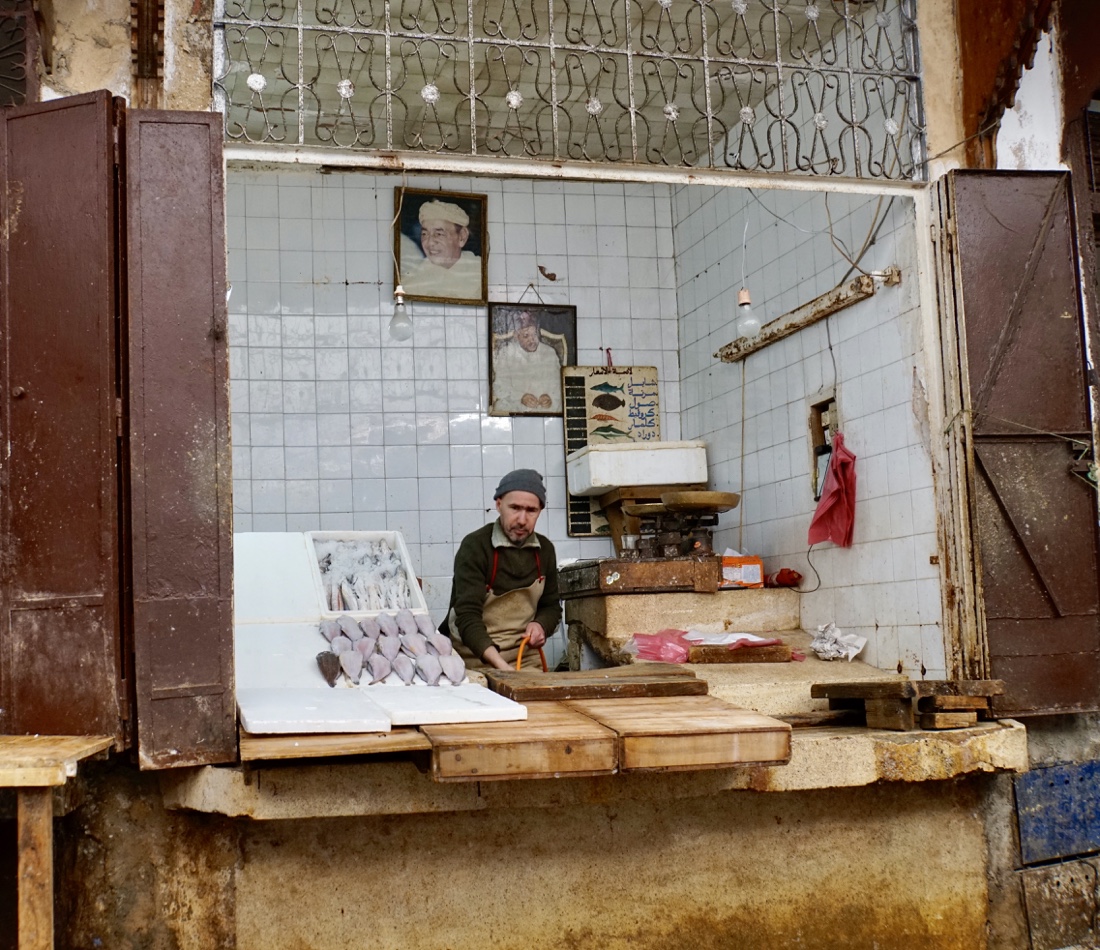 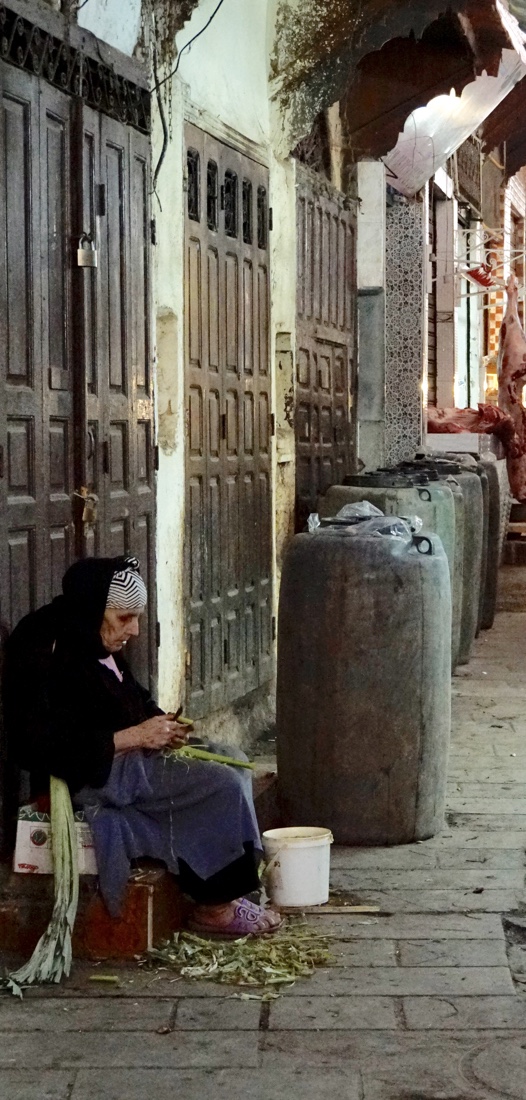 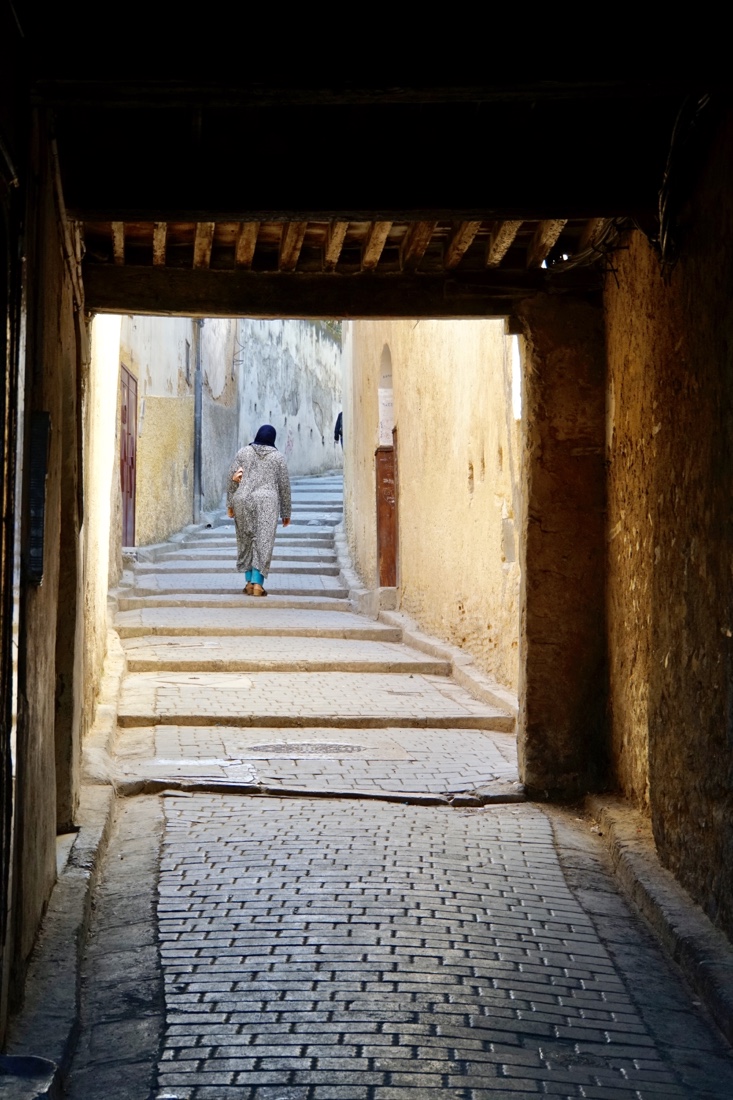 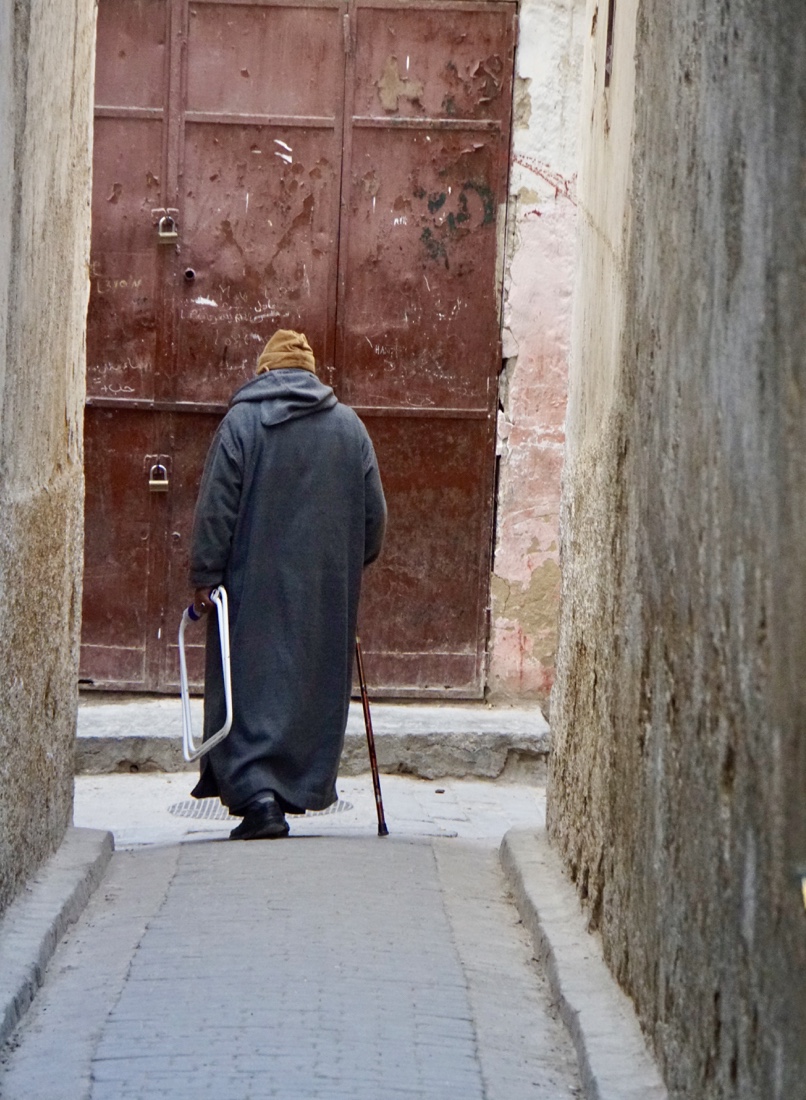 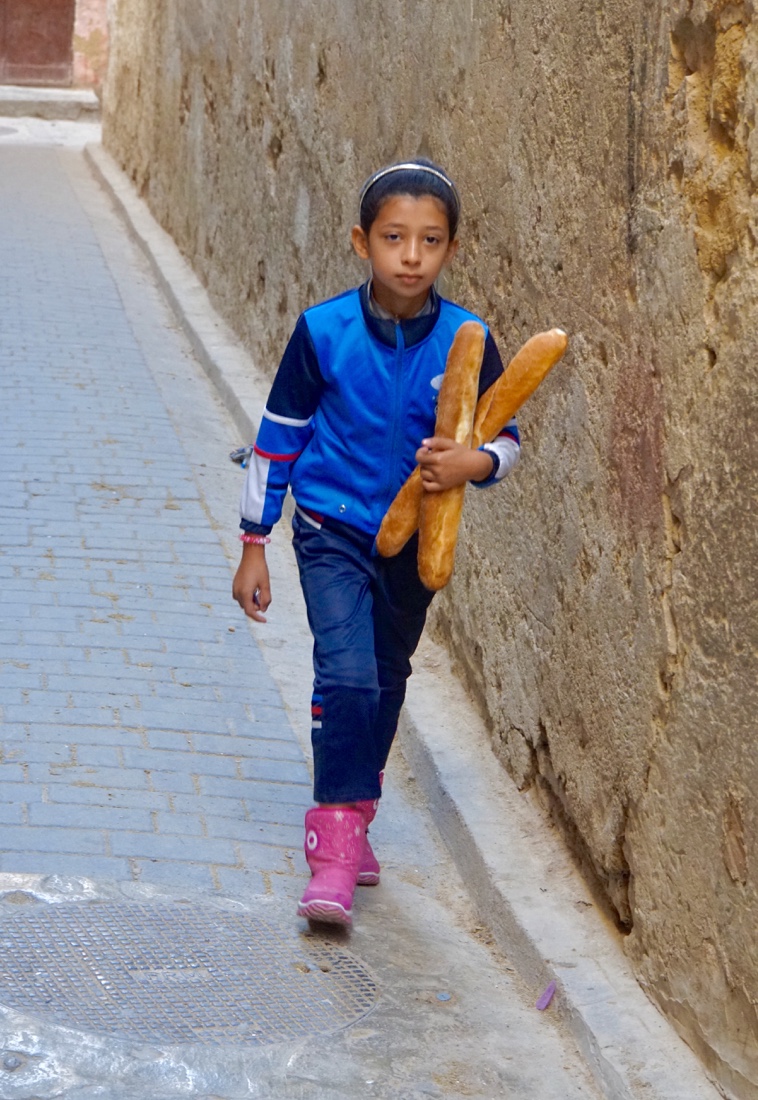 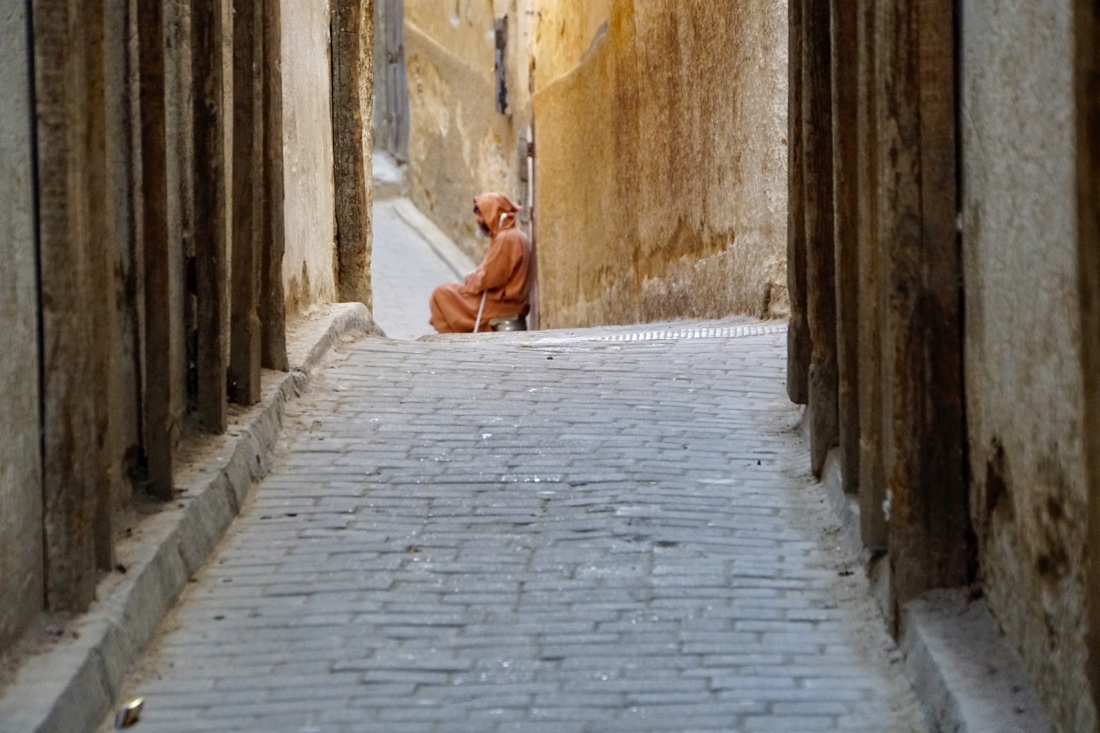 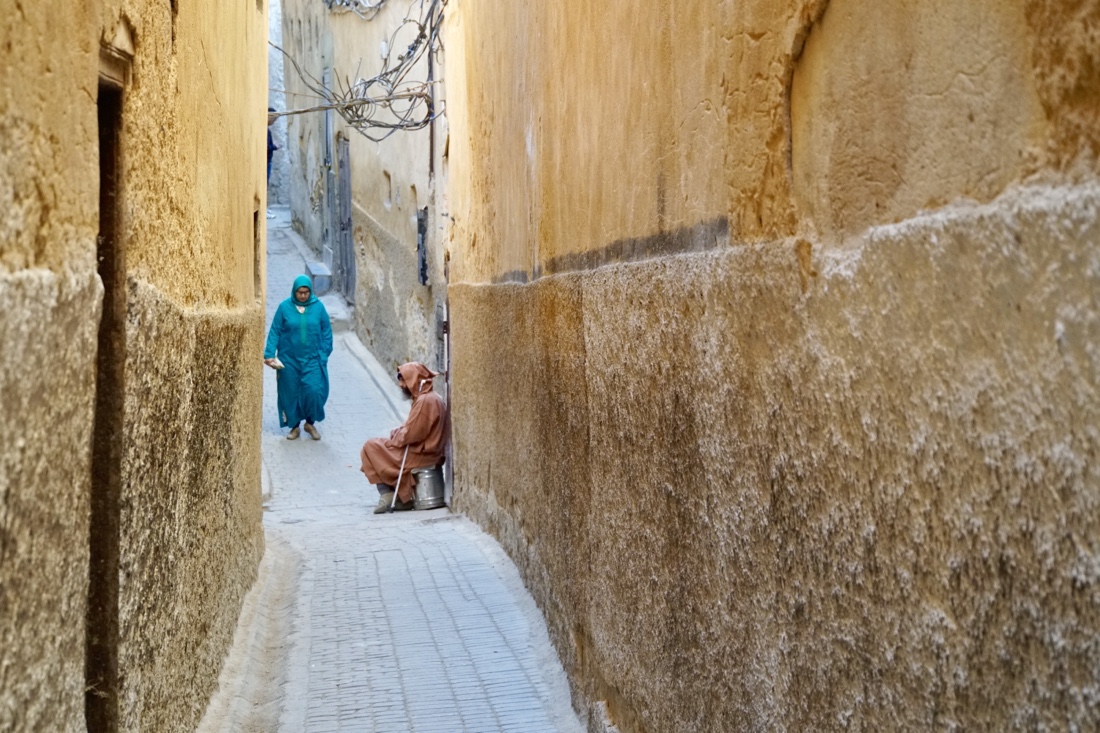 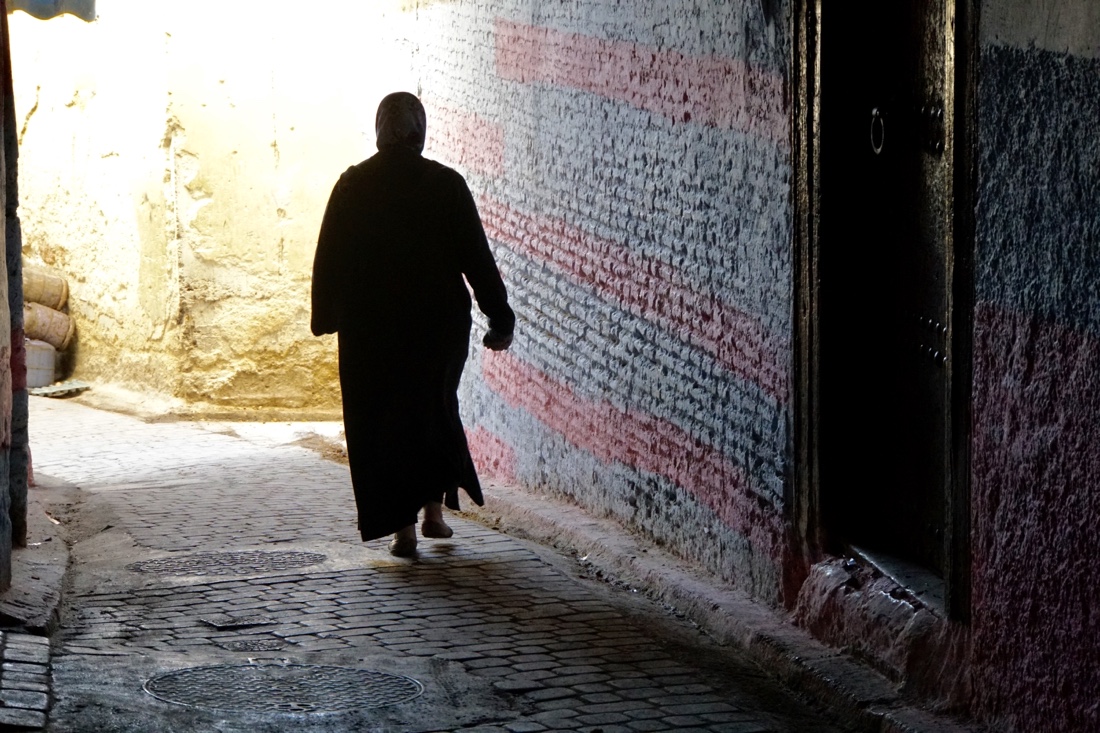 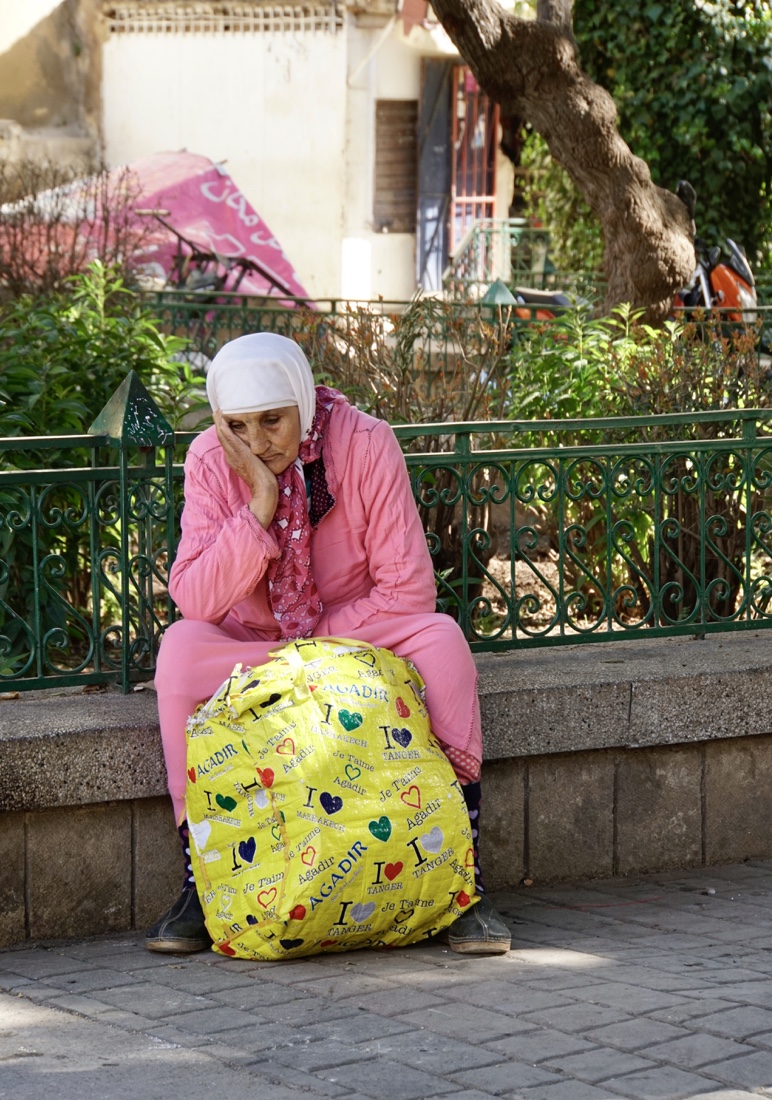 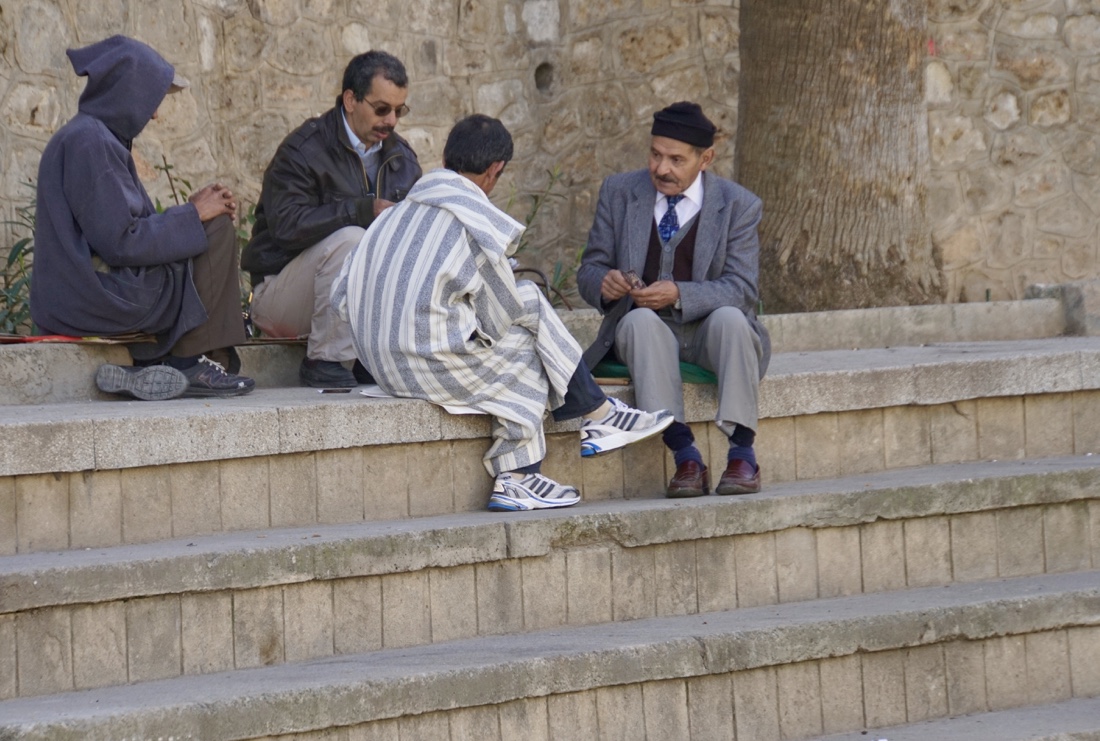 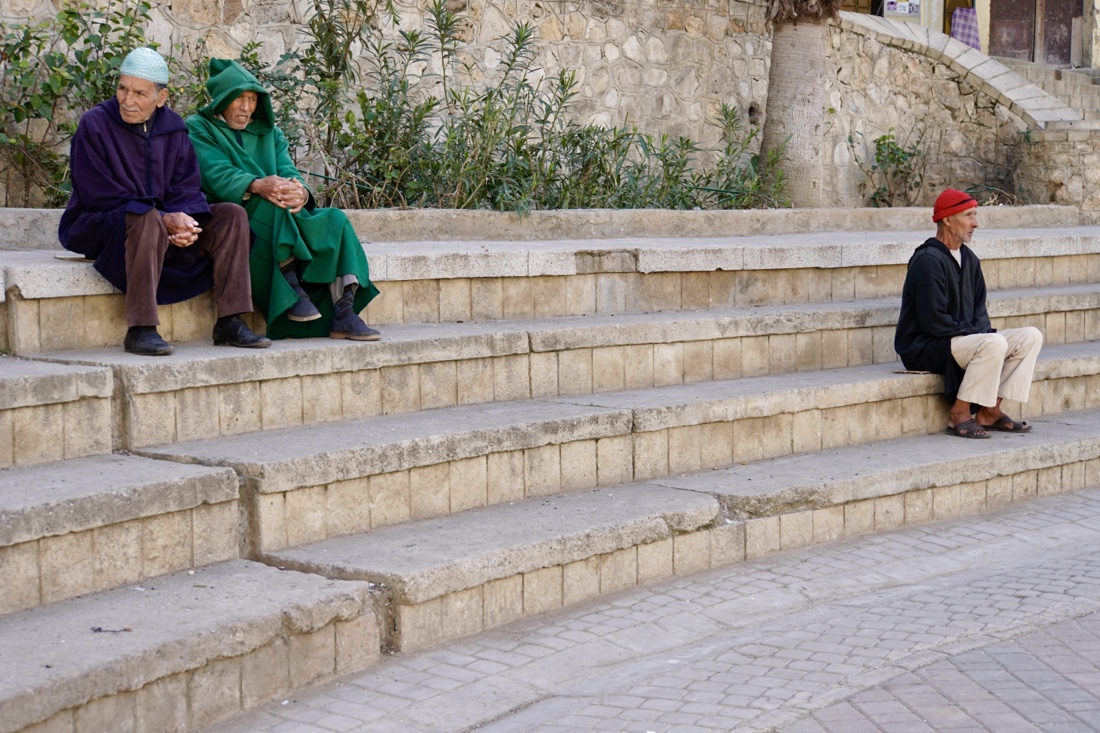 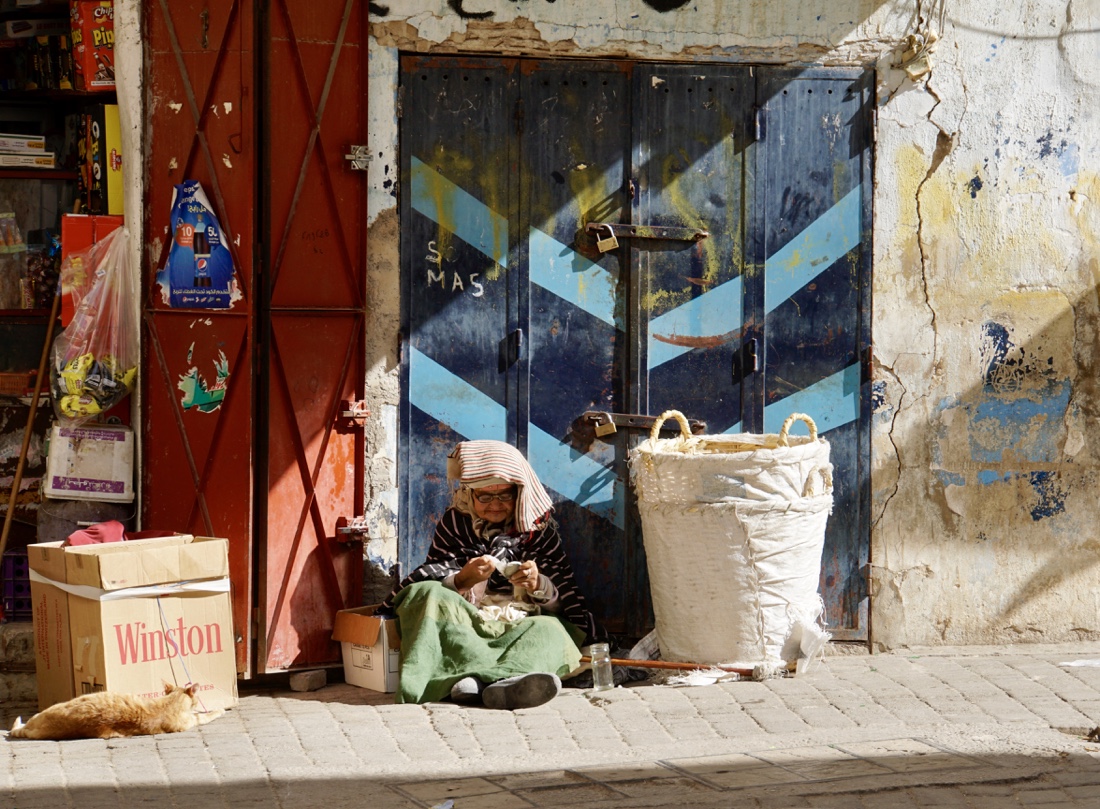 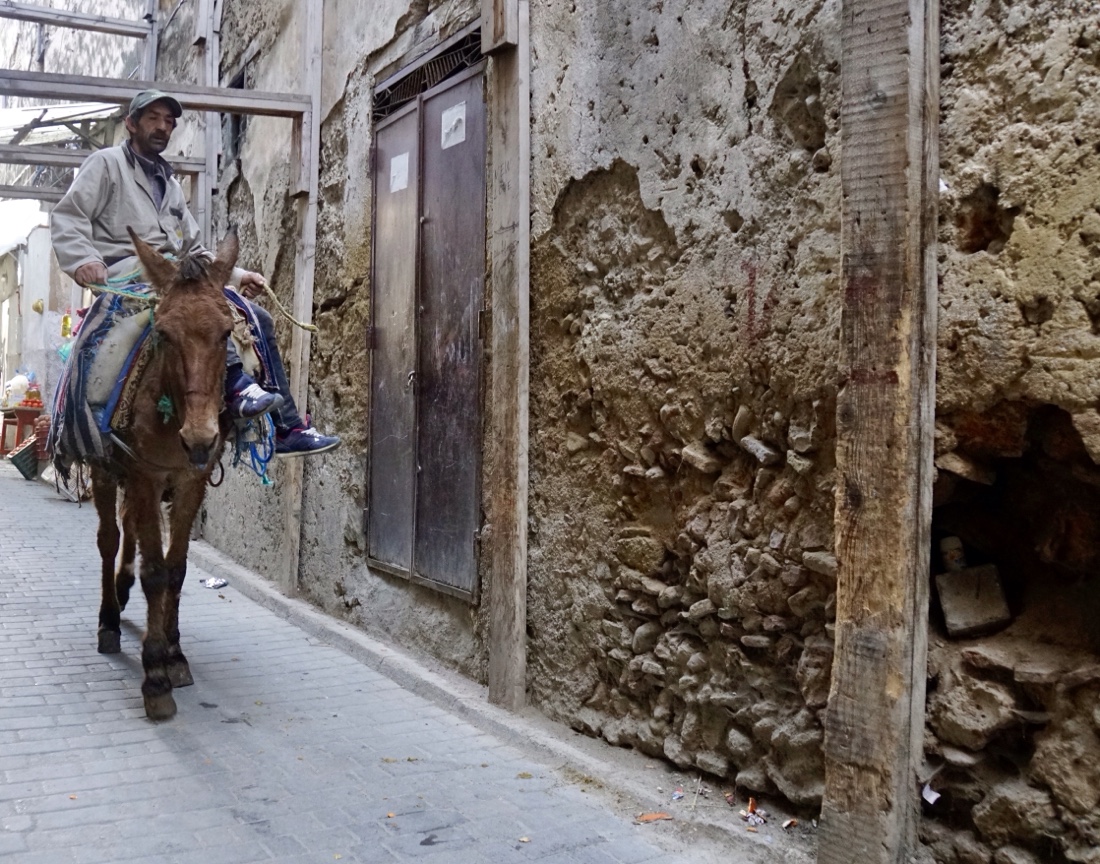 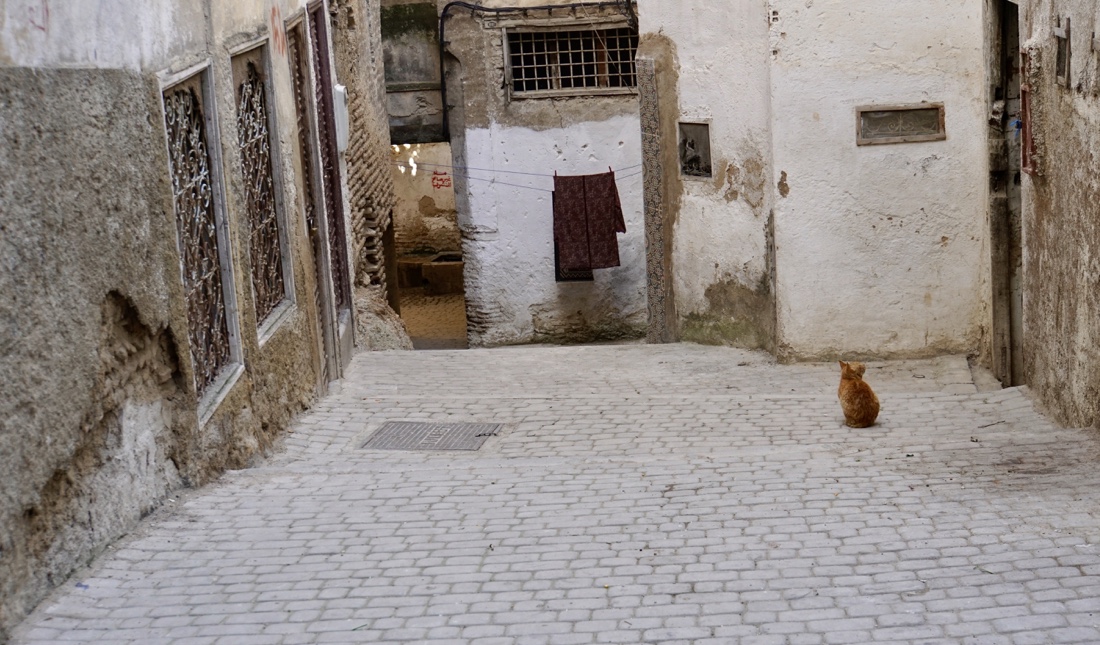 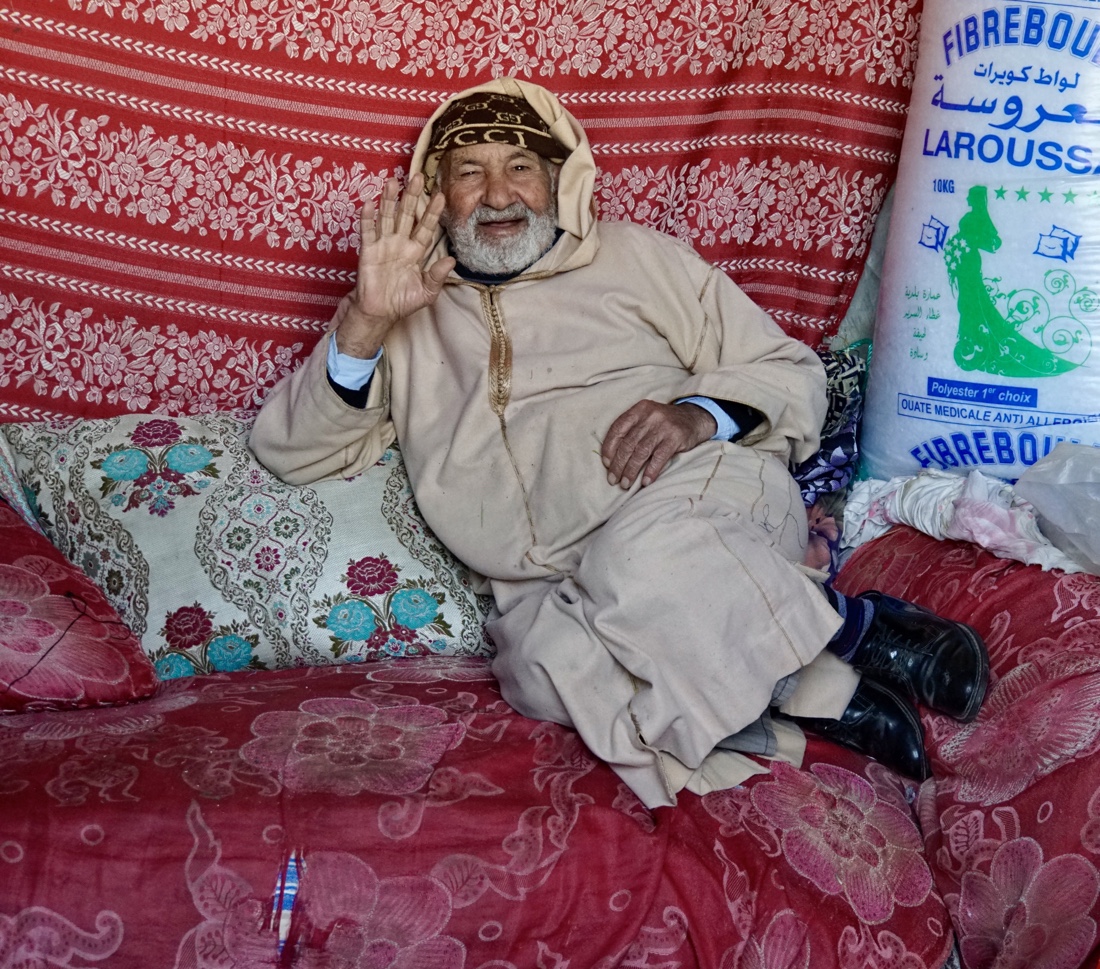 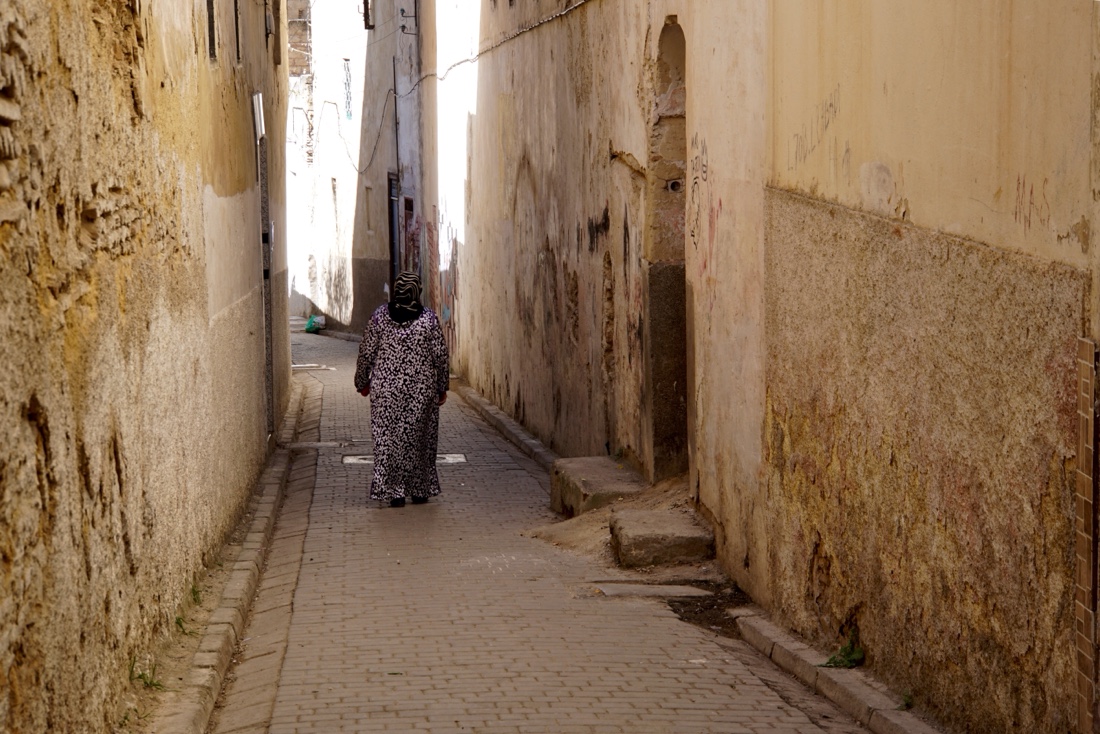 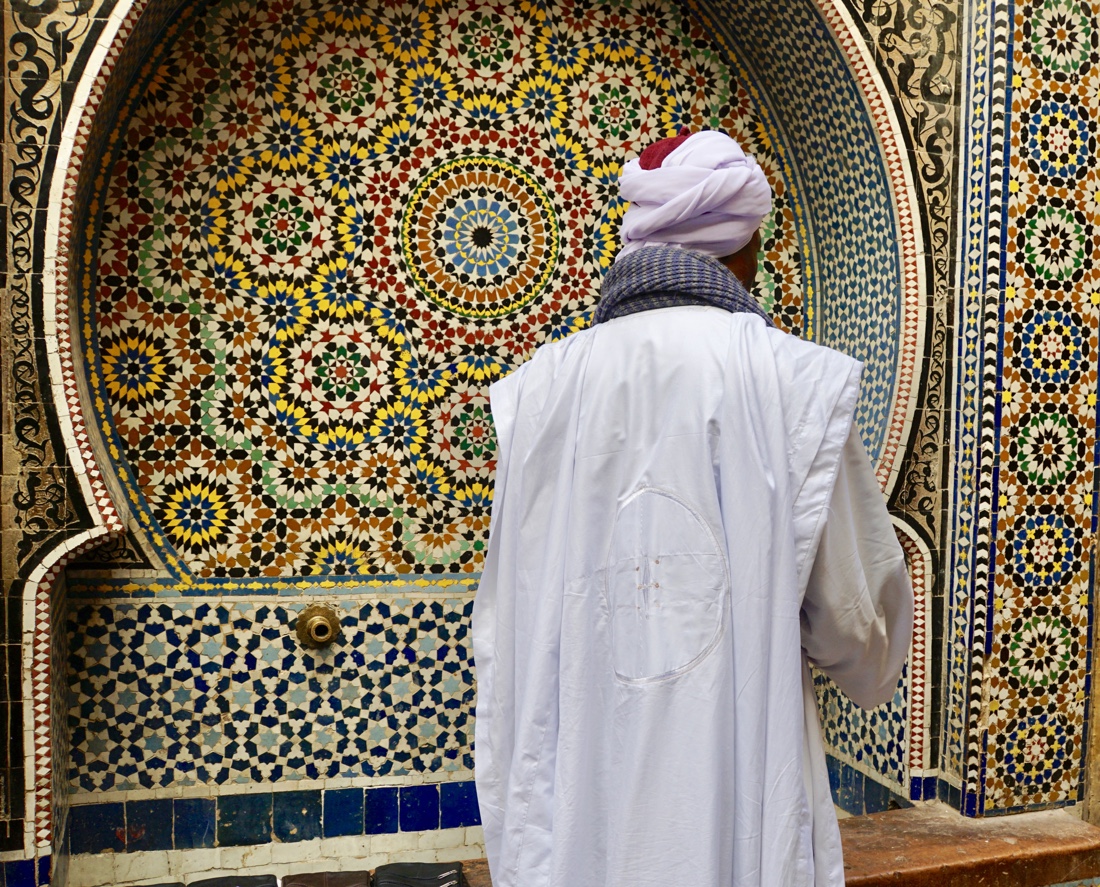 Carol, meanwhile is brought into the world of ancient beauty secrets and where it all began in a session at a private home that unearths traditional methods and natural beauty. She is accompanied by a female member of the staff, who translates and facilitates. Carol, meanwhile is brought into the world of ancient beauty secrets and where it all began in a session at a private home that unearths traditional methods and natural beauty. She is accompanied by a female member of the staff, who translates and facilitates.
Midday, we meet back at the hotel, relax a bit and the are driven to the Fes airport, where we take a 40-minute flight to Marrakech. At the airport, we are met by the two Youneses, who have driven to Marrakech, and taken our bags with them.
We drive straight to the square, the center of activity for Marrakech. We walk around the square and through some of the souk, before going to a rooftop coffee shot, where we can photograph some of the things we’ve seen below–snake charmers, monkeys with diapers, horse-drawn carriages, food of all kinds, gambling hustles, African singers, all for the benefit of the huge tourist population that Marrakech draws.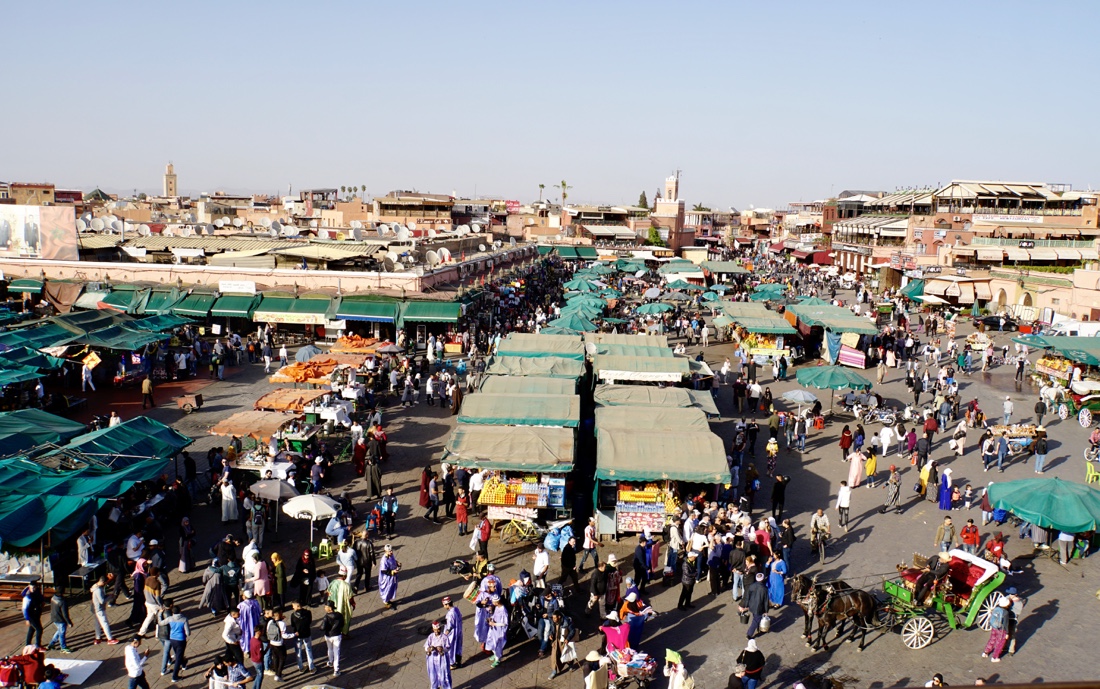 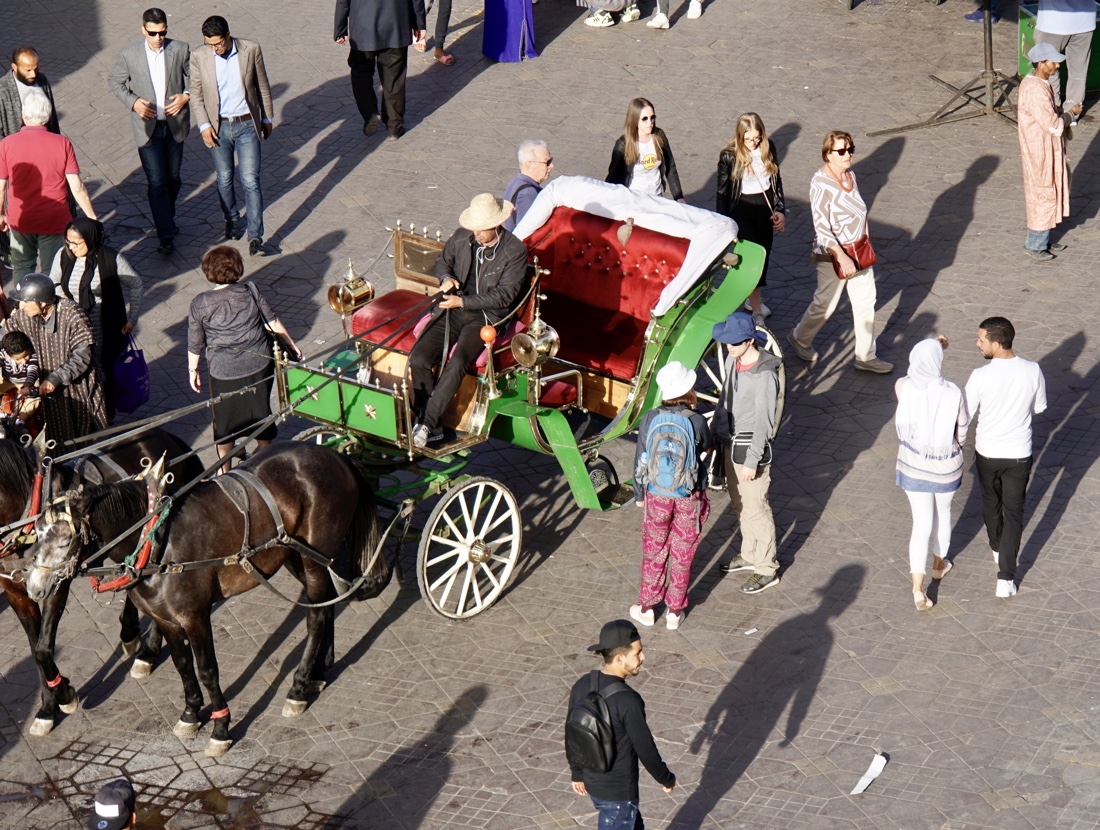 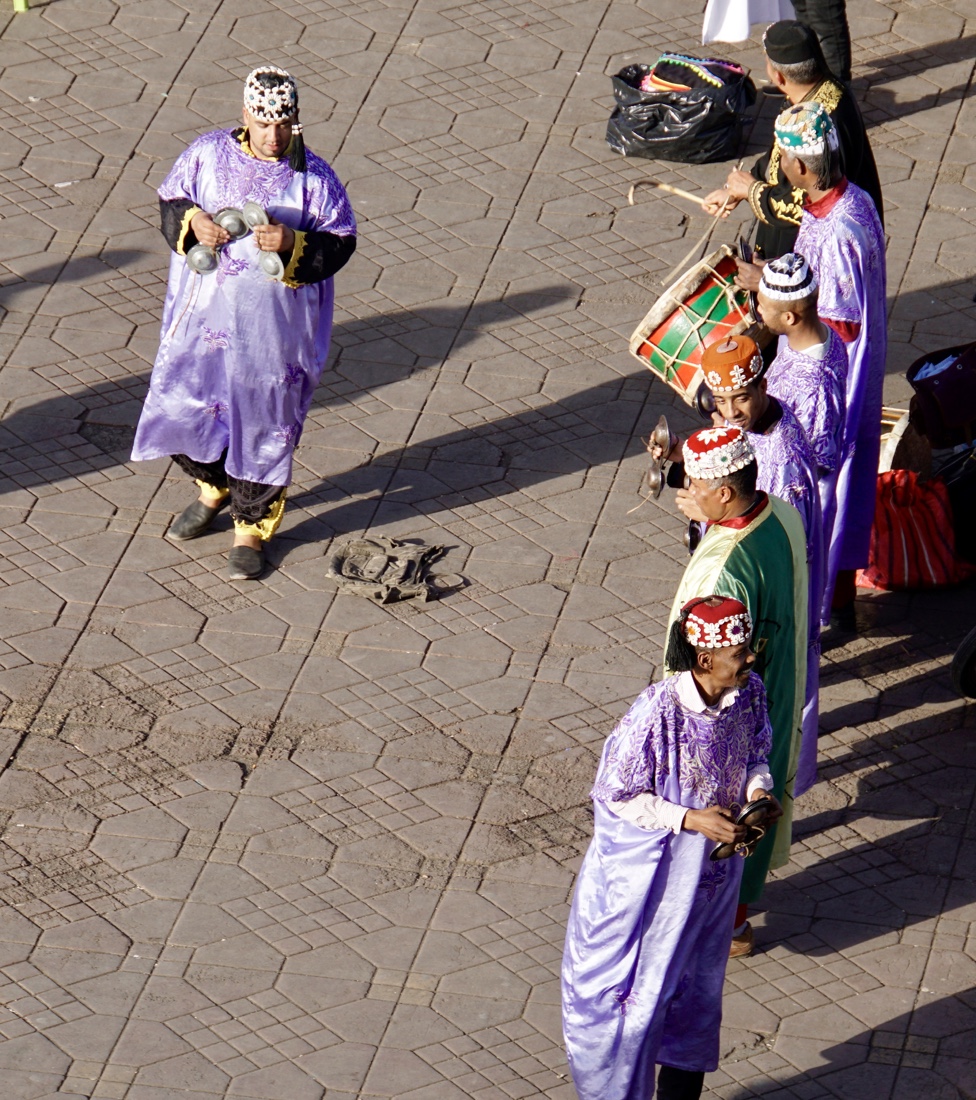
We check into a veritable hidden treasure, Riad Farnatchi, whose door opens into an elegant but true to form old-style riad in the heart of Marrakech’s medina. James Wix, an old-school British hotelier and his family have spent years honing the craft of ultimate hospitality mixed with old-style Moroccan tradition and welcome. The 10 suites all have different styles but are equally beautifully designed and centered around the classic courtyard water feature. There are dining rooms both ground floor and roof-top and with their newly appointed restaurant and spa in separate annexes they have everything to offer both the authenticity and comfort seeking guest. Below is a photo of our bedroom, which does not include the separate living room, the bathroom with tub and separate shower, the room in which the toilet is located or the private balcony we have with two chaise lounges. Tough, huh?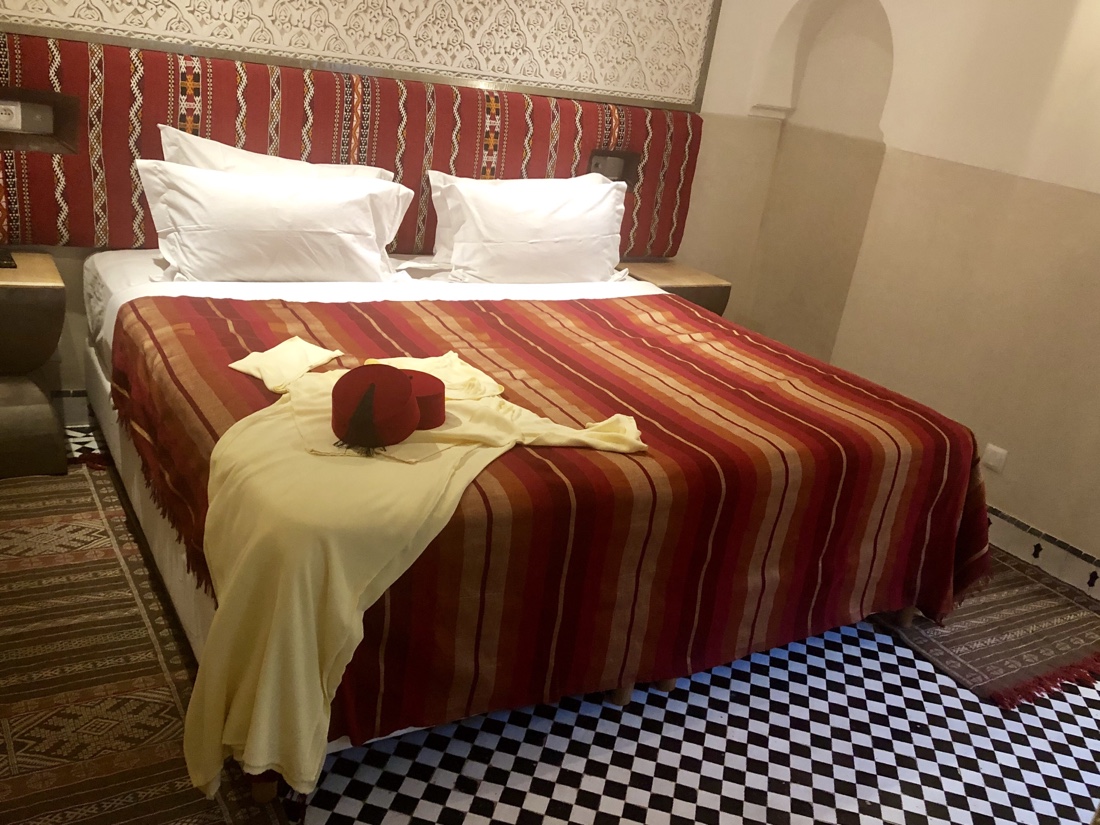
This evening, we have a delicious dinner at the hotel restaurant, located across the alley from the main hotel. We opt for traditional Morrocan cuisine and are not disappointed, either by the food or the service.
March 9
After breakfast, we go to shul. Since it’s Shabbat, I ask Younes to take us to the orthodox synagogue in the new city of Fes. Carol and I need to sit in separate sections, hers curtained off from the main sanctuary. We spend about twenty minutes there. The prayer book from which the service is conducted is entirely in Hebrew. As is always the case when I attend services in a synagogue in another country, I am moved by the experience of connecting with Jews around the world.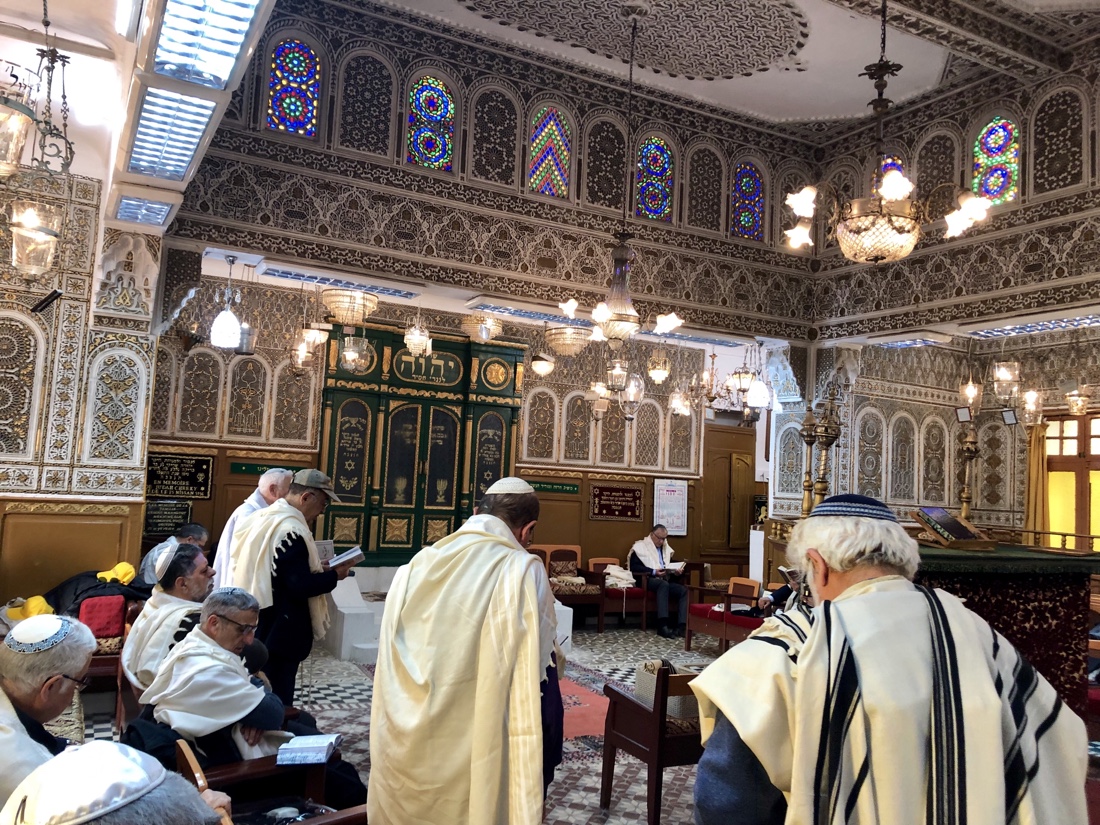
With Younes, we first drive above the Médina for a look at its expanse.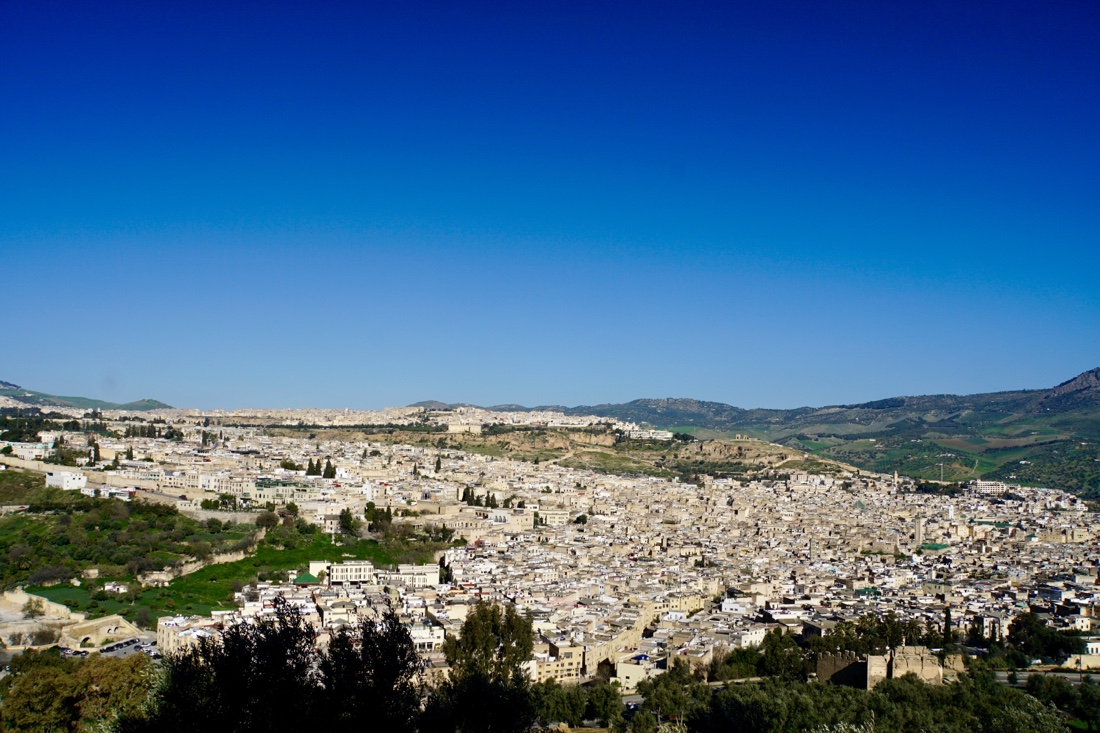
Younes takes us on a guided walking tour of Fes showcasing the alluring charm of the medina, the colorful streets and souks, the infamous tanneries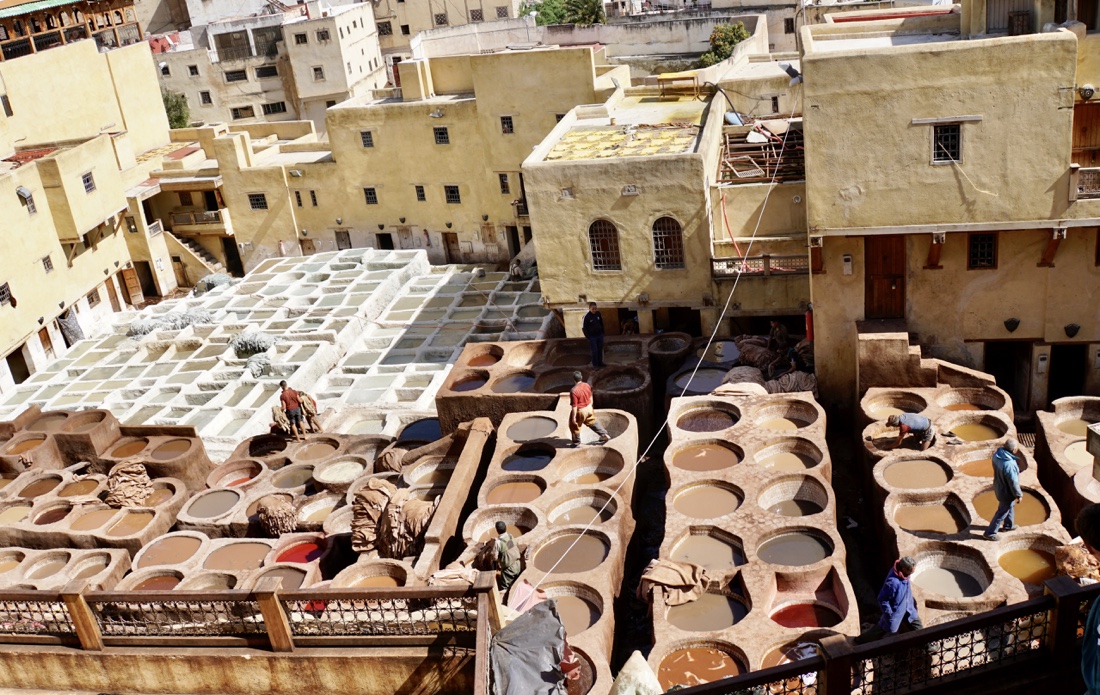 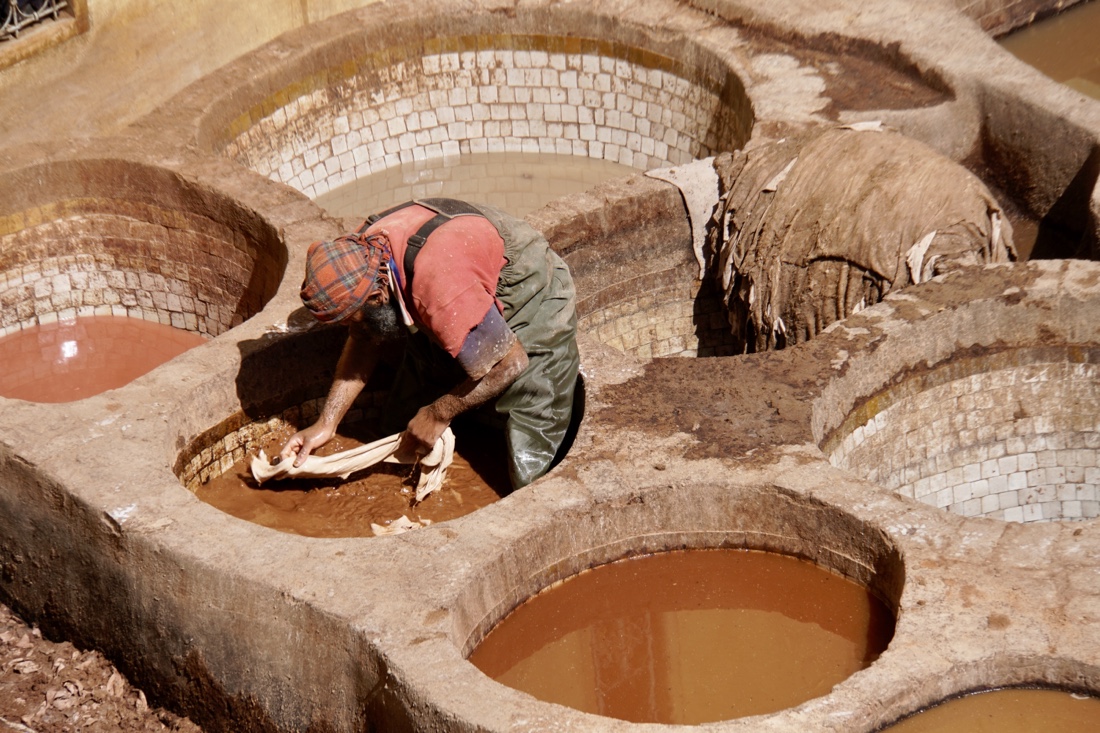  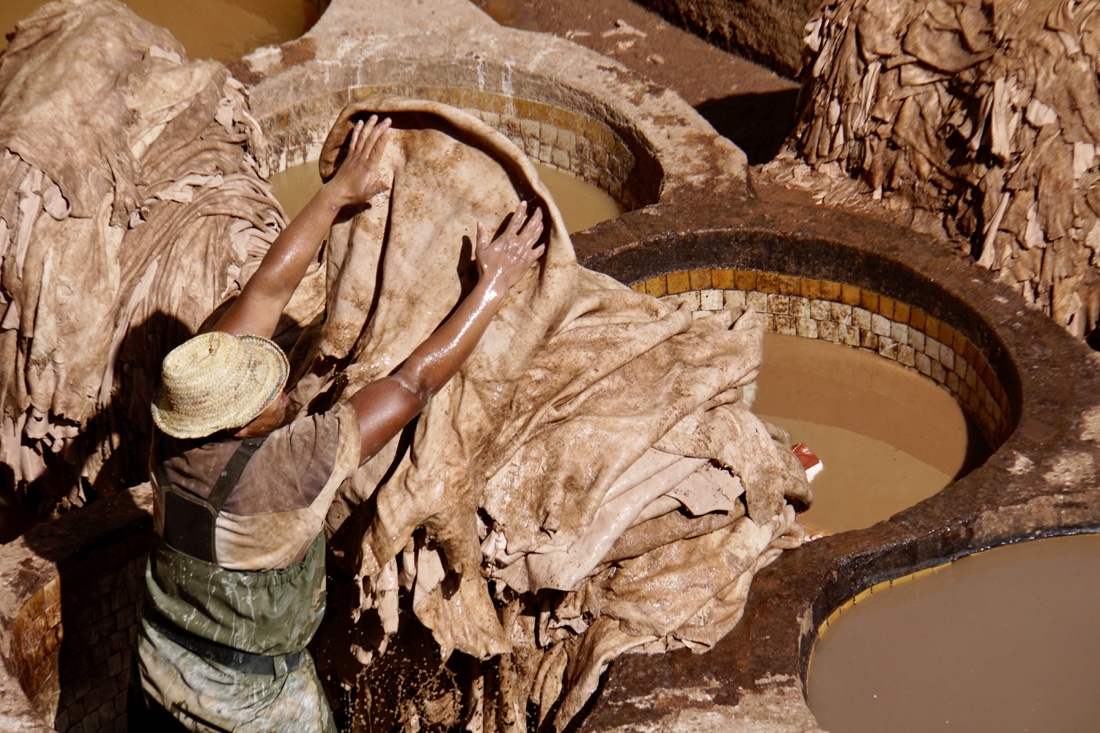
and the rich tapestry of life that exists within its ancient walls. Younes helps us get around easily through the over nine thousand alleys with blind turns, giving us an authentic look at the city that he loves, taking us into the depths of Fes to discover the culture and traditions hidden within the ancient walls.
It’s impossible to describe the variety of the medina, which encompasses centuries of culture and includes everything from shops of all types to a mosque and a univerisity where Moses Maimonides studied and taught in the late twelfth century. Here is a small sample of what we saw.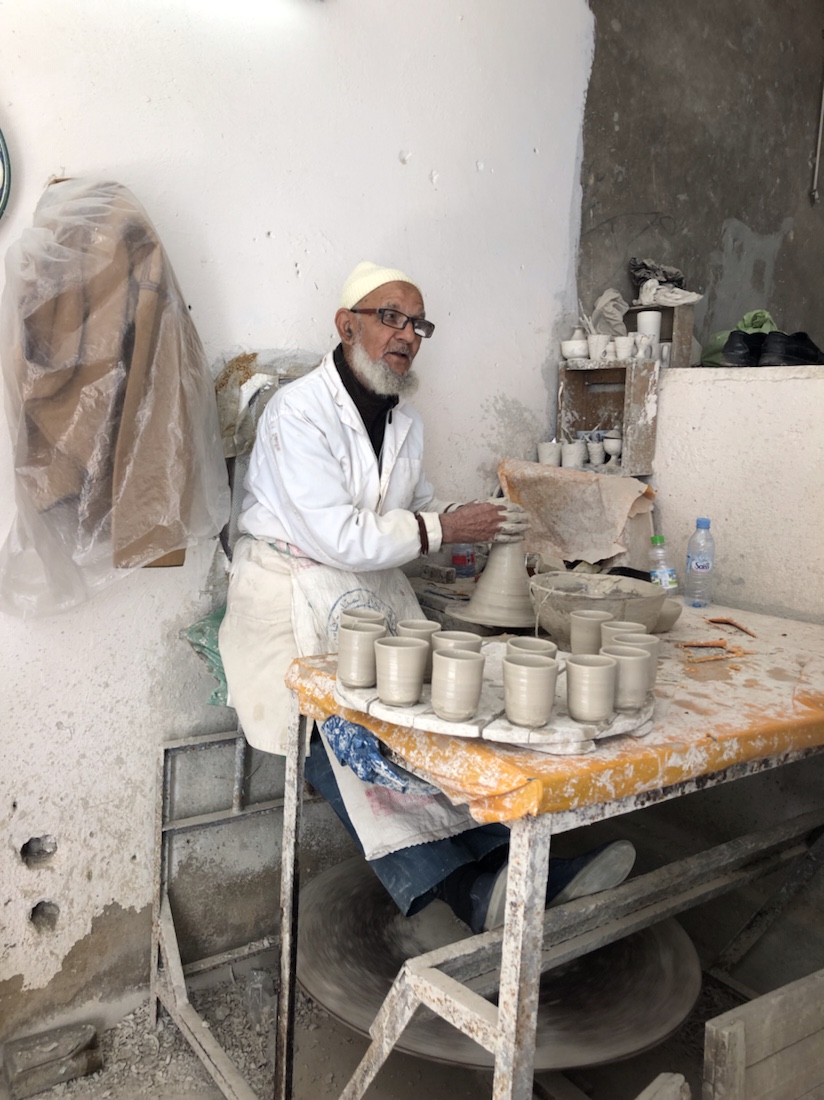 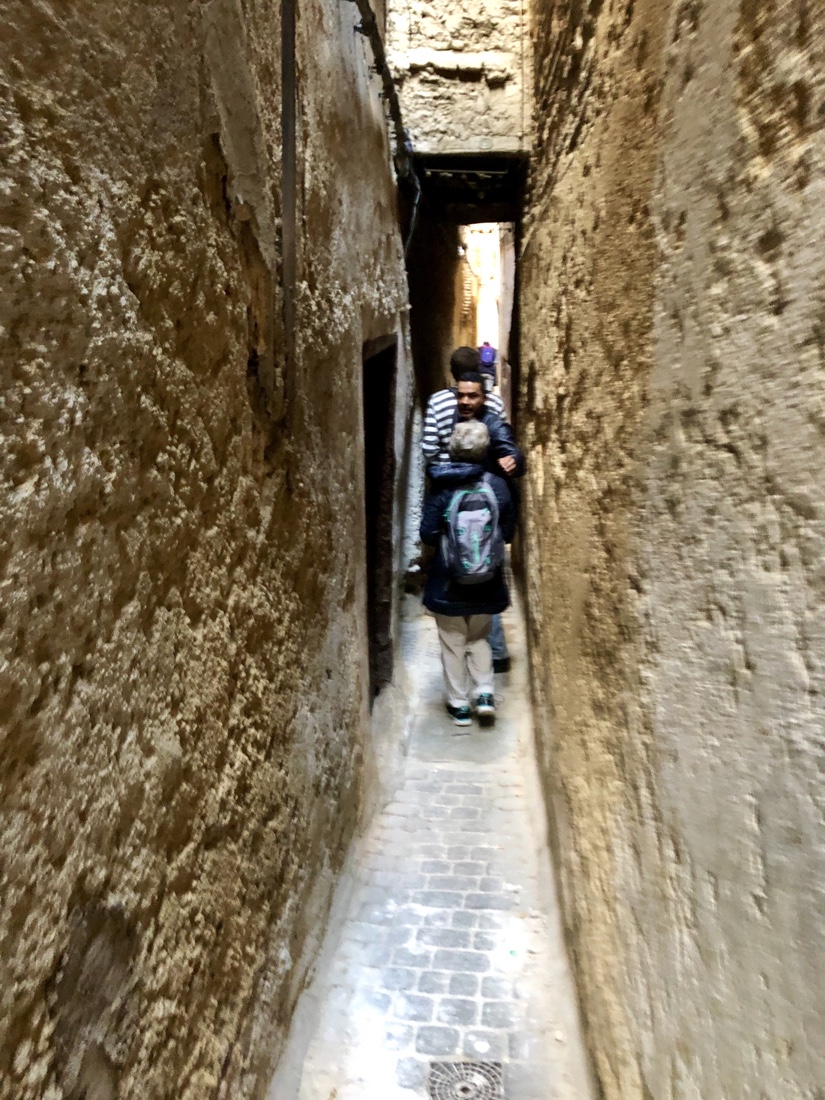 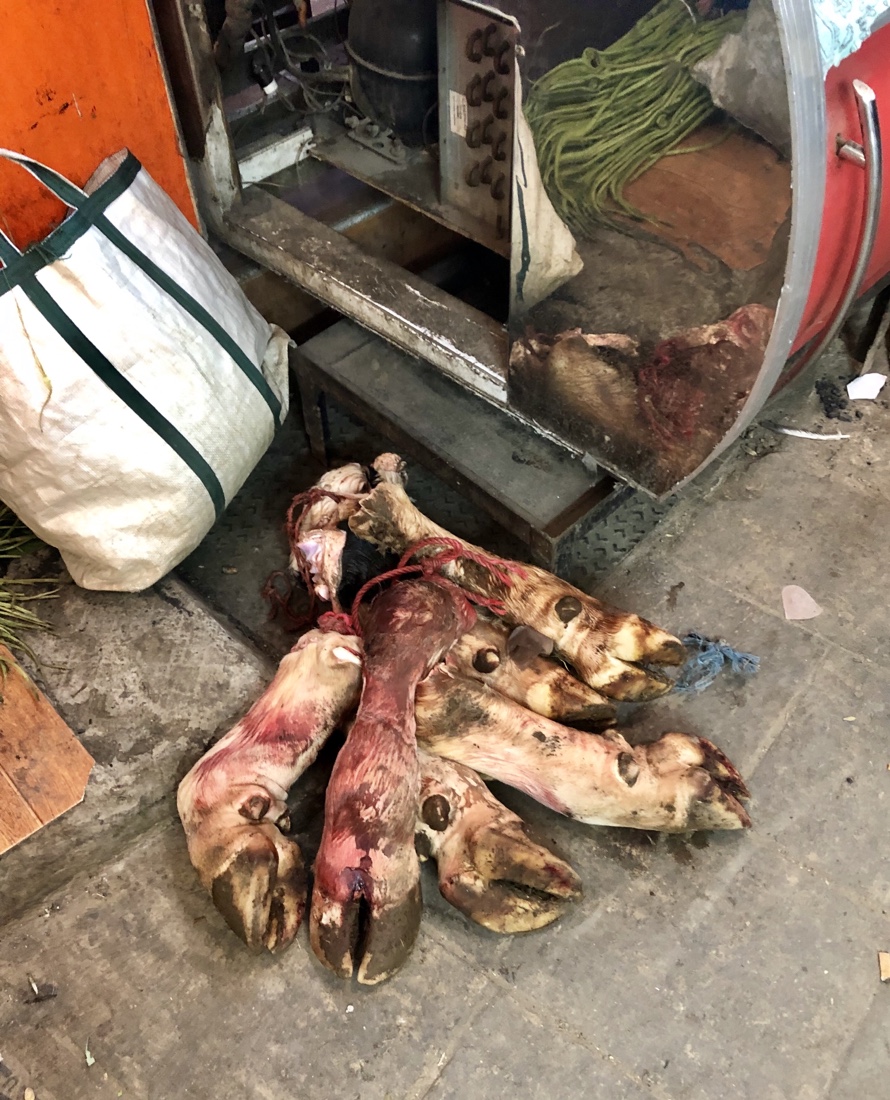 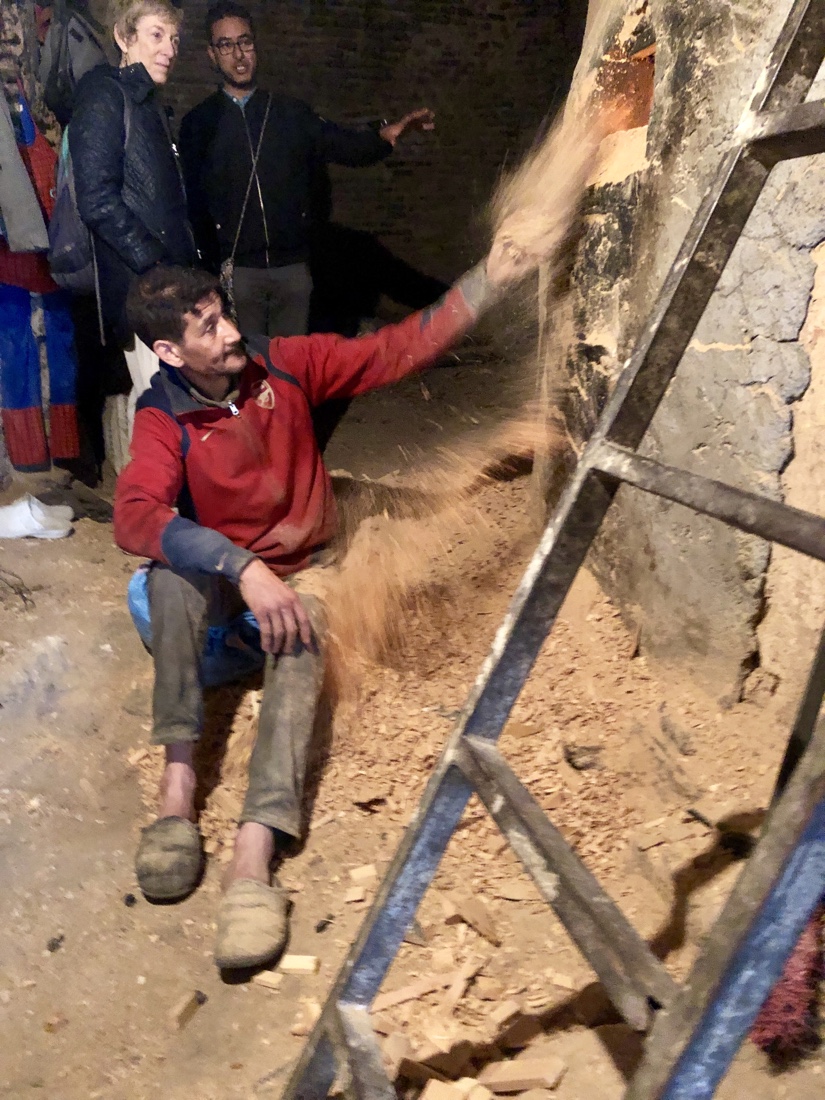 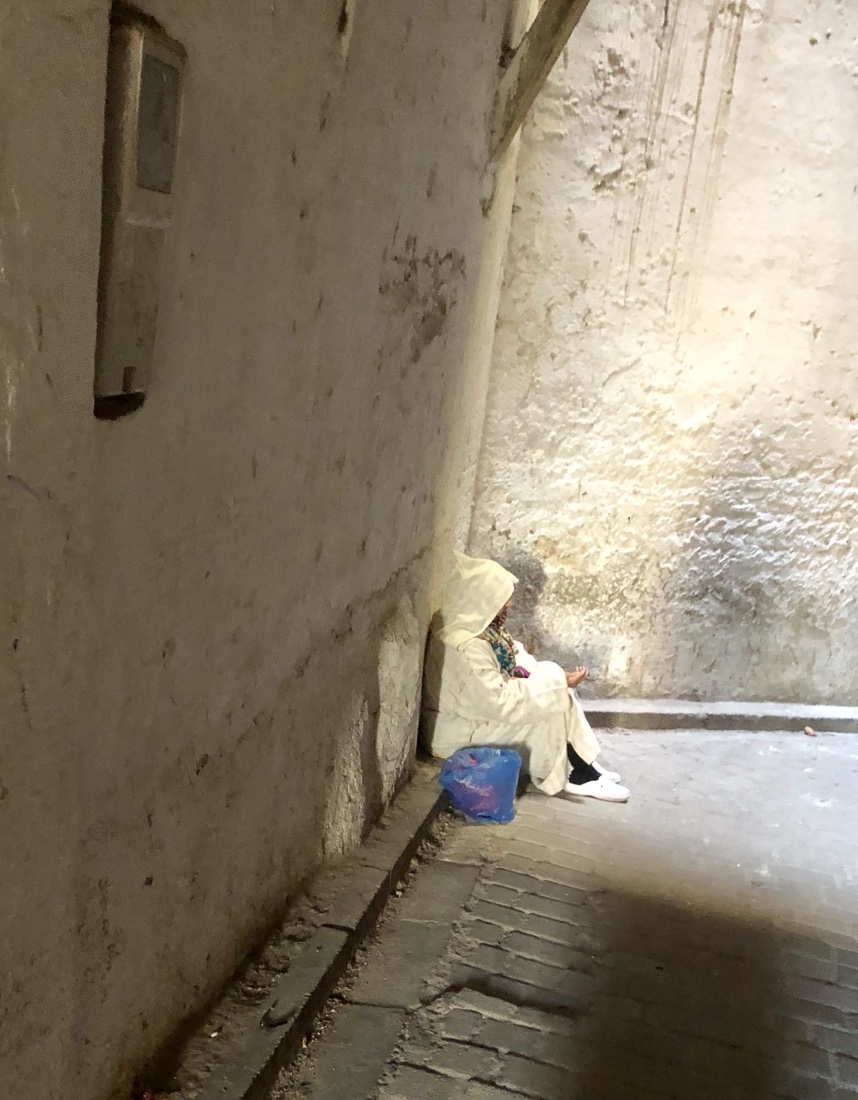 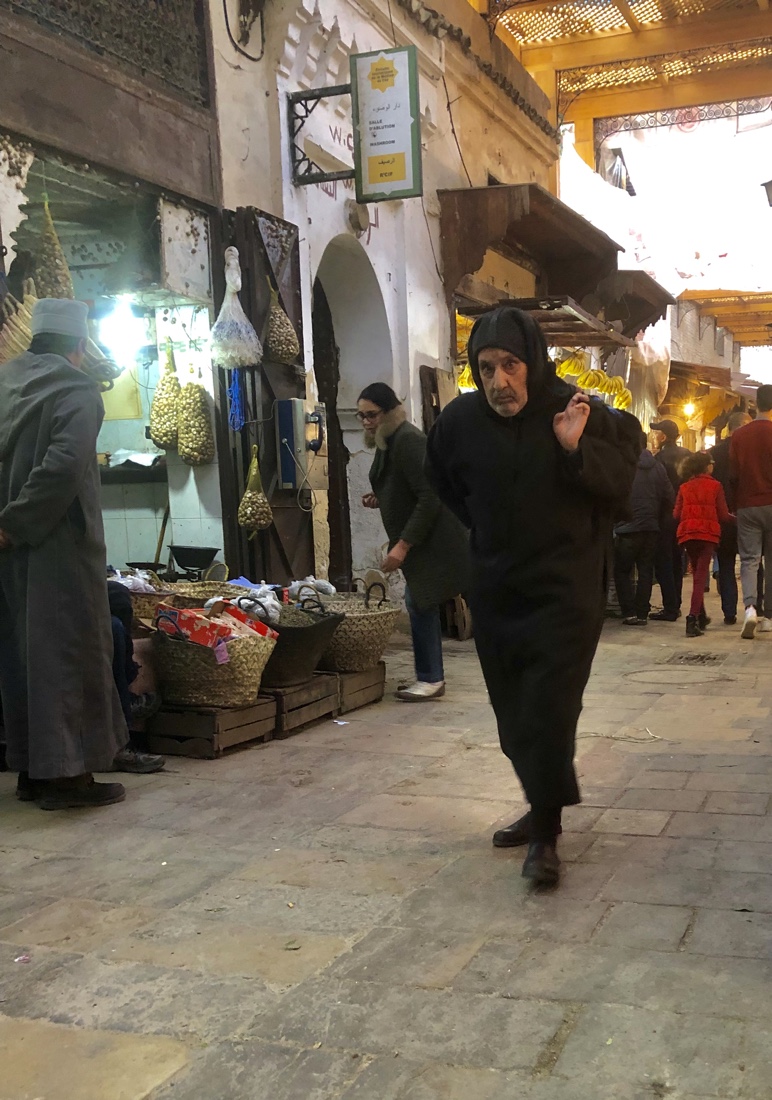 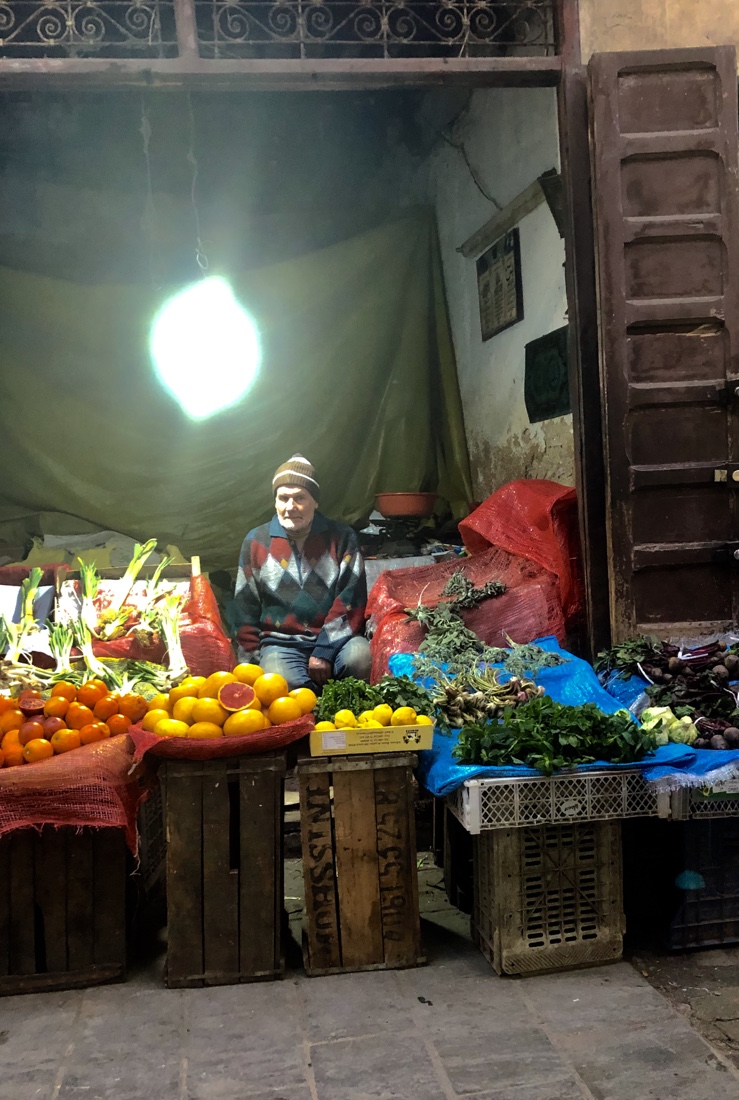 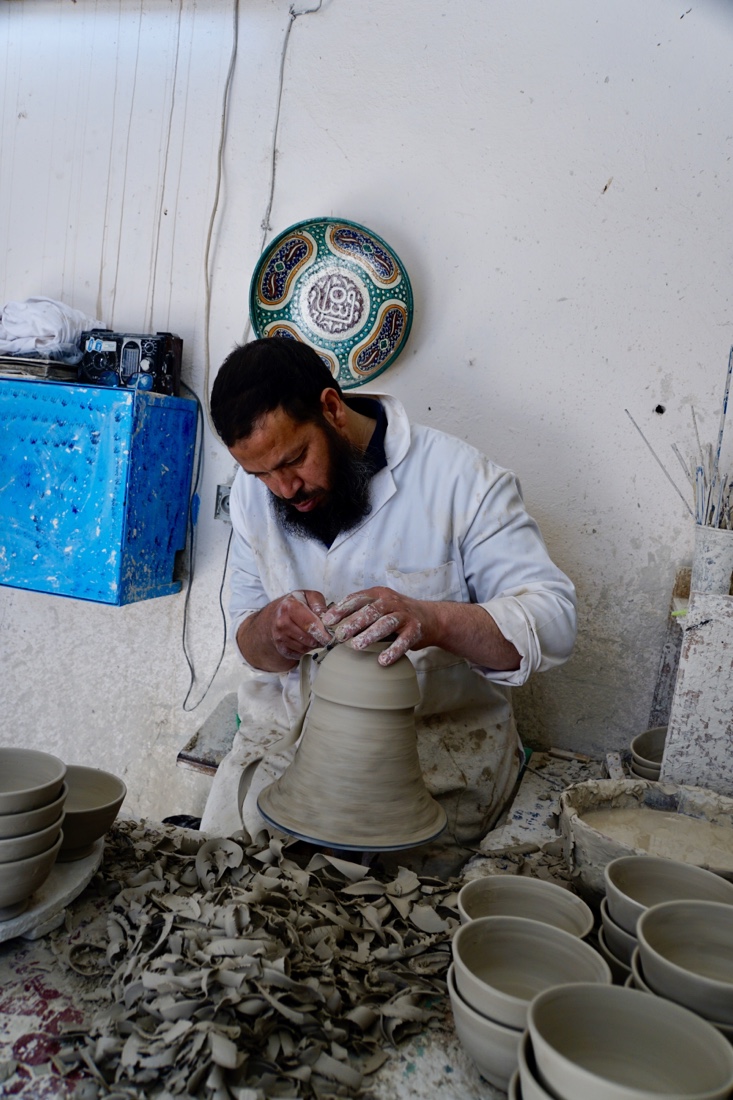 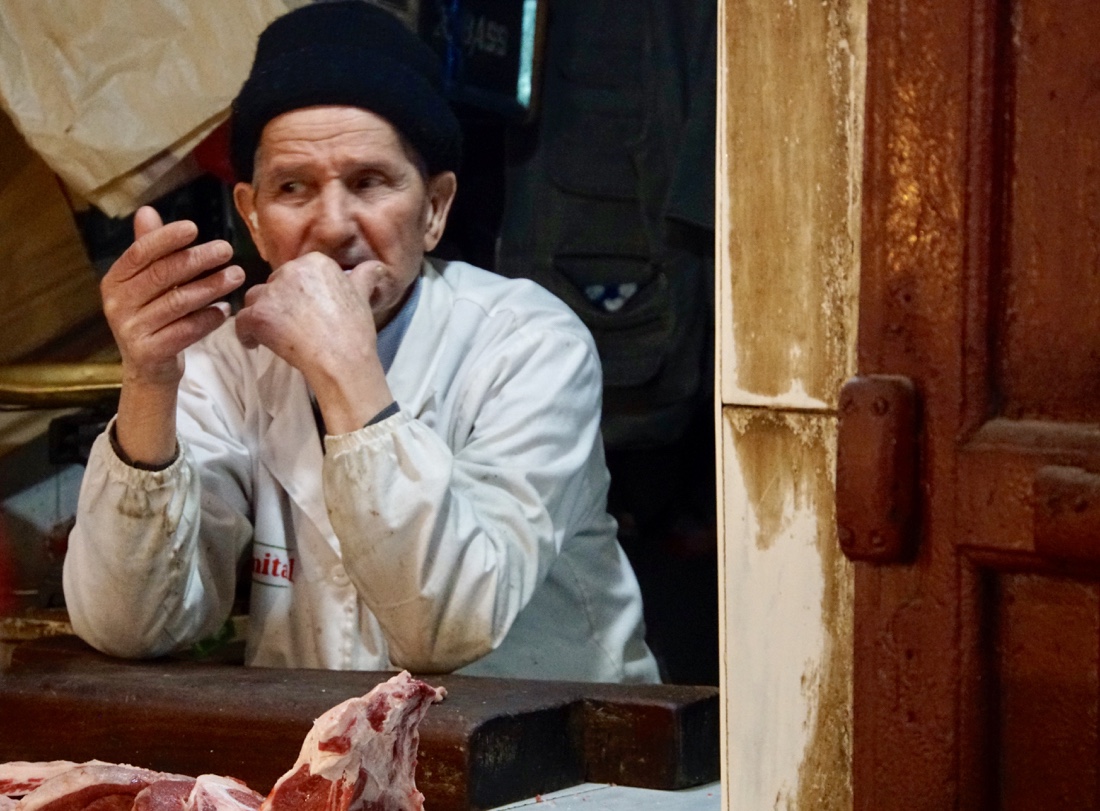 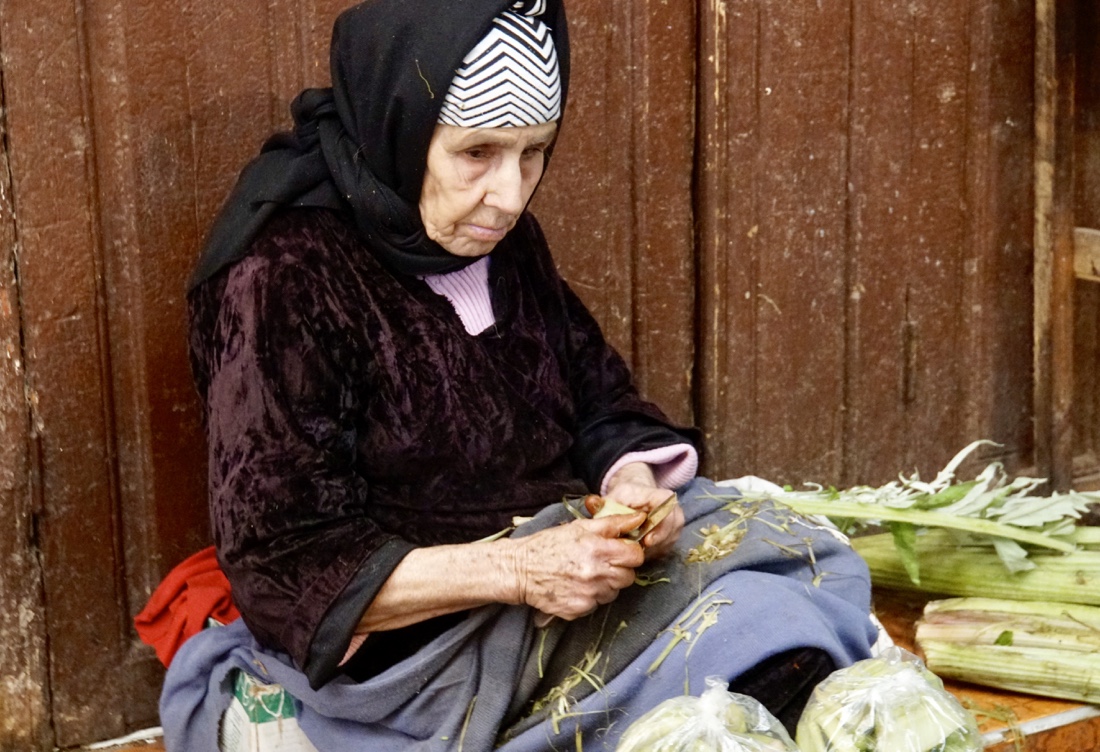 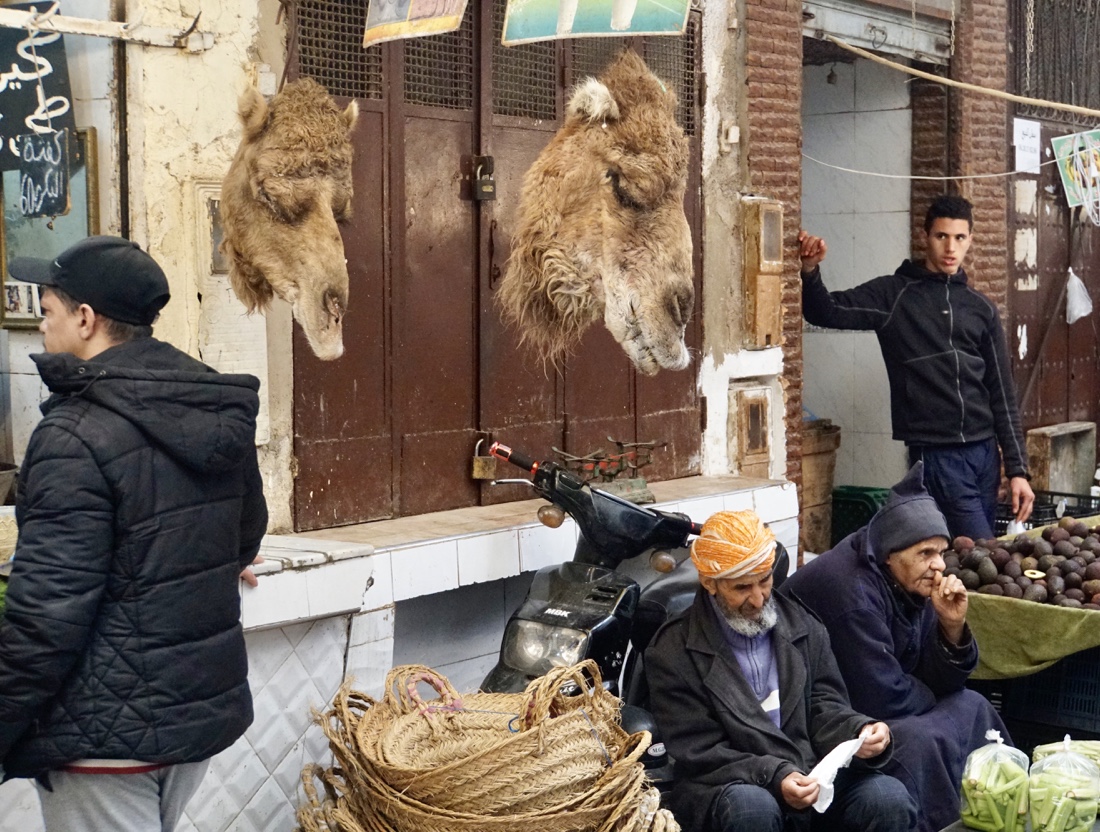 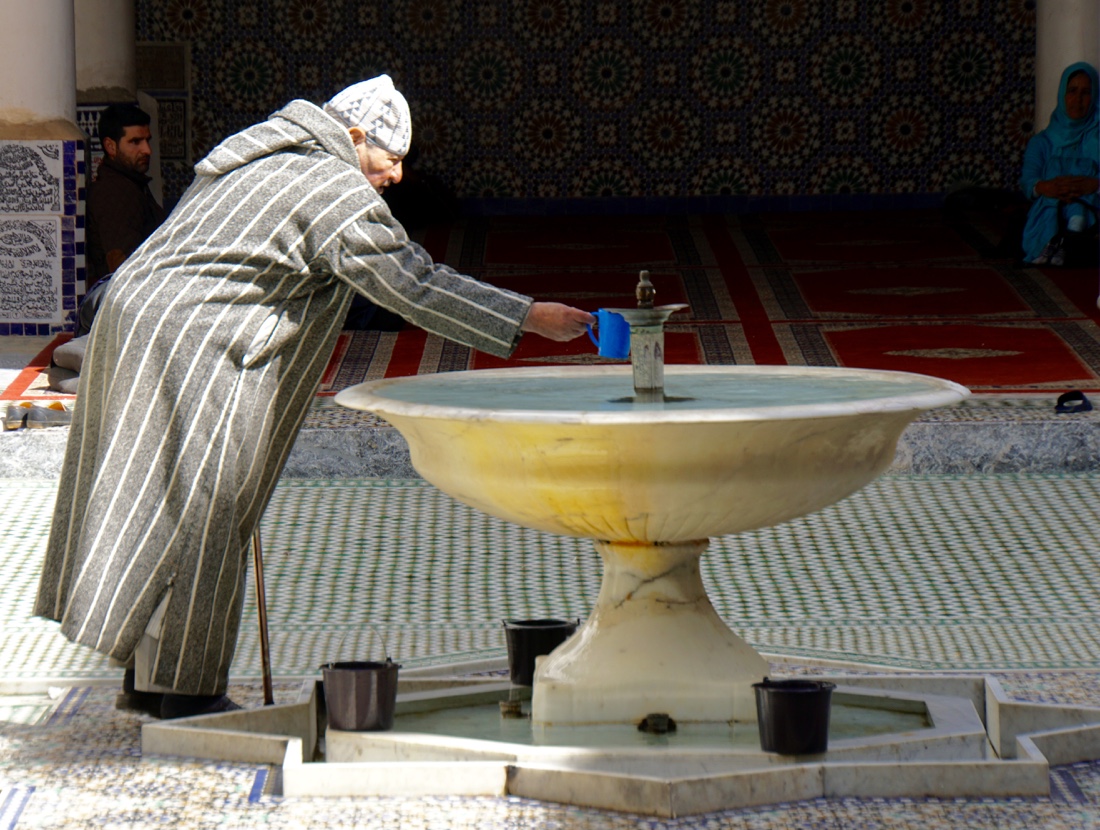 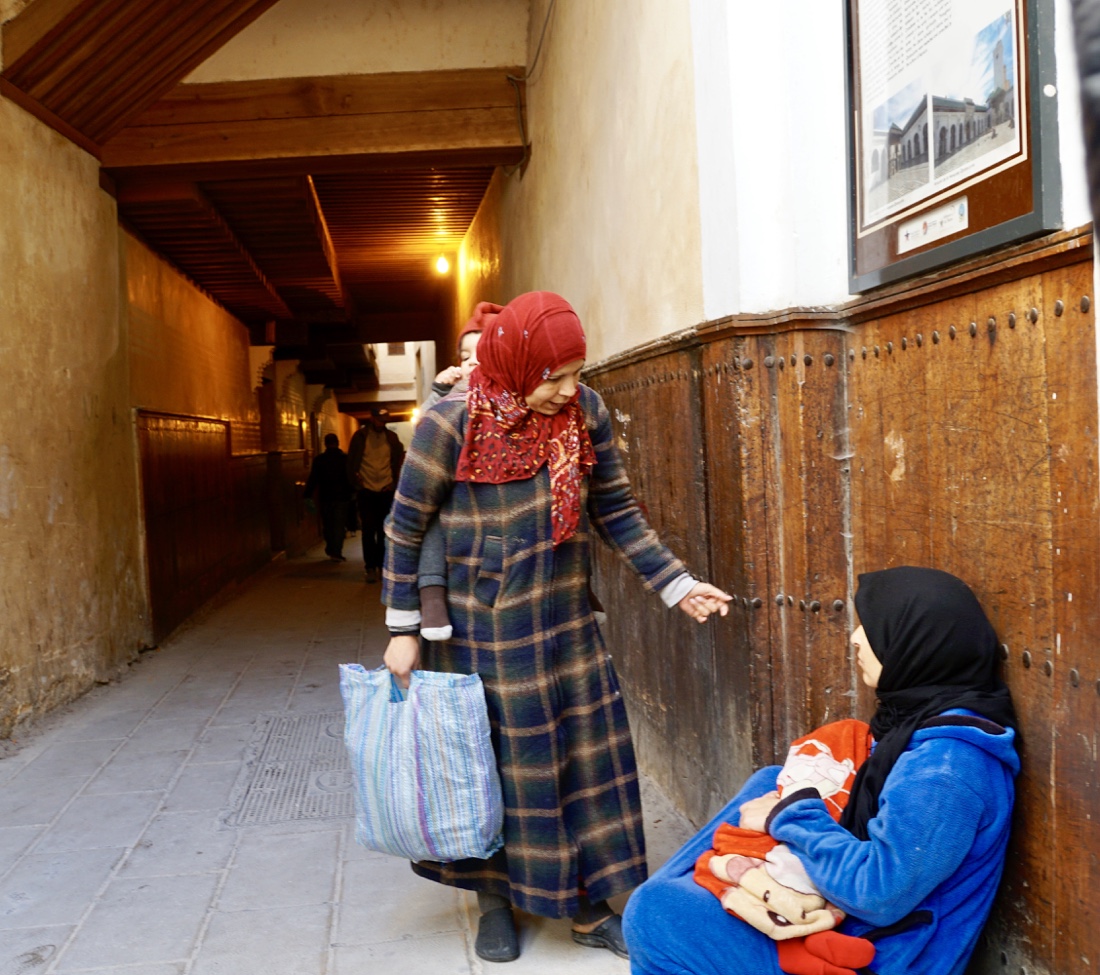 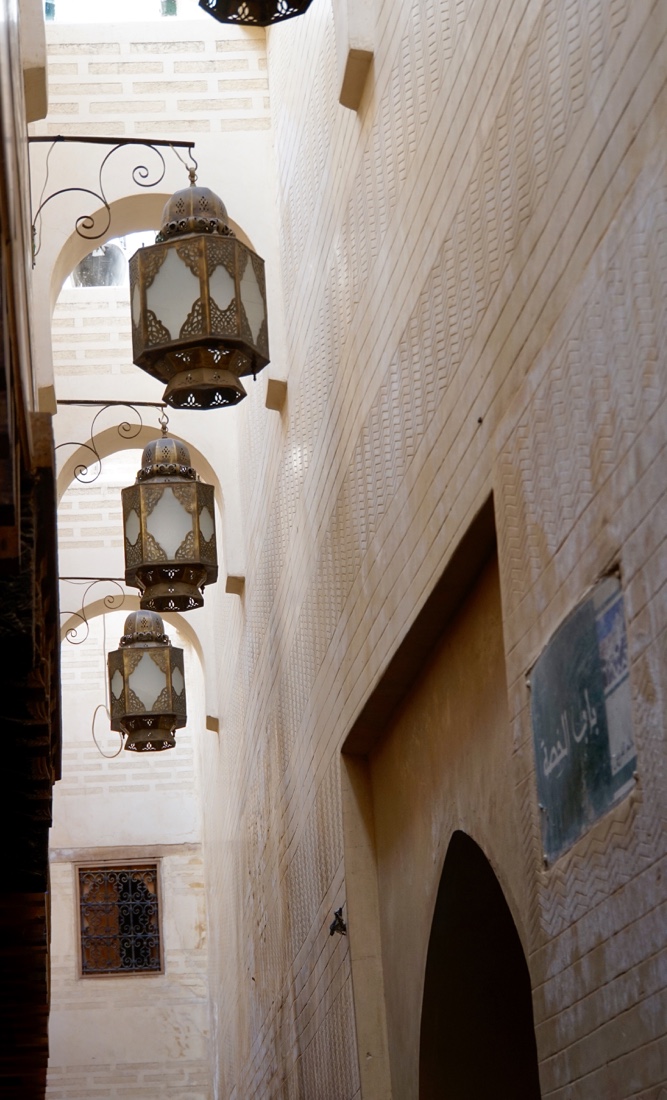 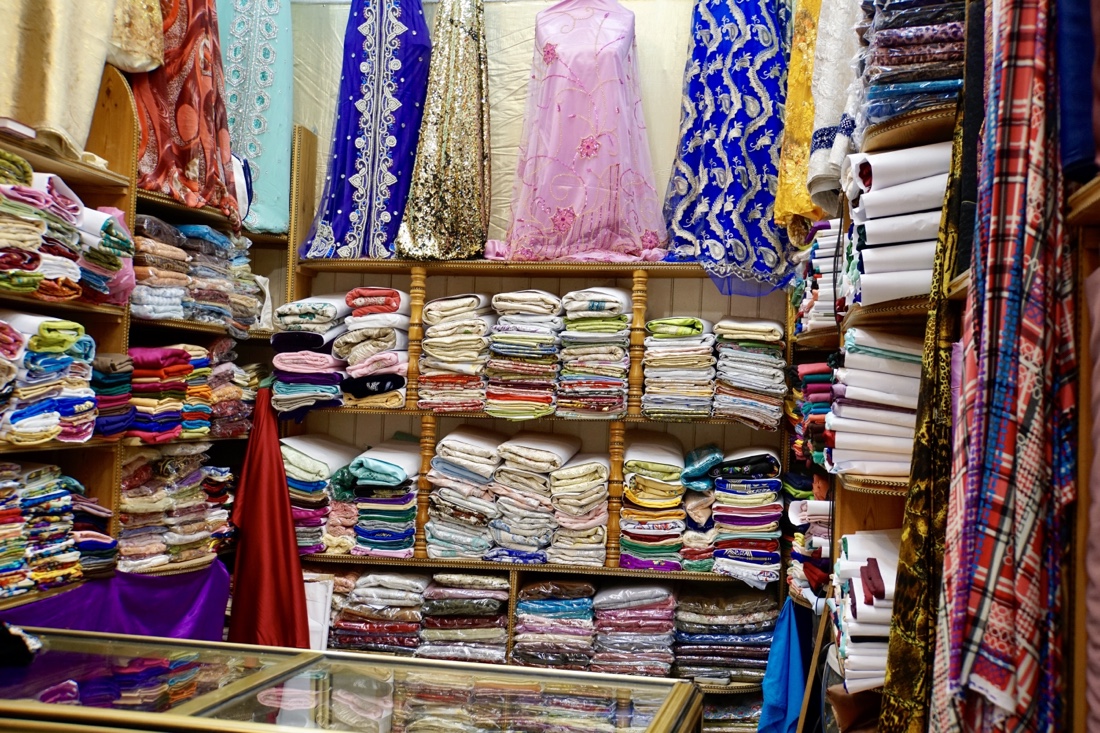 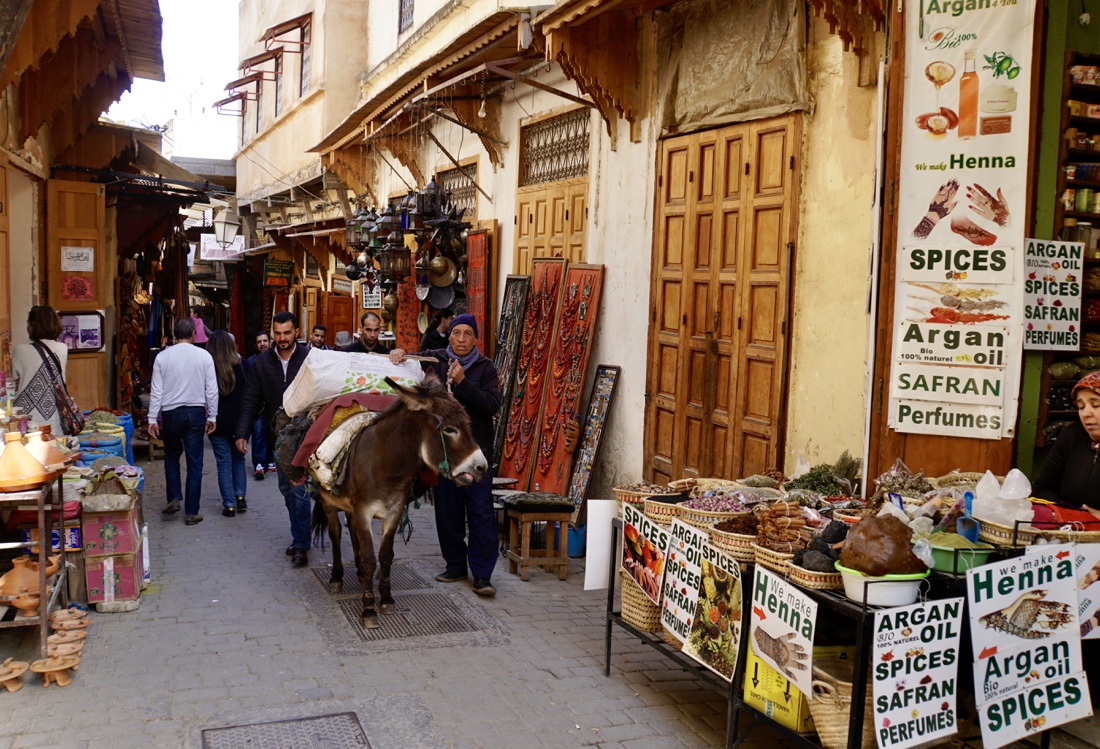
Below are photos of Carol with Muhamed, who sold us too much beautiful ceramics and Najib who sold us too many beautiful runners and of Noure (see below) who fed us too much food.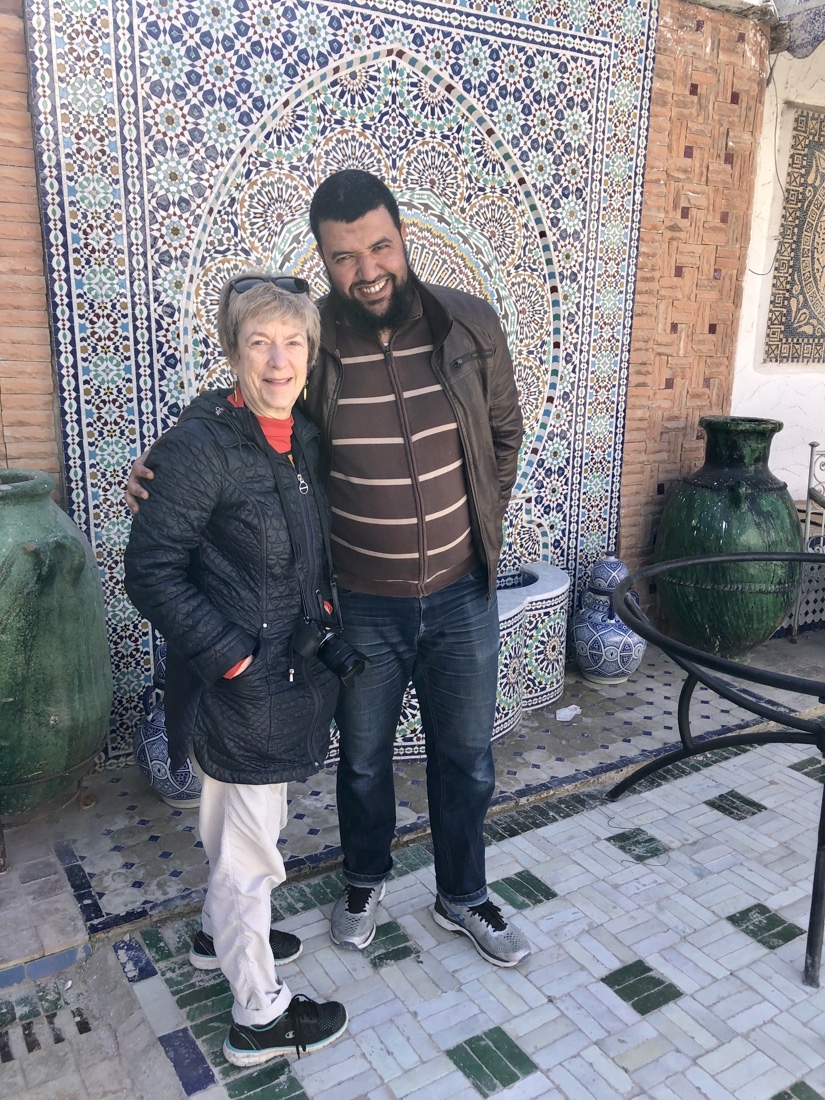 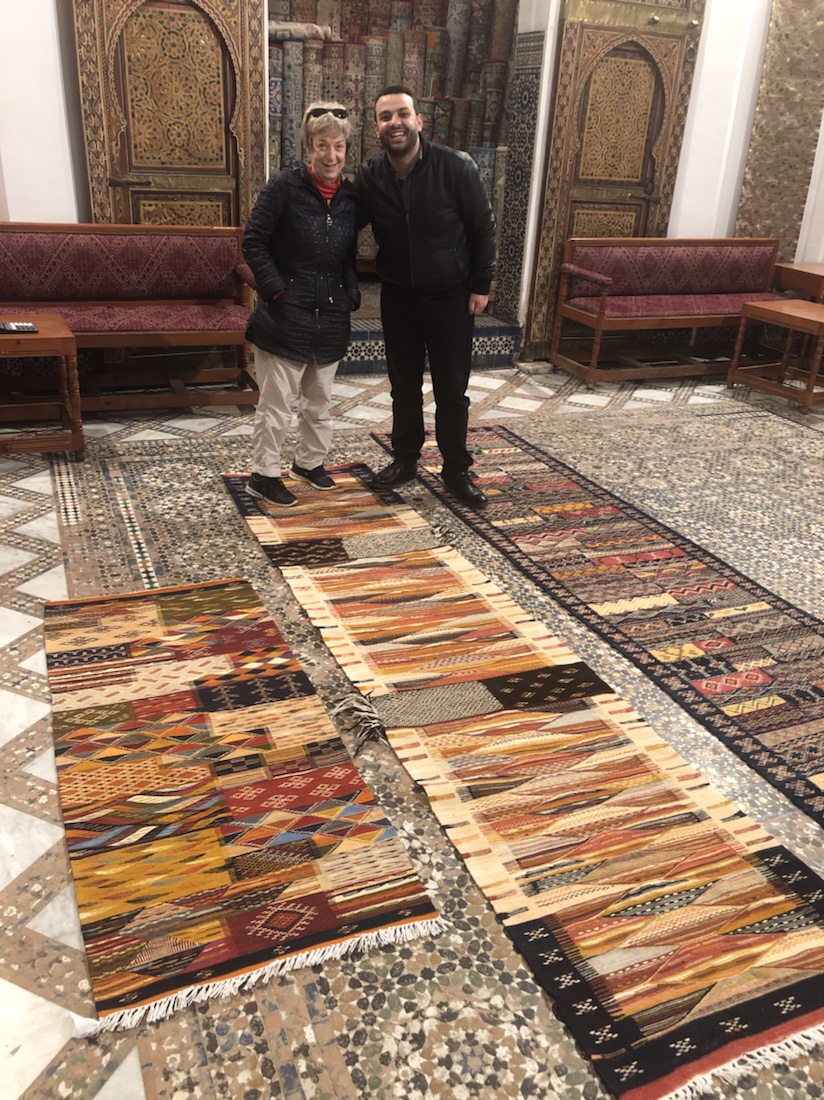 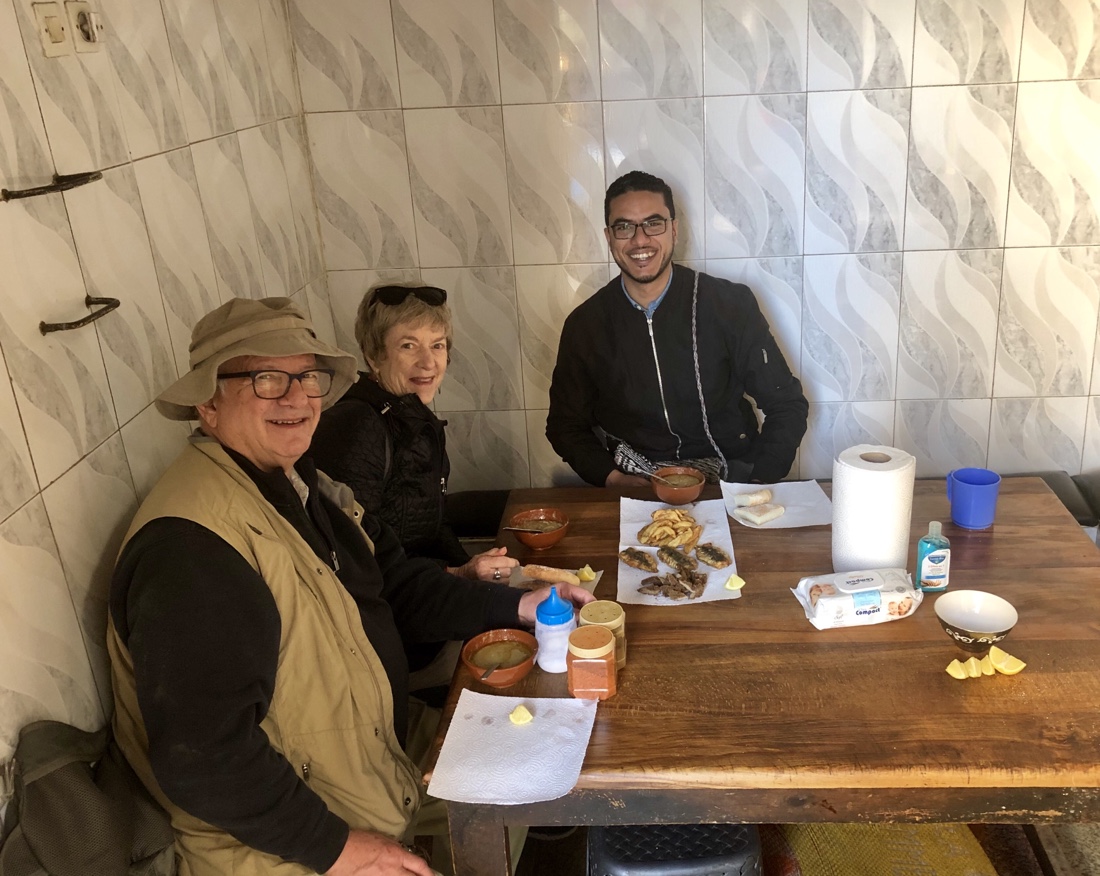
In the afternoon, we wander our way through the streets and souks with a local Fez food expert, Noureddine Chbani, “Noure”, who was born and grew up in the old Medina of Fez. He was granted with a scholarship to study at the American Language Center in 2009 for 4 years accomplishing all the levels.
He wanted to enhance his skills and capacities by achieving a diploma in business accounting in 2012. His love and passion for the English language carried on with a BA in English Linguistics in 2014 at the University of Sidi Mohamed Ben Abdellah in Fez.
He started his career as an accounting assistant before following his heart and joining the Plan-it Morocco team to share his insight with travelers from all over the world of the local culture, extraordinary cuisine and explore the traditions of his fascinating homeland.
Noure is passionate about Moroccan cuisine – one of his favorite activities is to take clients on an adventure exploring the culinary world of the medina, where enticing aromas and mouthwatering foods are created from recipes handed down over generations.
We start our food tour at the honey souk where we taste an array of more than a dozen delicious honeys, their flavors and properties and find out why honey is so important in Moroccan cooking and Islamic culture. From the honey souk, we visit other areas to try traditional Moroccan foods including dried meats, milawi, harsha, briwats, spicy sardines, and about ten fresh goat and sheep cheeses, finishing off with an array of sweets and then a visit to a traditional Moroccan tea house, where we are joined by two other of the young staff members of Plan-it Morocco (Meryem and Siham) and have a delightful hour with them in which we are able to ask questions about life, families, religion, women’s issues and politics. People, overall, seem quite-happy, and the King is widely-loved and admired.
Meryem Ameziane, who was born and raised in Fez, and received her Bachelor of Arts in English Studies at Sidi Mohammed Ben Abdullah in 2011. She also trained at the American Language Center, teaching English as a second language.Meryem initially began her career teaching linguistics at Ecole Socrat before deciding that her love of her culture was something that she wanted to share with international guests, while continuing to practice her language skills and exchange cultural ideas. Meryem regularly volunteers with children during special festivals ,contributing and sourcing toys to distribute among families in need.
Siham Lahmine received her Bachelor of Arts in English Studies on 2011 at Sidi Moha Siham Lahmine received her Bachelor of Arts in English Studies on 2011 at Sidi Mohammed Ben Abdullah in the city of Fez. She was the president of the Volunteering Association in the American Language Center for a year and then she worked as a facilitator at the Peace Corps, before her current position at Plan-it Morocco, where she has combined her love of culture and connecting guests to local people. She continues to volunteer at the Ziat Girls Center, helping underprivileged, marginalized girls to increase their life skills and re-integrate into the community.
Random thoughts.
Many well-camouflaged stairs in streets and buildings, often without rails, make walking quite dangerous. So far no missed or-missteps.
Many cats, actually kittens and/or small cats that are treated very well. Apparently, The Prophet liked cats (really).
Our driver Younes picks us up and drives us back to the riad, where we pack and have our bags taken down to the office. The two Youneses will pick them up later tonight, and drive them to Marrakech tomorrow, meeting us late afternoon at the airport when we fly in from Fes. We are far too full from our food tour to eat dinner, so Carol reads and I blog.
March 8.
After breakfast at our riad, we spend a morning exploring Chefchouan, the blue city. For starters, we see how the city got its name
 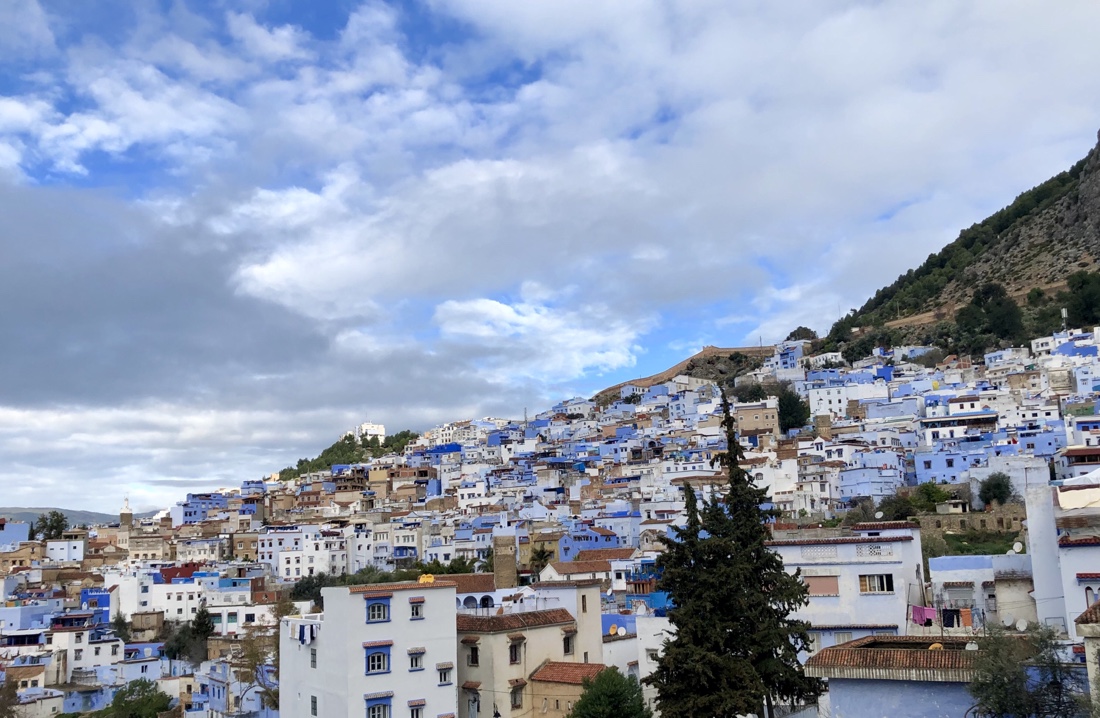 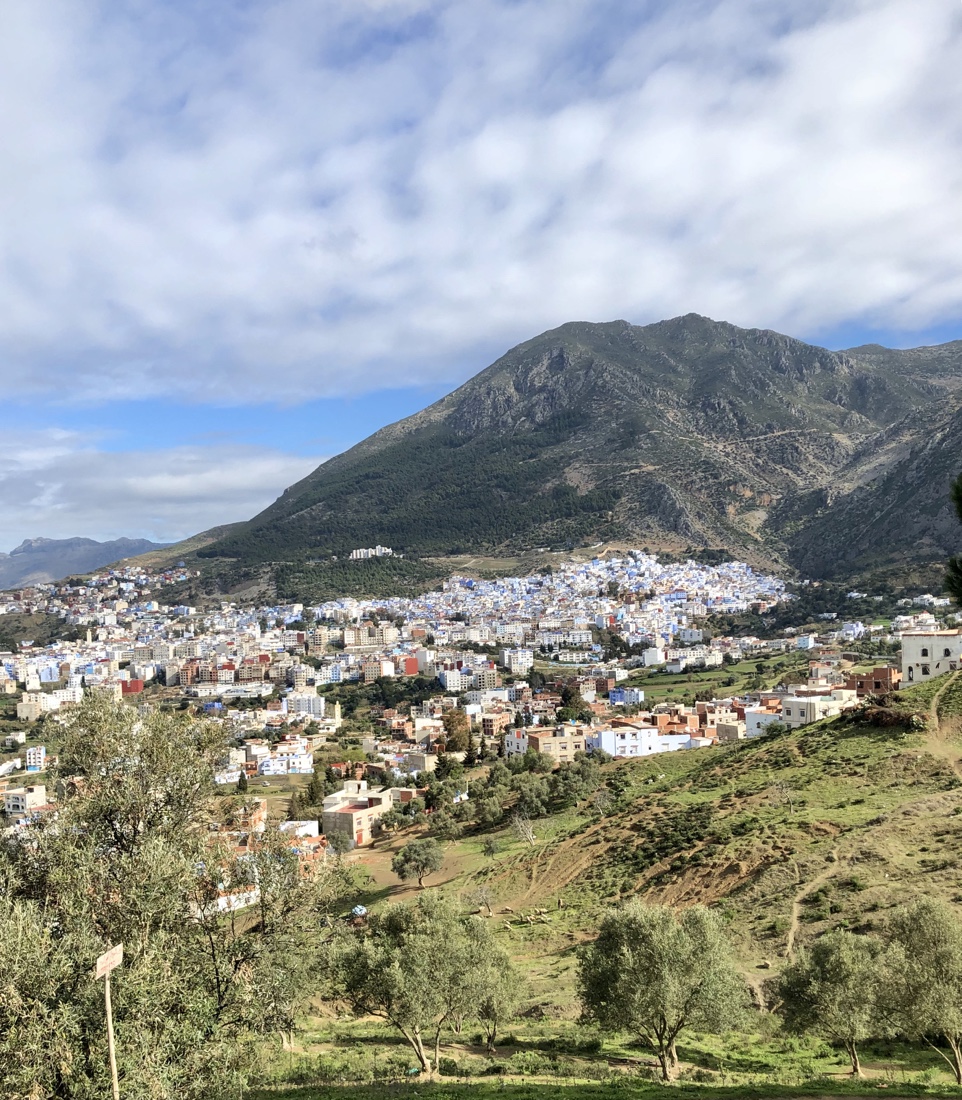 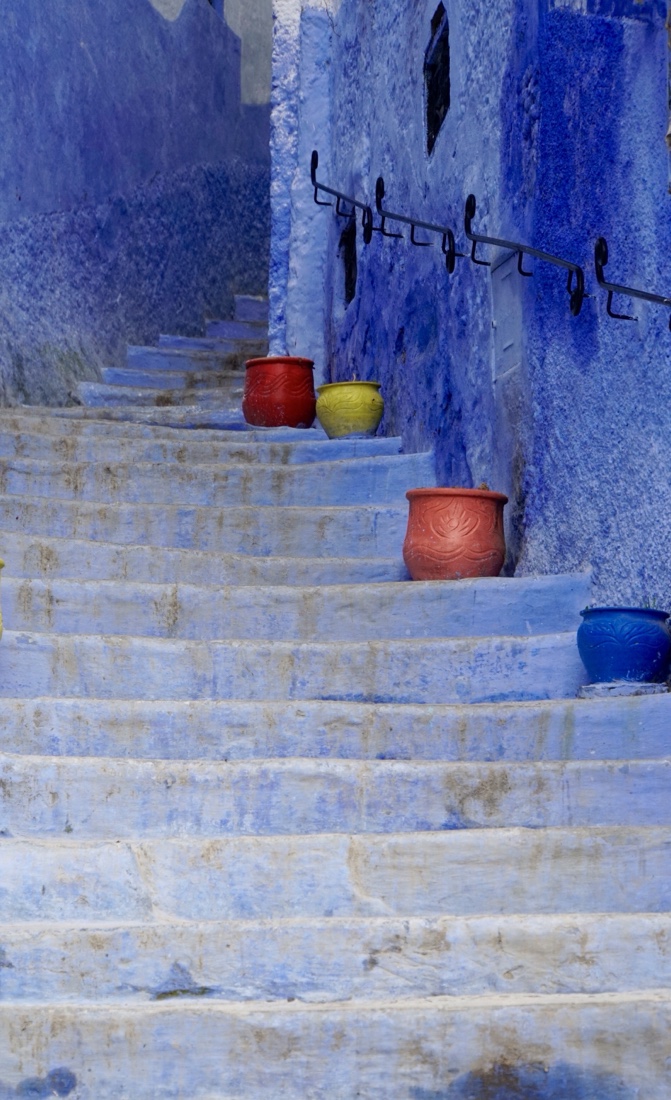
sneak photos of picture-shy inhabitants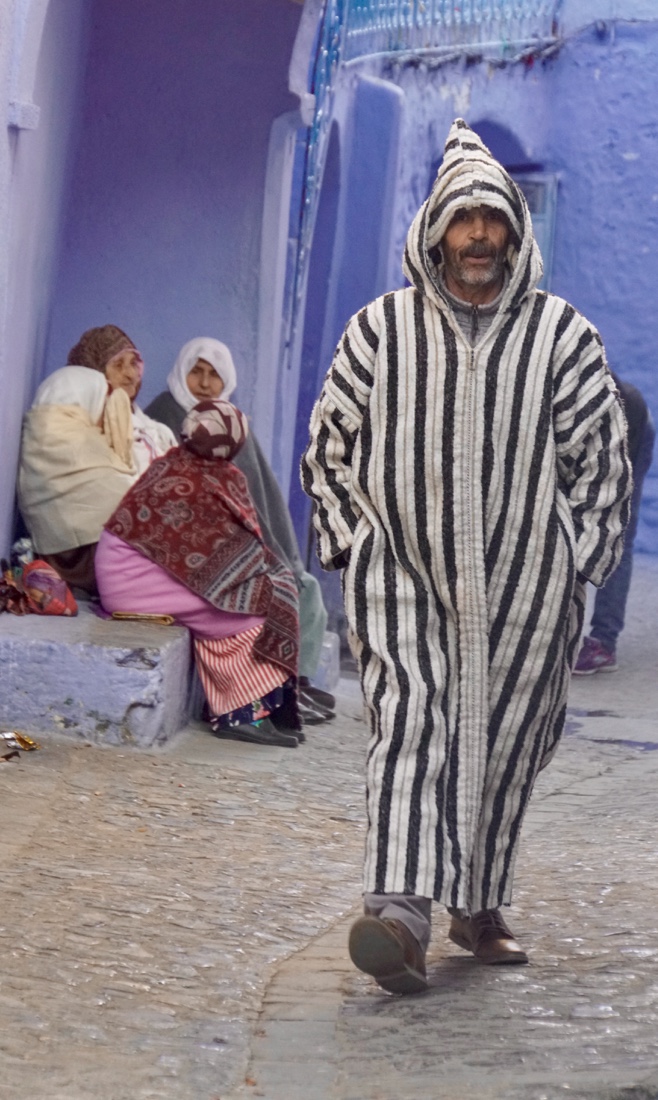 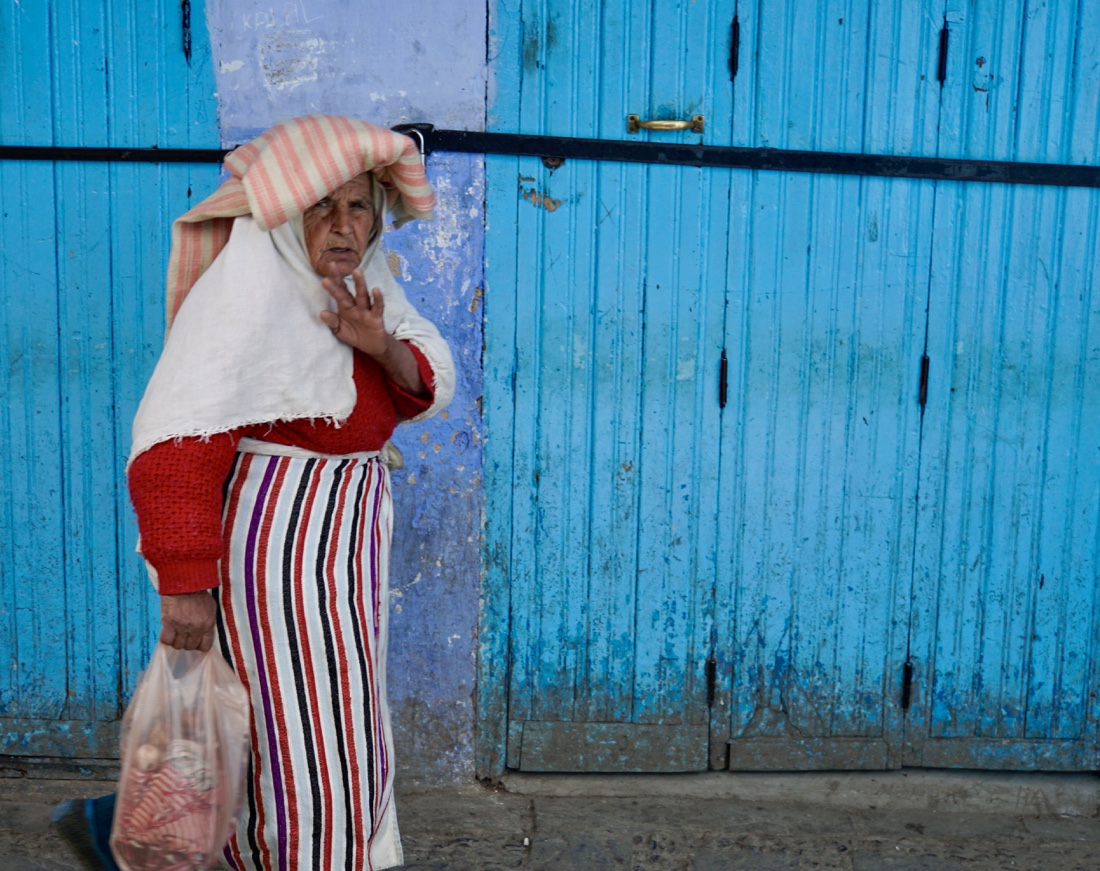 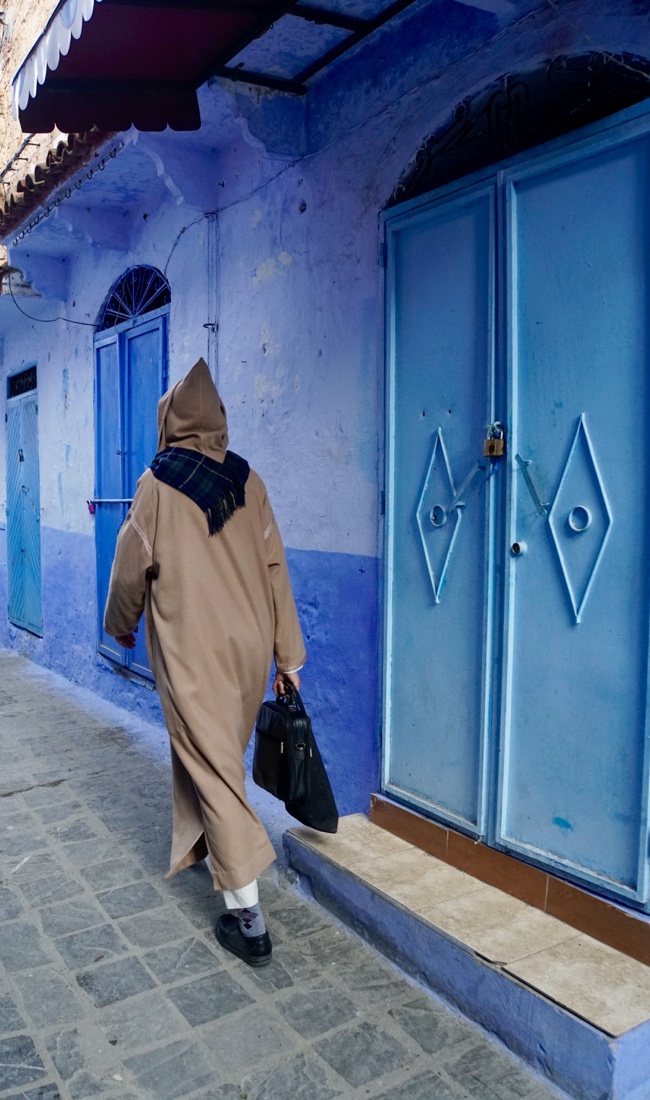 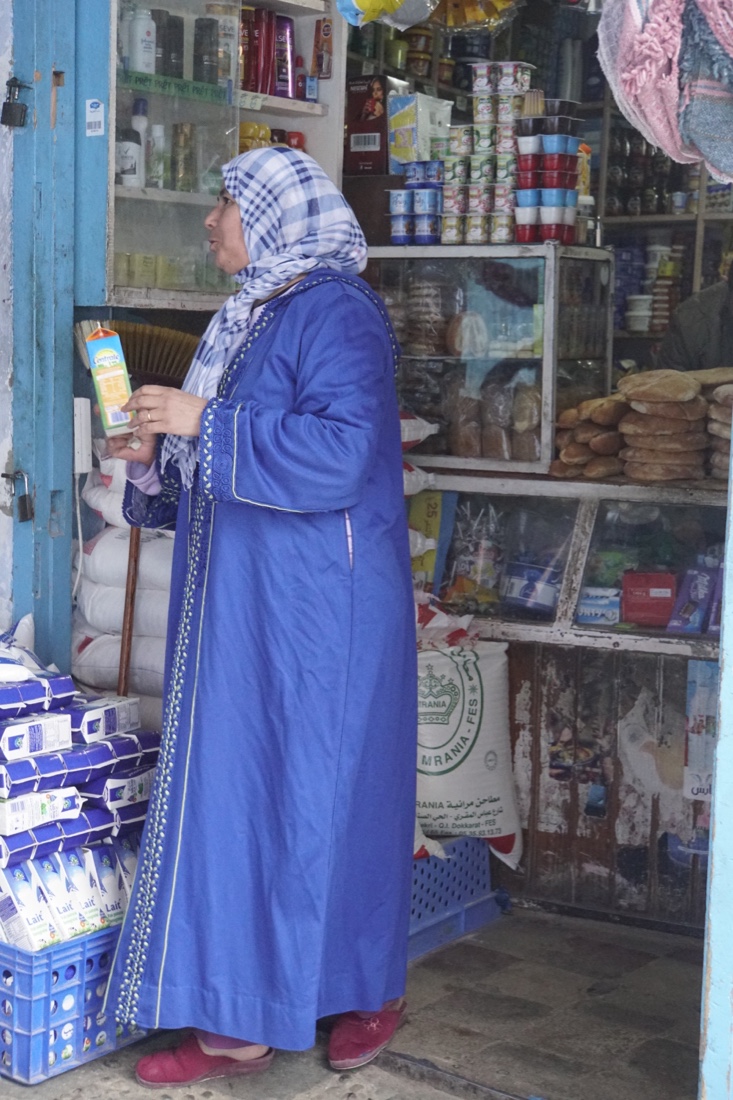  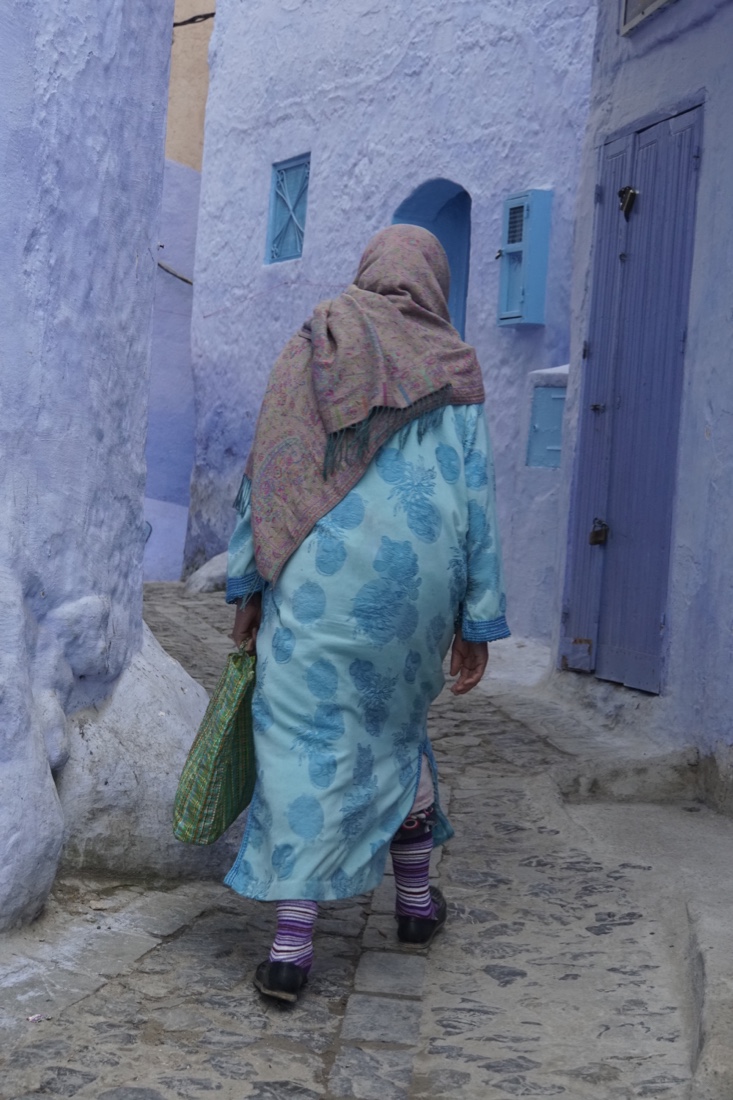
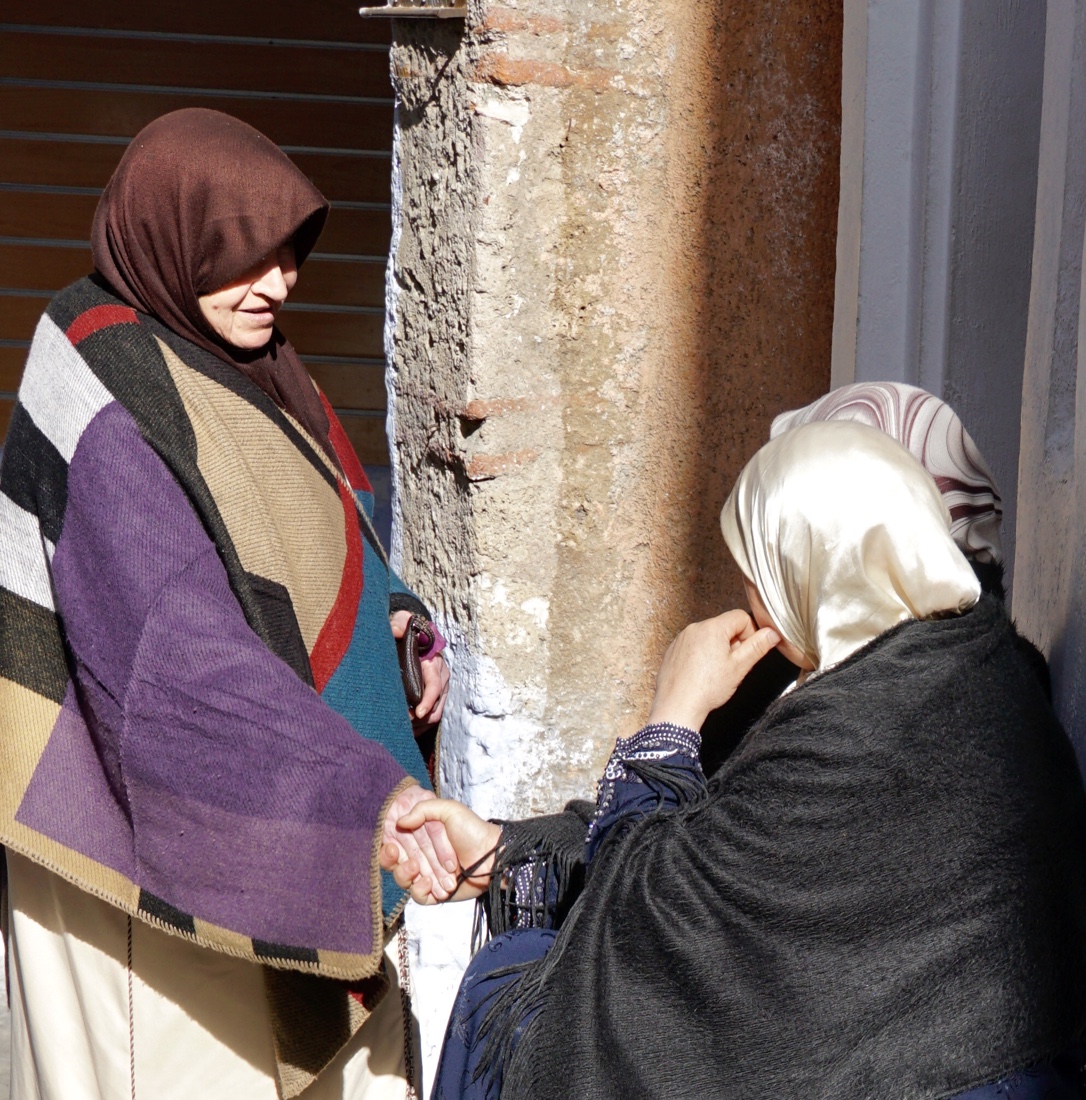 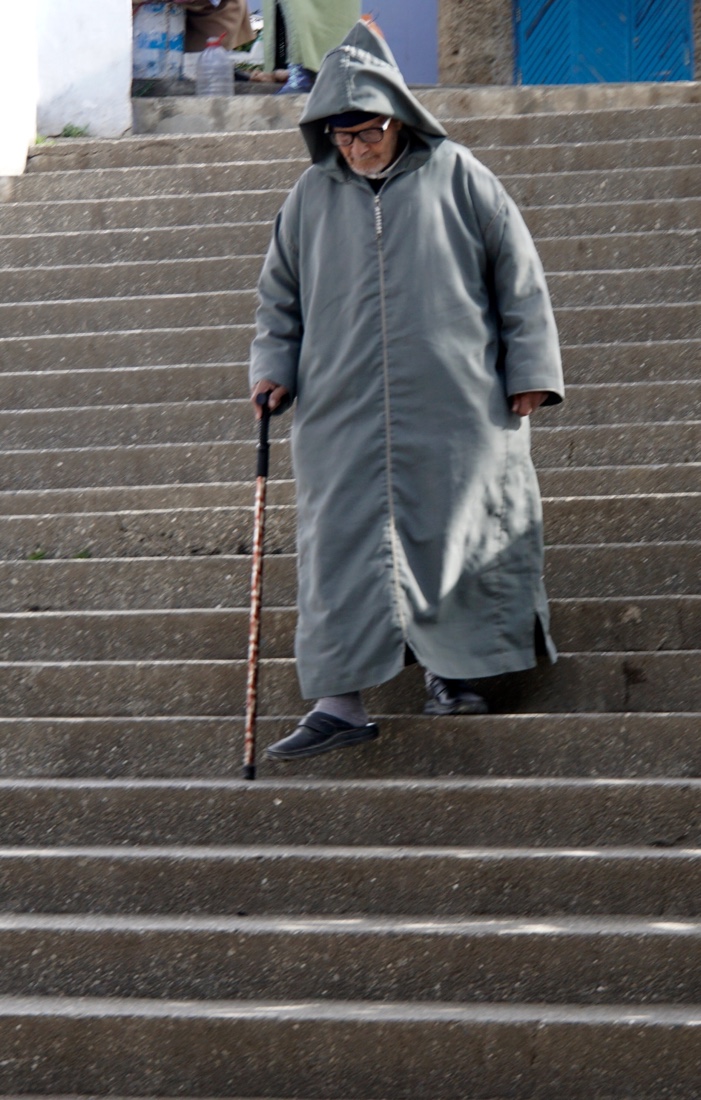 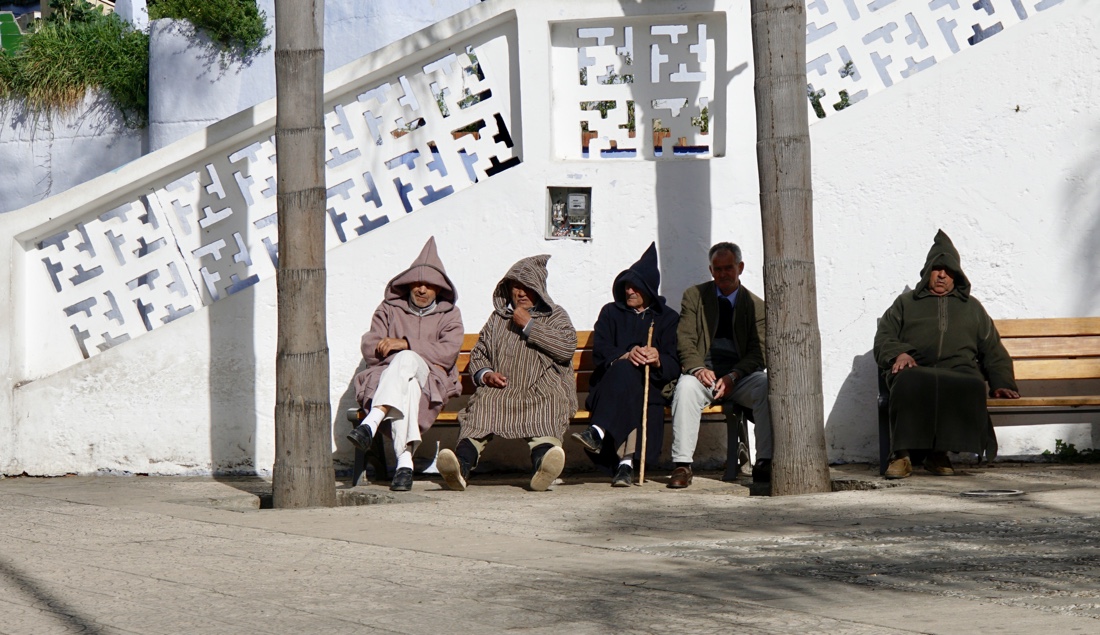 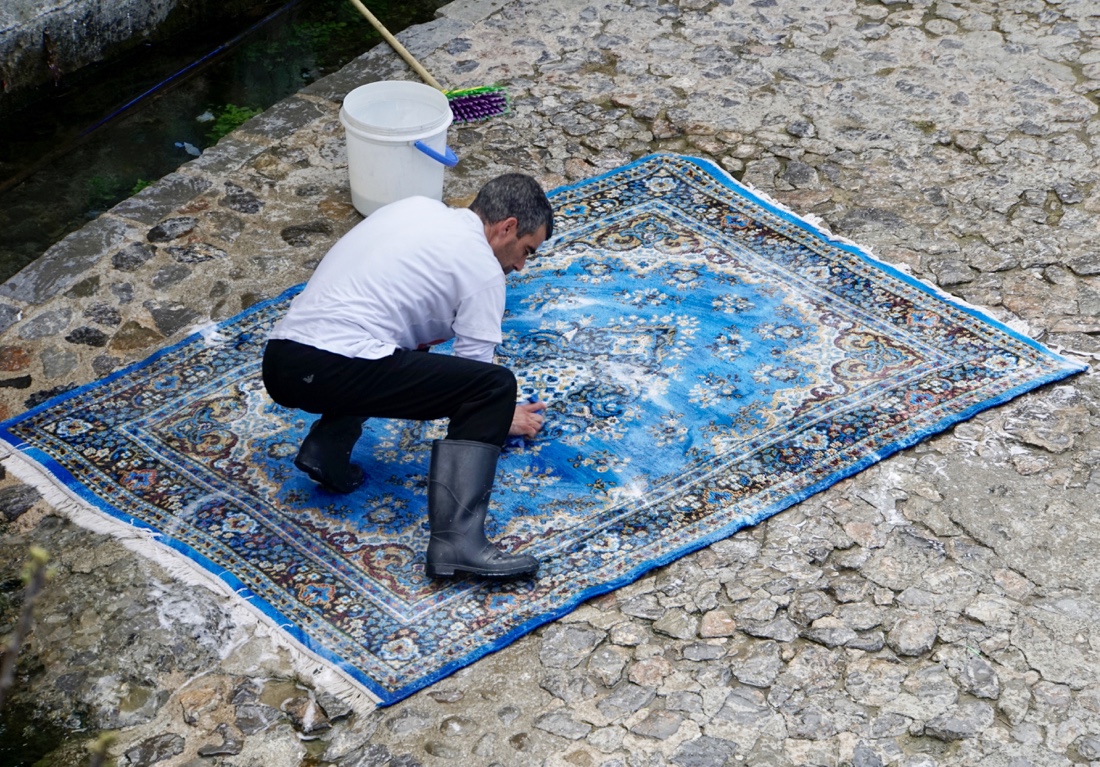
and spend time looking for carpet runners with Ahmed in his store near an olive tree. Ahmed spent time at Fordham, living in the Bronx, and very good naturedly hauled out many runners, none of which fit the bill for us. We sought out Ahmed at Ahdina, our travel agent’s, suggestion.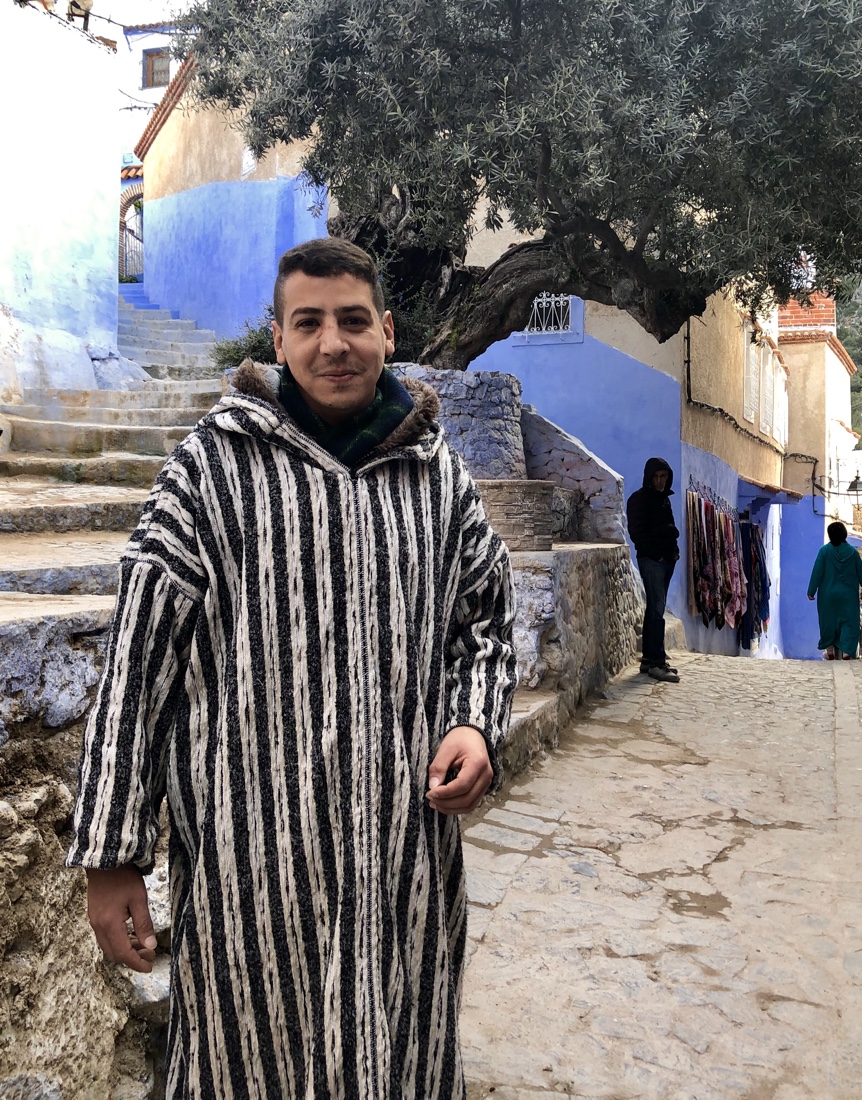
Around 10:30, we depart Chefchaouen for Fes. Note: although you can see the city spelled Fez or Fes, Younes is adamant that the latter is correct. Fes refers to “pick axe” with which the city was built. There is also a legend that a pick axe made of gold was found buried in Fes. Fez refers to a hat, which has no connection to the city.
Random thoughts on Morocco. Many olives. Many donkeys. Many sheep. Good roads. Very comfortable vehicle, a Mercedes SUV. Cloudy weather, but no rain today, comfortable, but coolish.
You may recall from my first post, that Rick is the son of Chicago friend, Judy Gaynor, who I ran into at a lecture in Chicago and planted the idea of a trip to Morocco in my mind. Rick is a lawyer who I met even before I knew his parents because probably 35 years ago he was a young associate at a San Francisco law firm that I did some consulting work for. He is a free spirit, we hit it off and have stayed loosely in touch over the years. He has traveled a great deal, and lived in places around the world, so I’ve occasionally sought his advice.
Rick currently works for Millenium Challenge Corporation, a US governmental organization that funds economic development projects in stabile countries around the world in five year substantial, non-renewable grants. Rick is currently finishing the second year of a 3-year commitment he made in Rabat, Morocco, working on the portion of a $900 million grant that deals with reformation of real estate records and land ownership in Morocco, a delicate and highly political project. Anna works on development projects for Germany.
After a delightful lunch with Rick and Anna, the four of us visit a photography exhibit Anna knew about across the street from the restaurant, of works by Daoud Aoulad-Shad. The photography is good, but not great.
Carol and I are then driven approximately 3 1/2 hours up the coast and then north-east towards the Rif Mountains and its rich agriculture of lush produce, both legal and less so (it’s a huge producer of hashish), but both beautifully nurtured. We head to the once sleepy town of Chefchaouen, which has become something of a must for visitors to the North of Morocco.
Lovely countryside. Though landscape photography is not my thing, here are a few attempts.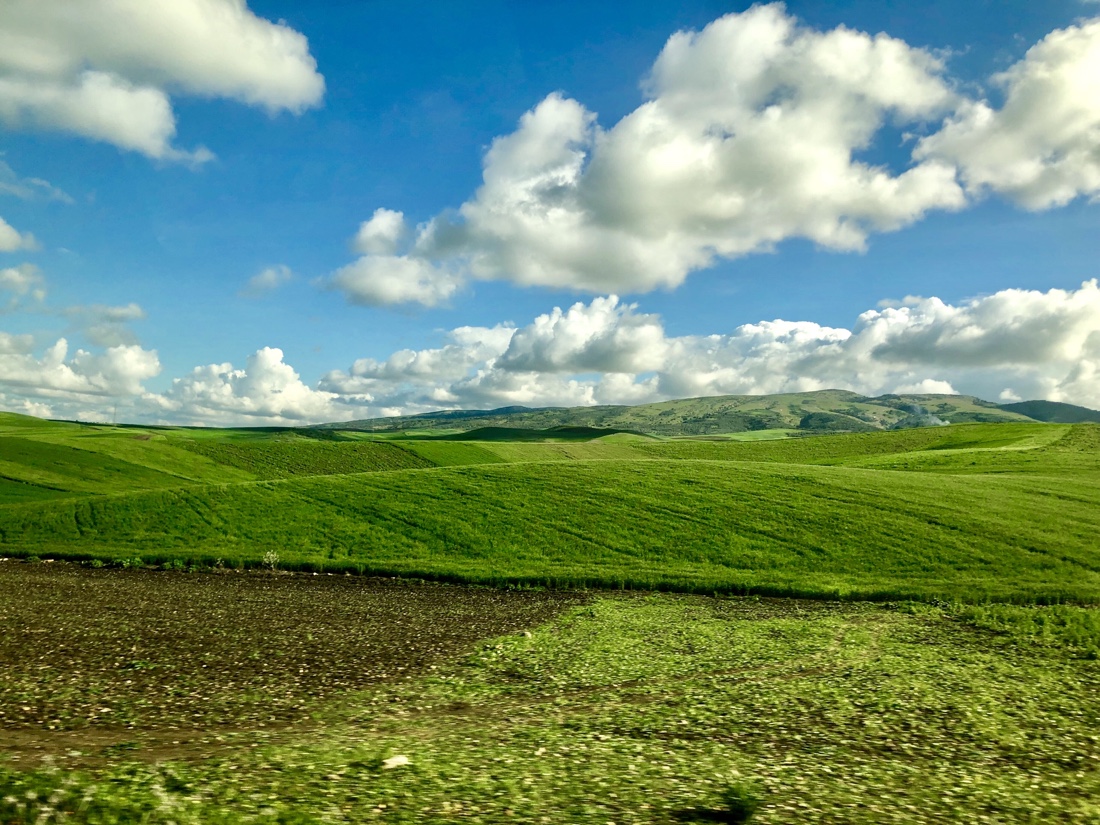  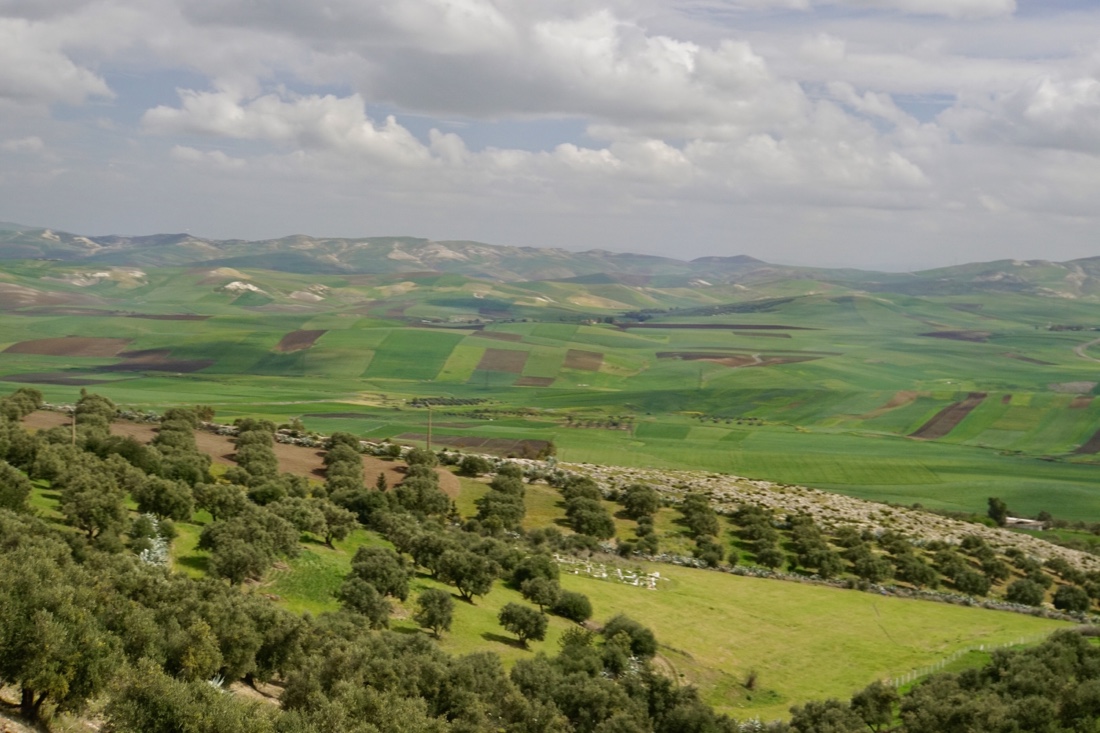
Our first stop is Moulay Idriss, one of Morocco’s most venerated Muslim sites. It was said that for Moroccans who couldn’t afford the trip to Mecca, then to travel five times in one’s life to Moulay Idriss was of equal merit. We have lunch at a local restaurant, then walk around a bit, sneaking a few more photos of locals. 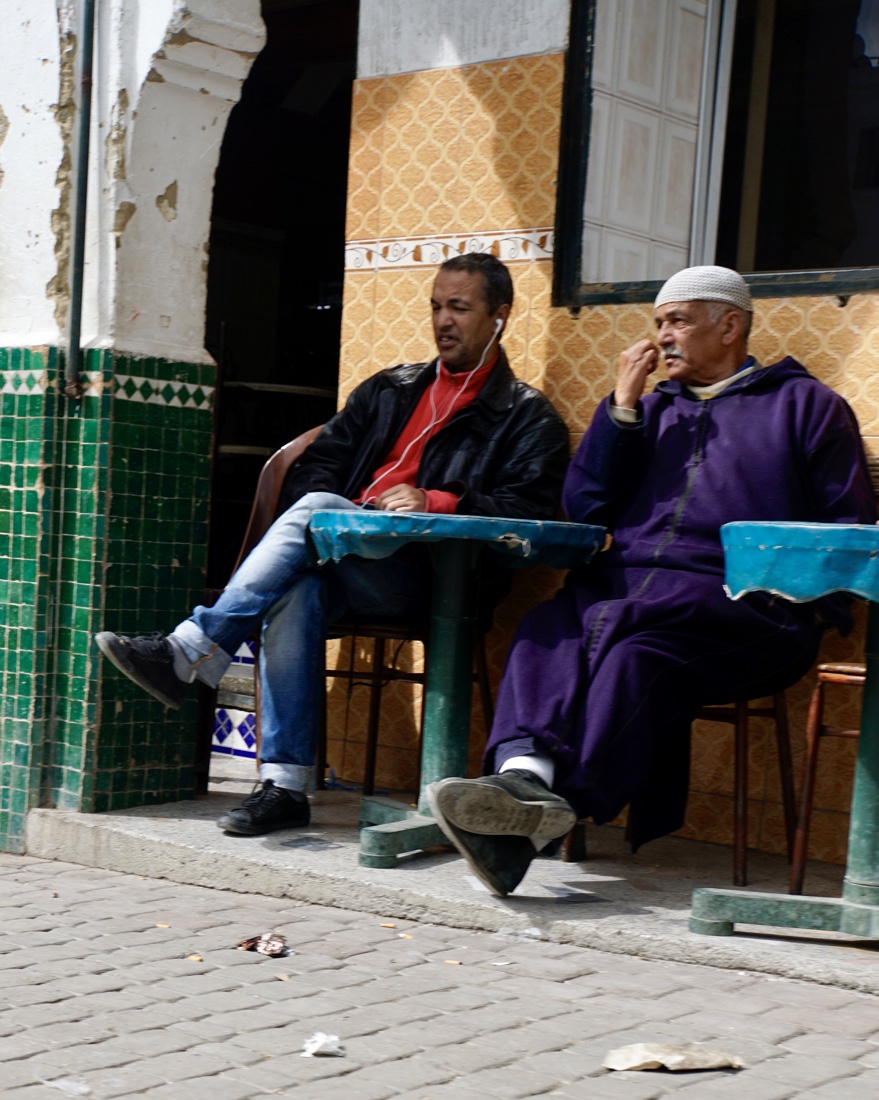 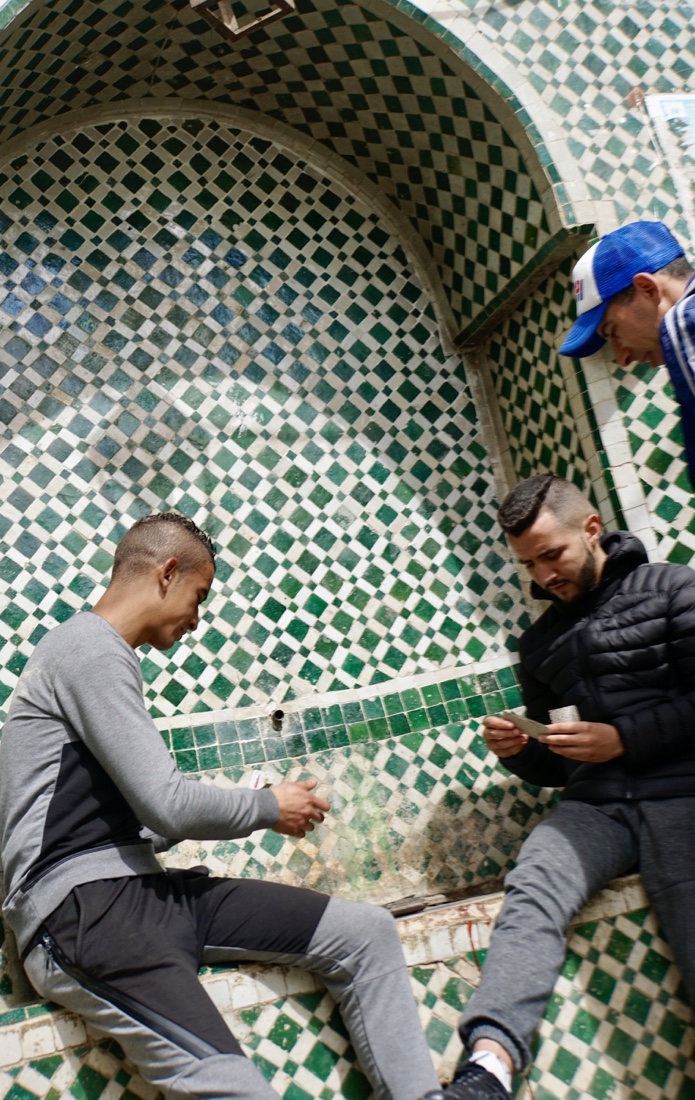 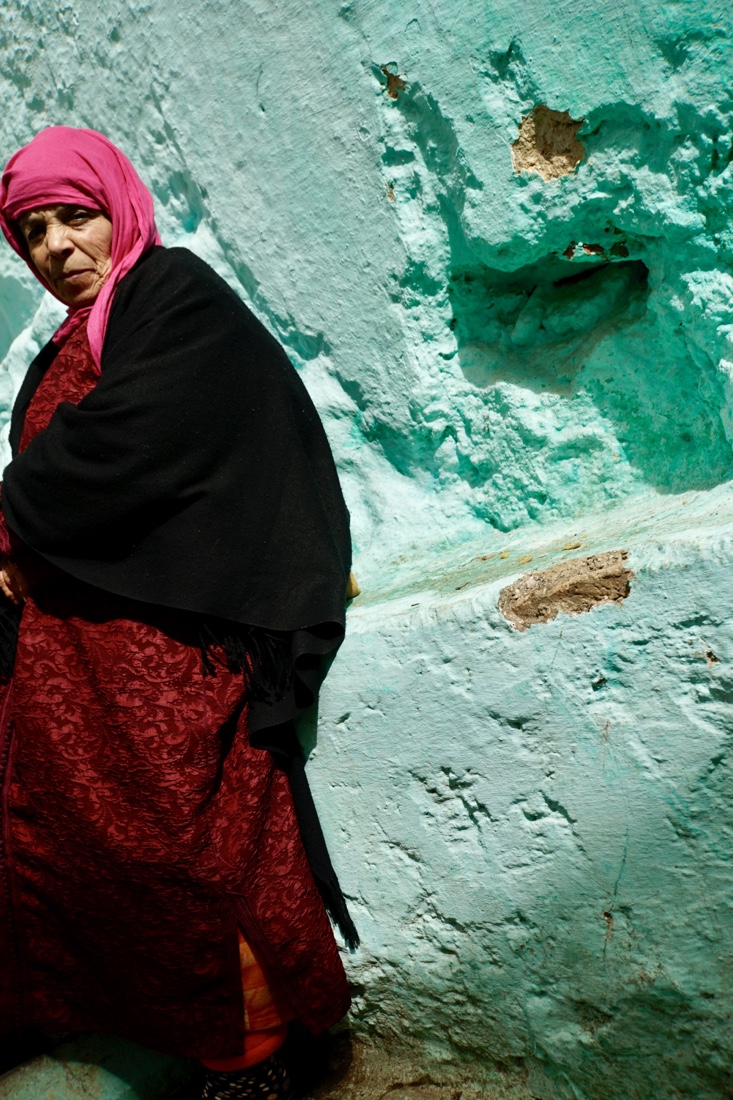 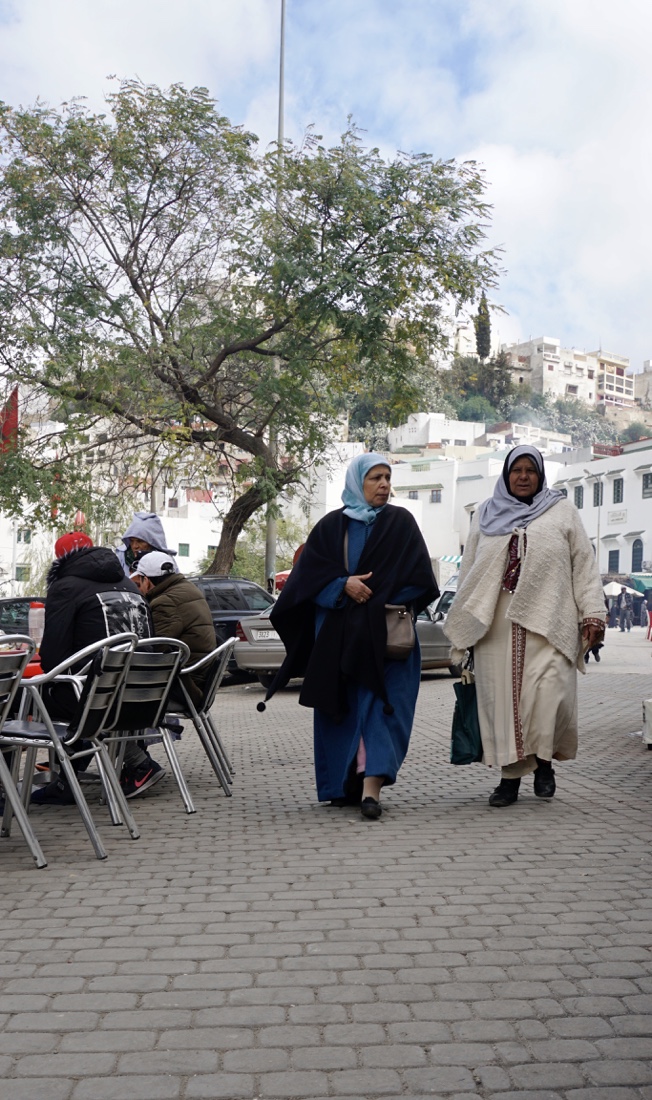 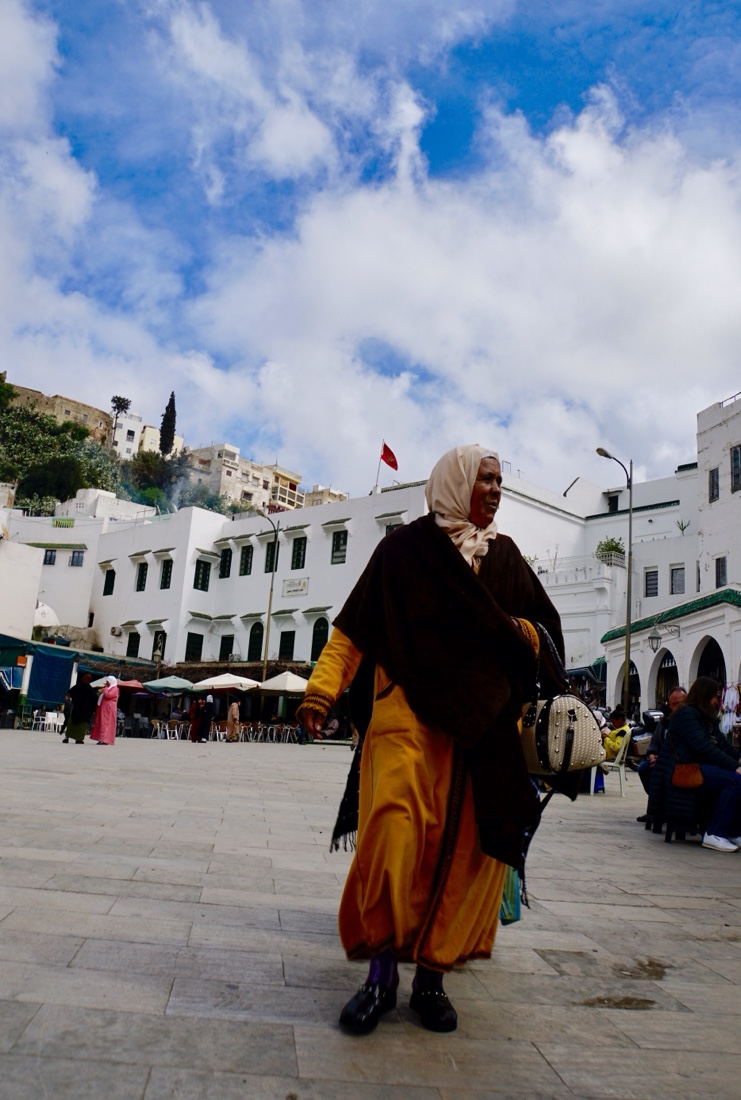
Next we stop at the ancient Roman ruins of Volubilis, where we find beautiful mosaic floors, uncovered and brought to light by the archaeologists that still work on this partly excavated site. It was developed from the 3rd century BC onwards as a Phoenician and later a Carthaginian settlement. The town fell to local tribesmen in 285 and was never recovered by the Roman Empire. Constantly uncovering this city beneath the sands of time is now exclusively a Moroccan project organized by Moroccan archaeologists.
This stop is a great example of the unexpected joys of travel. Our guide was an elderly gentleman and, with the combination of my being challenged in hearing to begin with and the difficulty of understanding him, I was about to tune him out entirely. I mean, who really gives much of a shit about the Phoenicians, the Carthaginians and the Romans and who ruled when and built what. I’m more interested in real people today. Still, the site was very impressive, his knowledge extensive and his enthusiasm palpable. So, gradually, I warmed to Khalid, especially when he talked about himself.
Khalid was from a nearby town and at age 14 was in a movie about Jesus of Nazareth, directed by Franco Zeferreli and starring Anthony Quinn and Robert Powell. This changed his life. He became intensely interested in, and studied, history, began working on the excavation of the site in the 1980s, and has guided at the site for many years. Here is Khalid as he appeared in the movie at age 14 (he emailed the photo to me), and here he is with Carol today.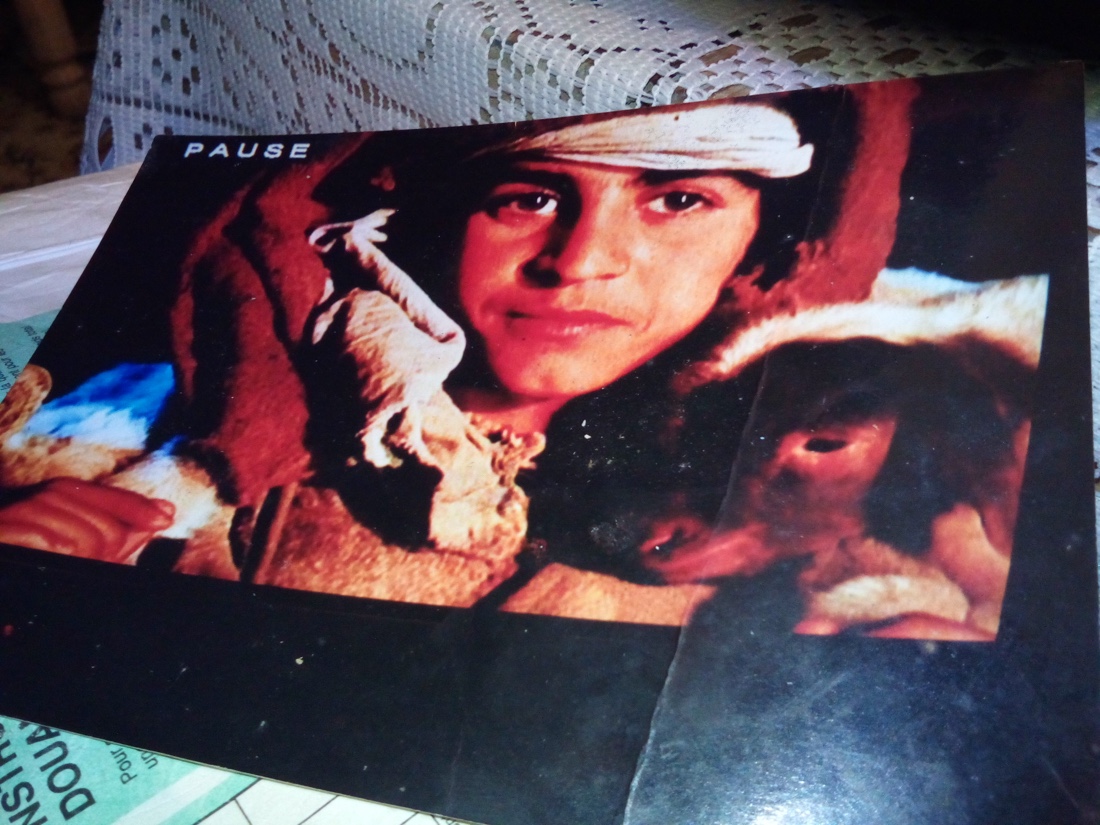 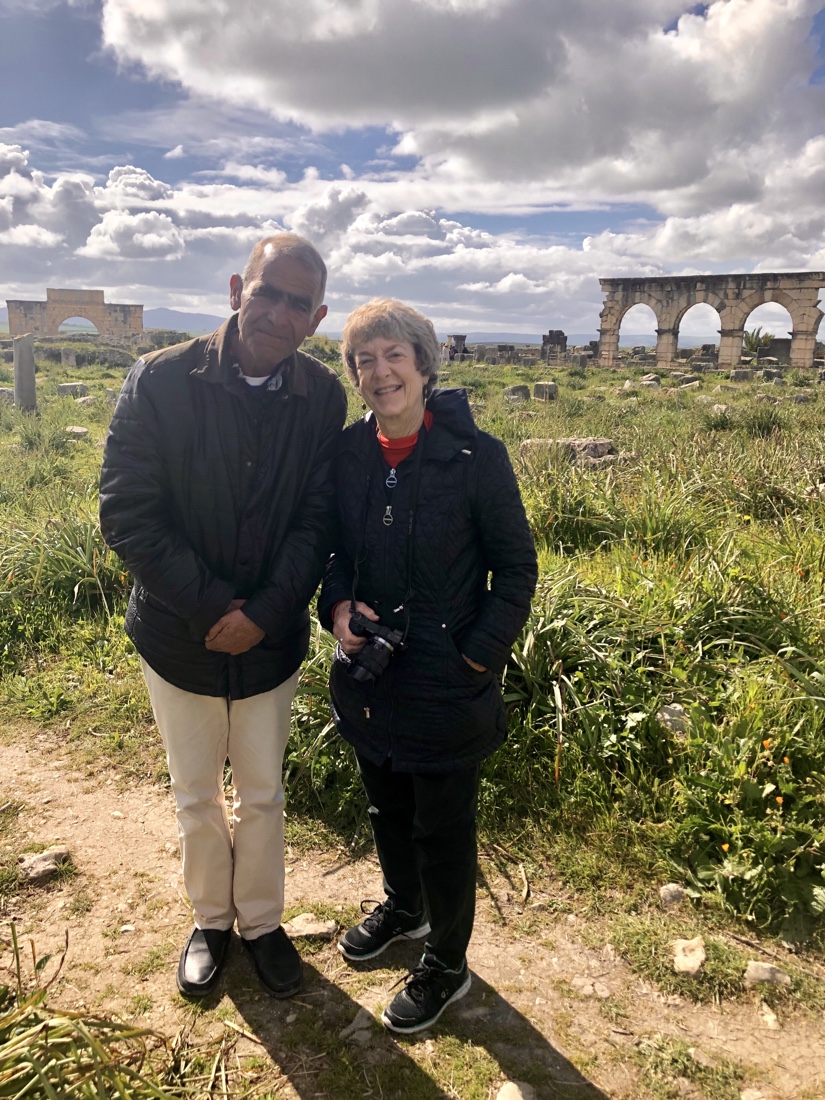
Here are multiple photos of the site.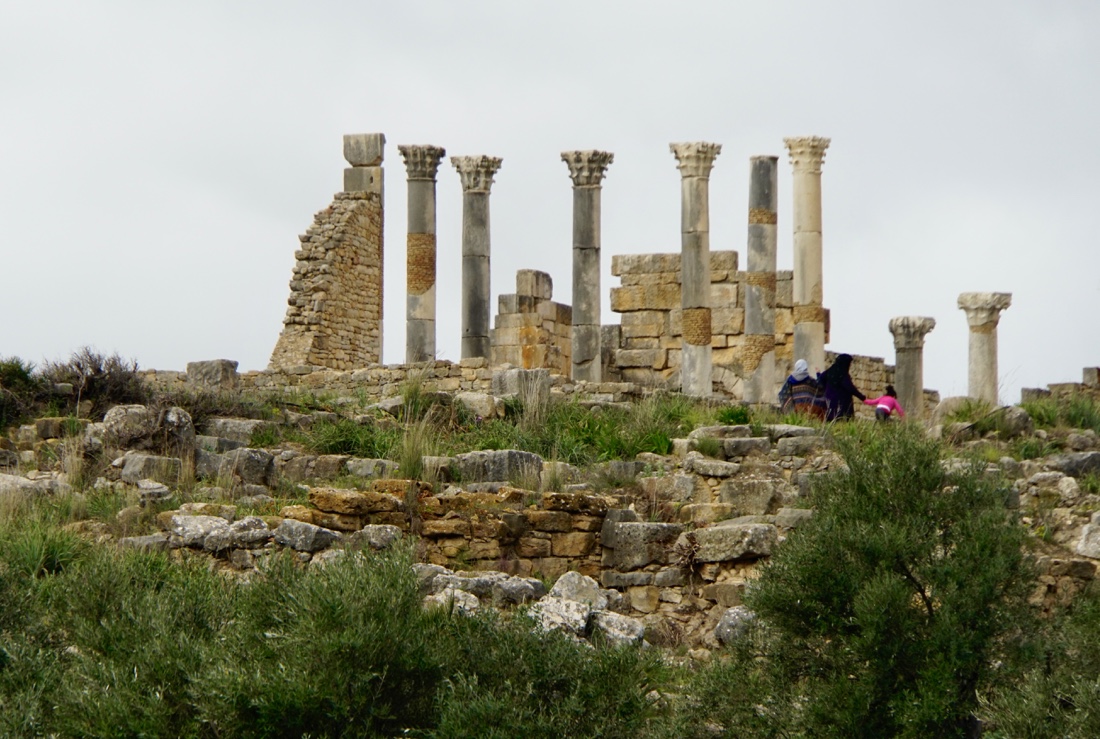 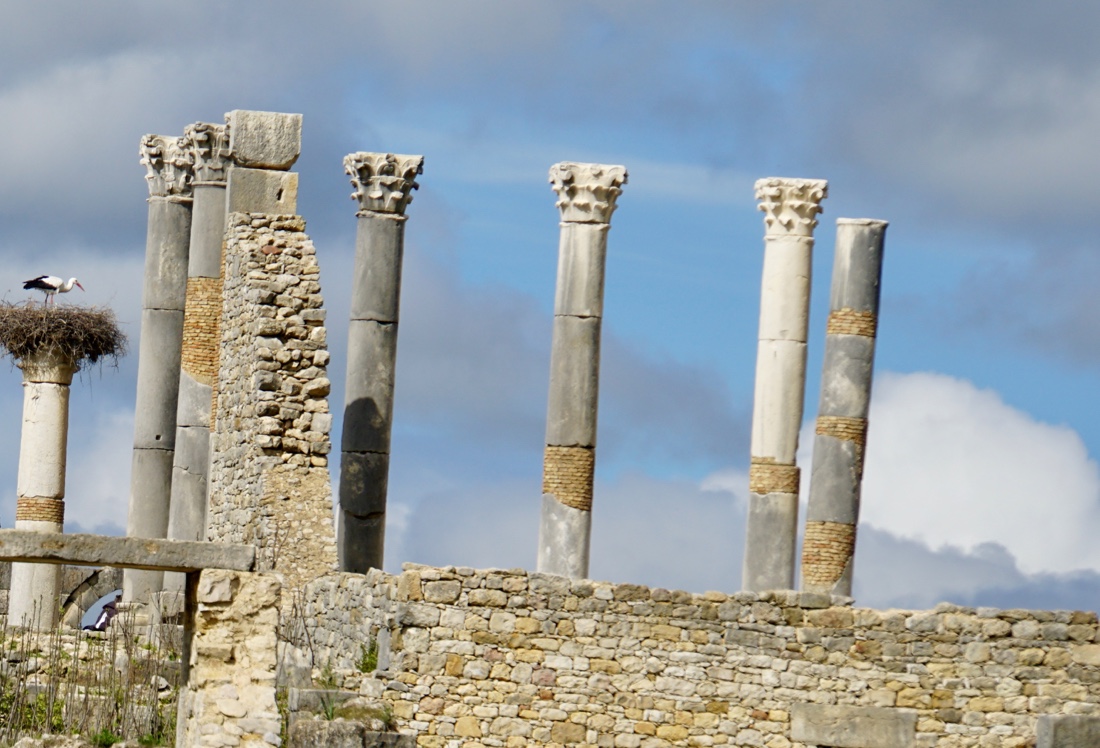 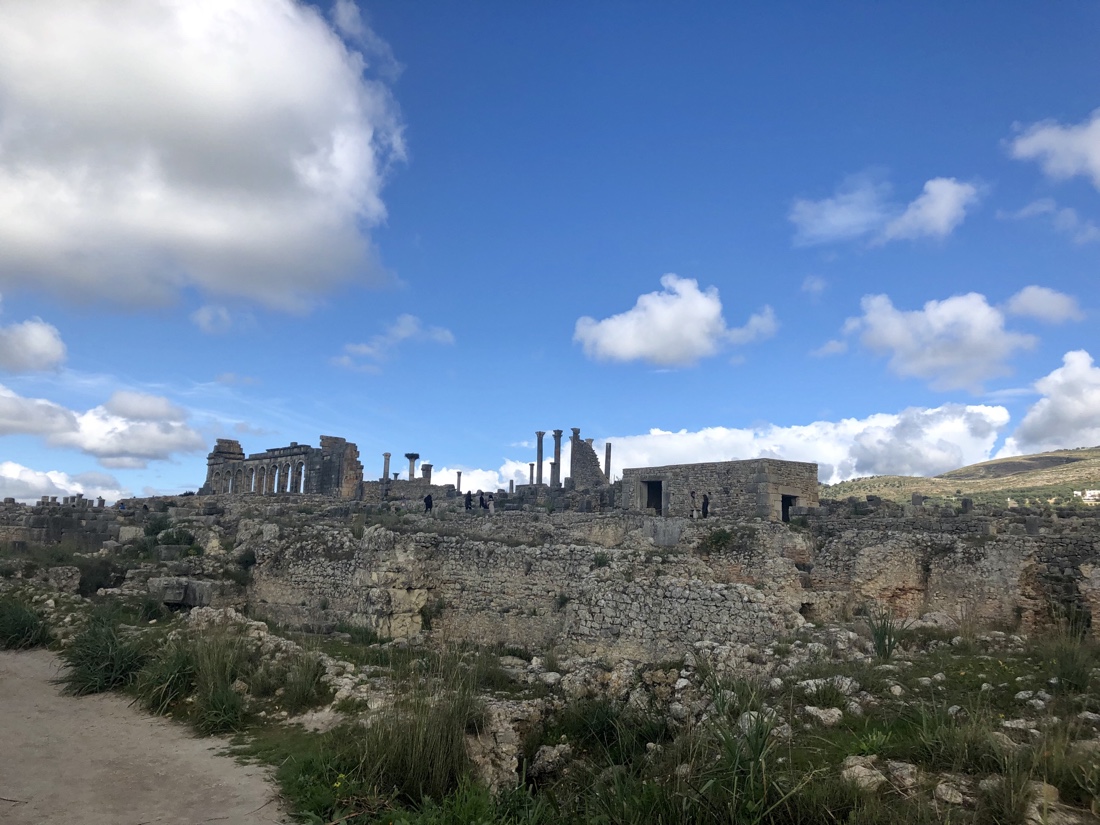 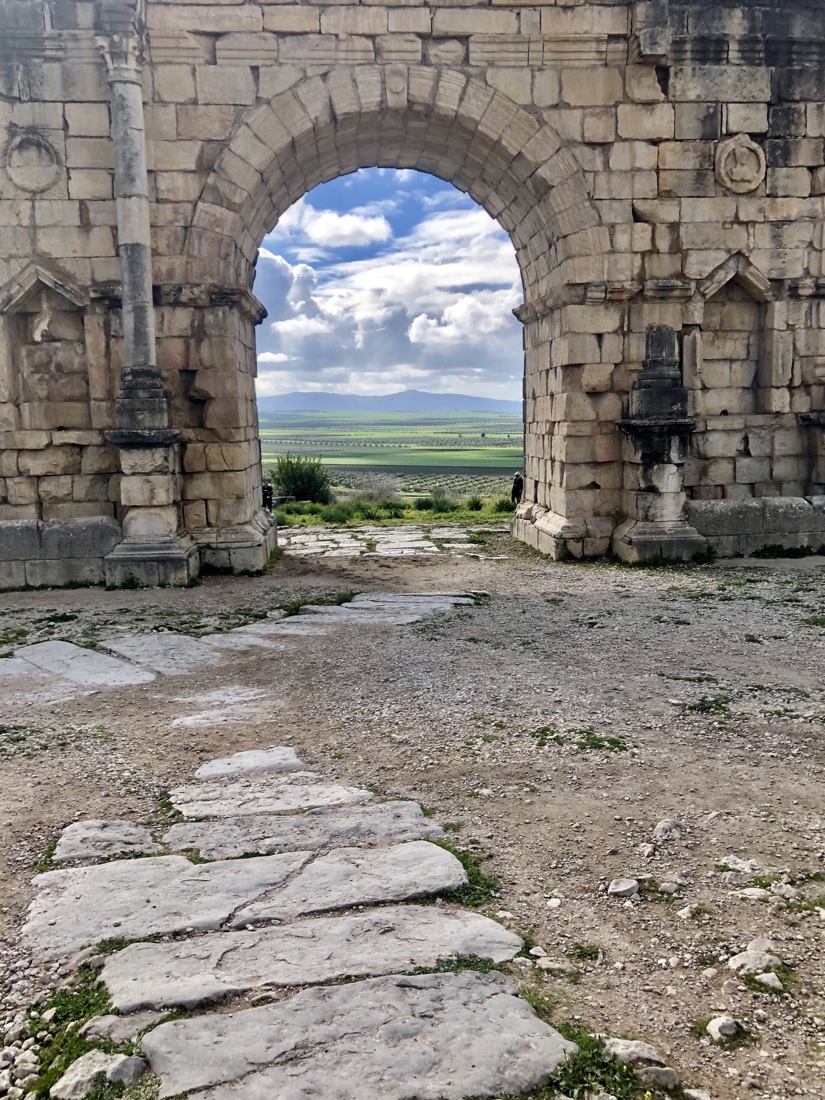 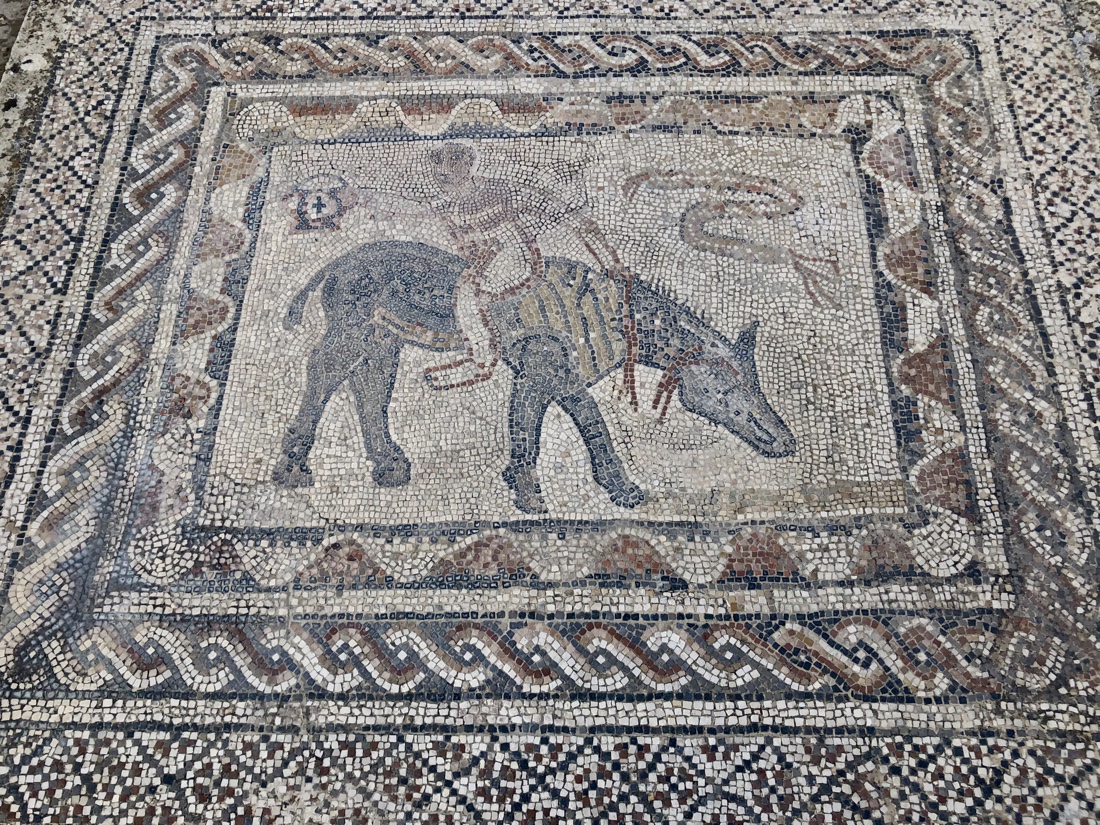 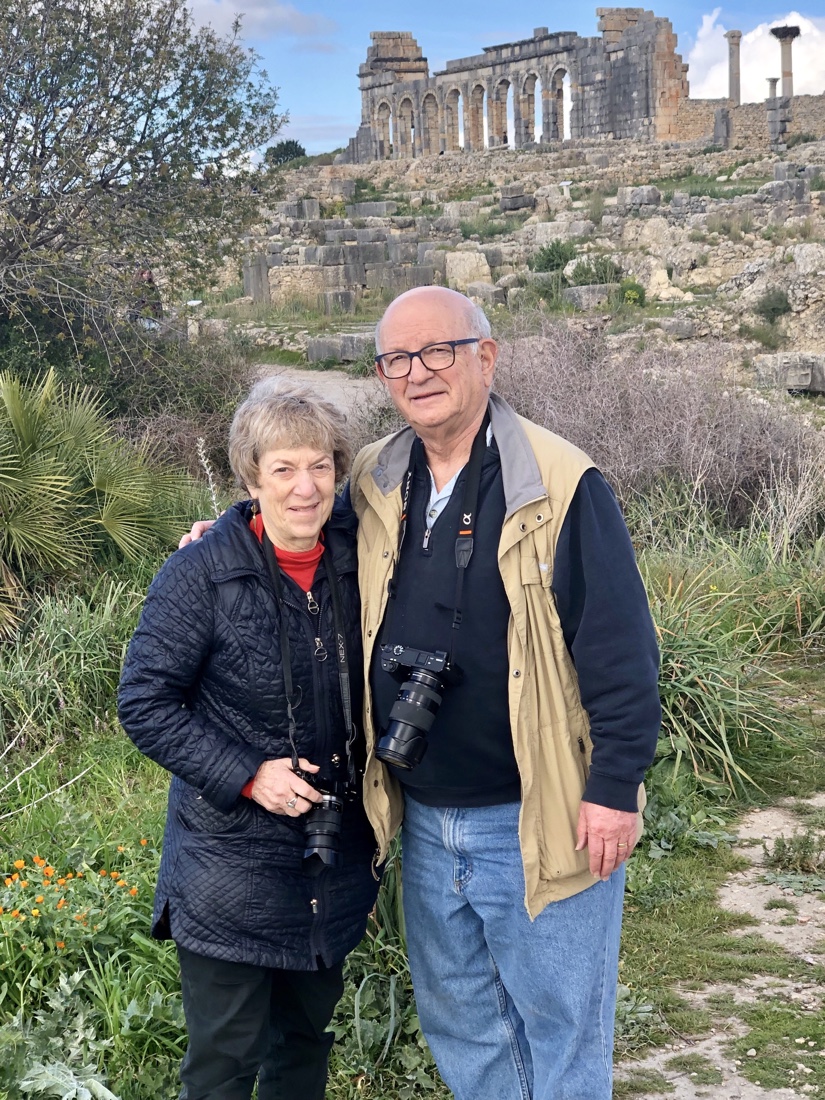
And, oh, by the way, Khalid, the old man, is twenty years younger than we are.
From Volubilis, we drove on to Fes, about an hour and a half away. We check in to our luxurious Riad, Palais Amani, a 17th century palace rebuilt in the 1920’s and then restored some years ago to become the beautiful 18 bedroom hotel, restaurant and spa it is today. Known as ‘Fes’ best kept secret’ it is a true oasis of calm in the bustling medina with a courtyard and gardens in the traditional Islamic design.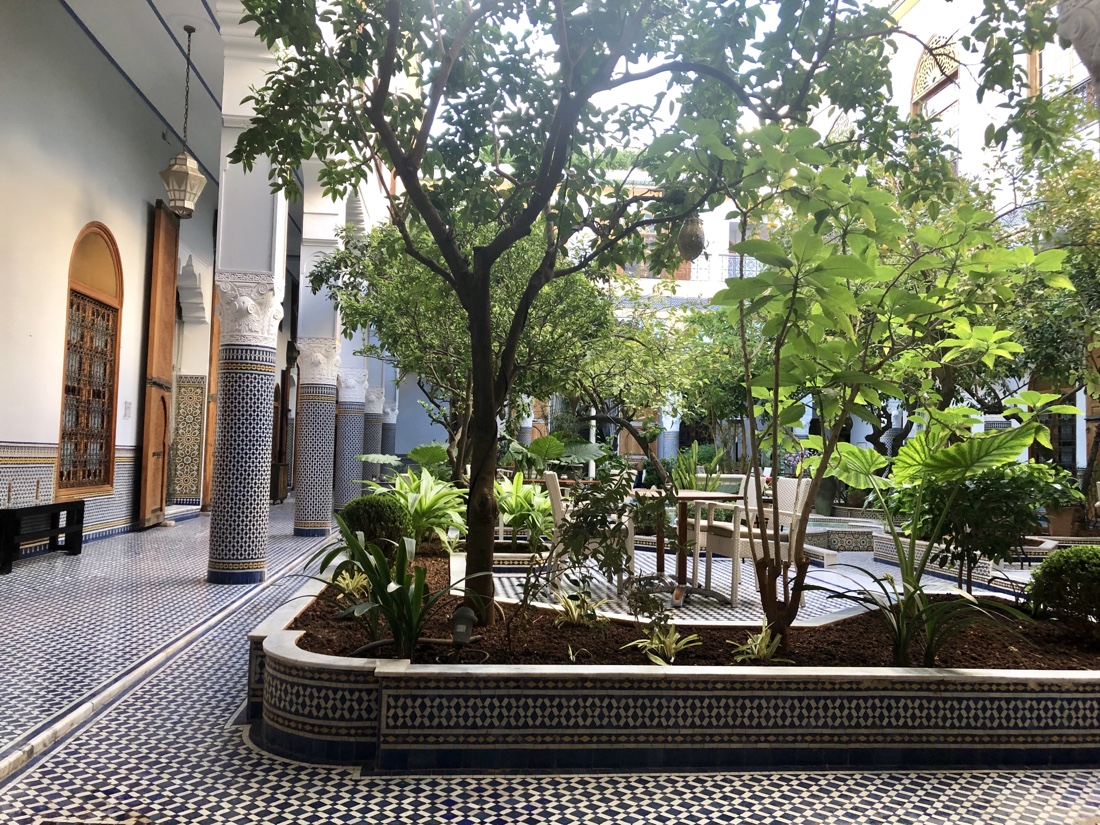
Rooms combine the traditional with modern and luxurious comfort with an atmosphere that makes one feel like this is your palatial home. We’re given a tour of the riad and take an ELEVATOR, praise the Lord, to the roof, which affords lovely views of the Medina.
The Zunkels have surprised us by arranging for us to have a hamam at the riad spa tonight. This was an extremely kind and generous gesture on their part. When Carol heard what it was, she declined and had a massage instead. I allowed the woman who spoke only Arabic to knead me, pour hot water over me and scrub my skin off with a sandpaper like glove. Then, on top of it, the guy who took me down and took our room key did not come back for me, so I was locked out of the room and reduced to calling down to the courtyard for help in my bathrobe. Half an hour later, Carol has still not shown up. Probably she will, though. Check to tomorrow’s blog, if you’re curious.
I’m sure these have been going on for centuries and that many people love them, but this will be my last hammam. If I need to make a choice, next time I’ll opt for water boarding. I’m sure there’d be a kinder way to say this, maybe that hammam is not my cup of tea. But I’m not a cup-of-tea kinda guy. I want the Zunkels, who I know will read this, to know two things. First, I really do appreciate their gesture. And, second, I definitely will remember this part of the trip.
P.S. Carol just showed up.
March 7
Today, after breakfast on the roof of the hotel, we drive to the capital of Morocco, Rabat where we visit the Archeological Museum (Museum of History and Civilizations) and the Contemporary Art Museum, both of which are very worthwhile and manageable in size. The Archeological Museum has a wonderful collection of works form prehistoric times to approximately the 13th century, all beautifully displayed and lit. We get a taste of what it’s like for the non-English speaking world, though, because artifacts are labeled (in very small type) in Arabic and French.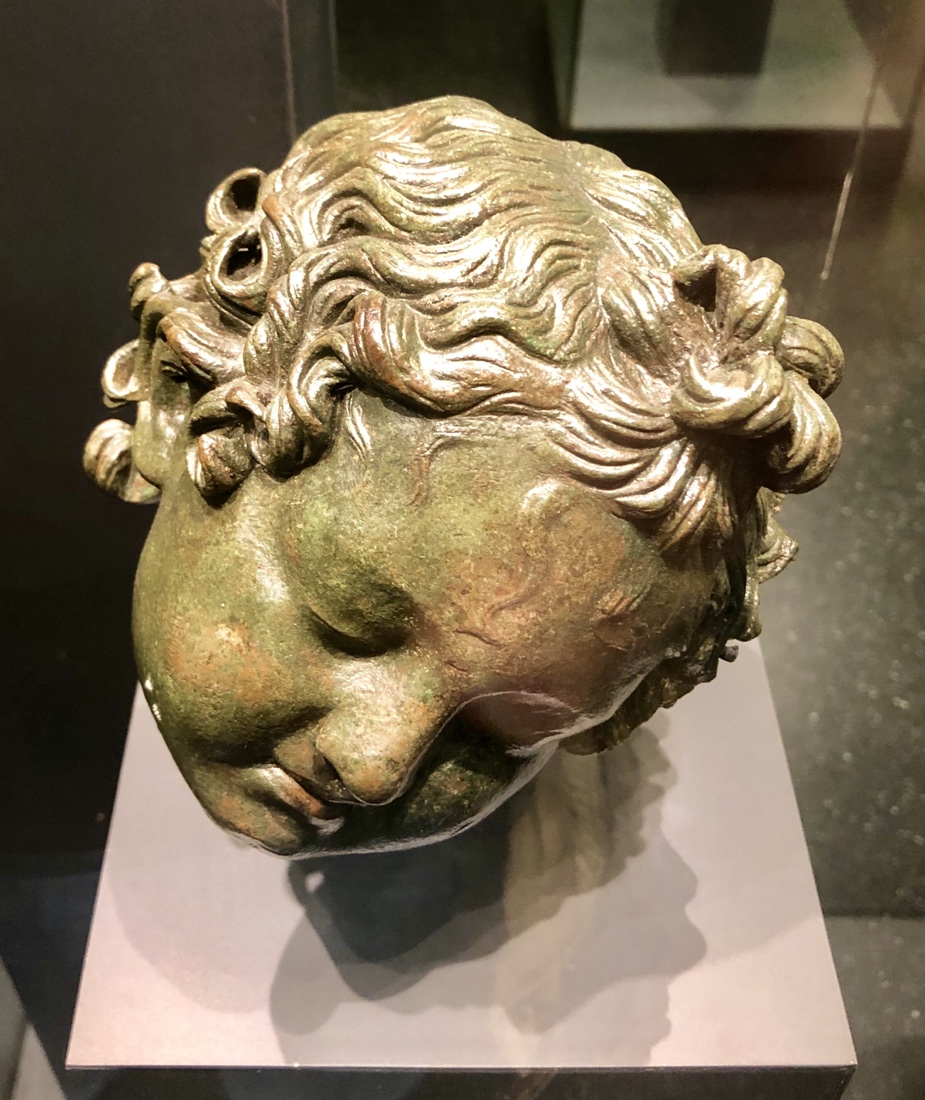 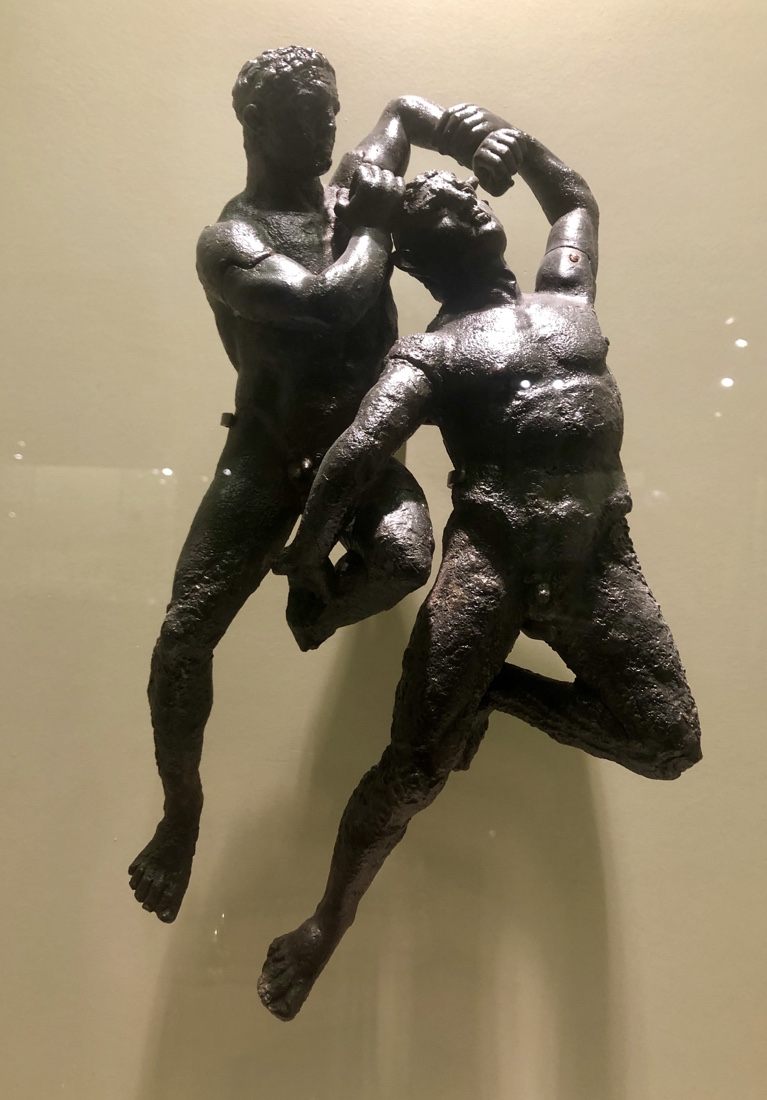 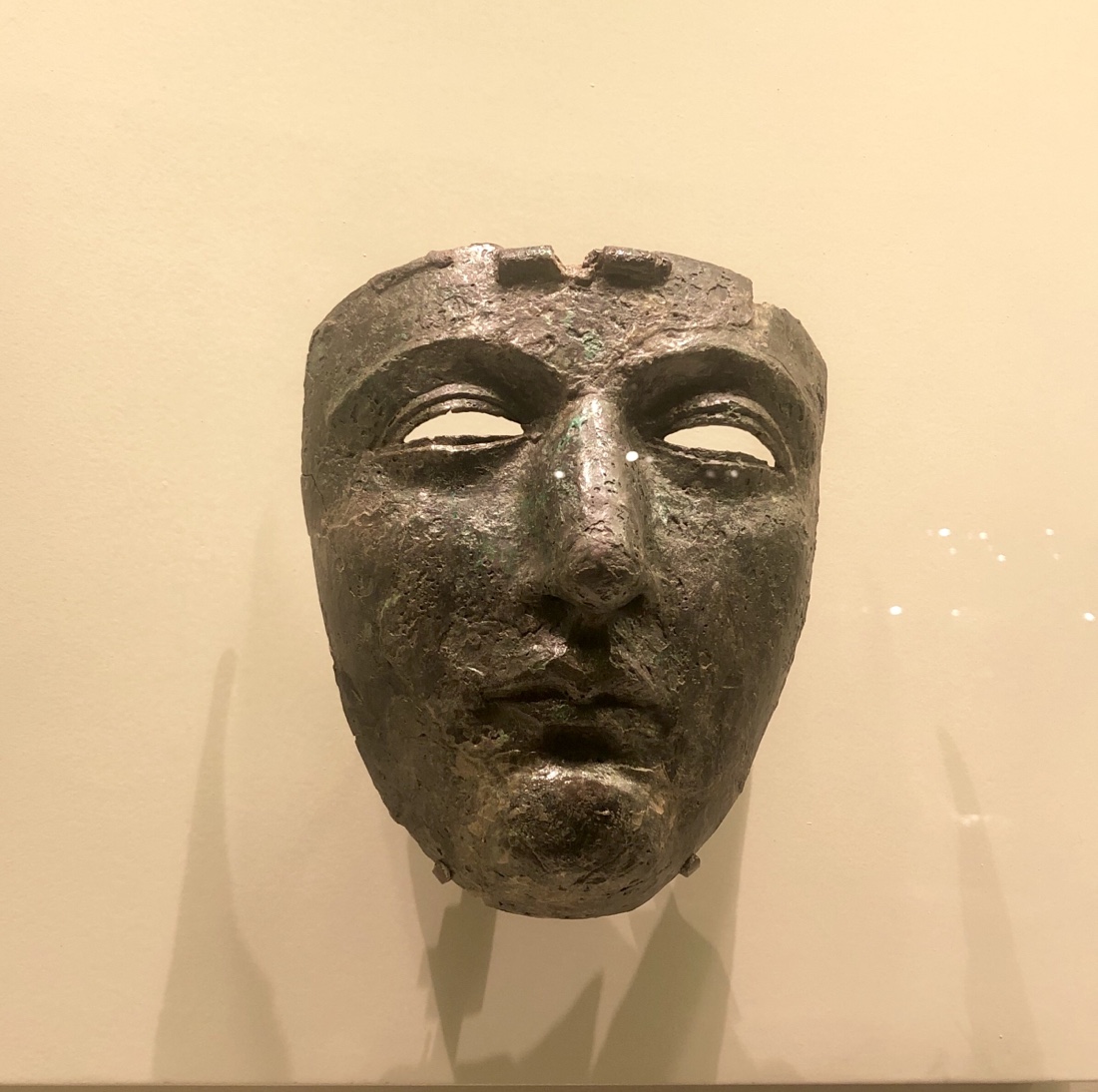
The Contemporary Art Museum has a varied collection of paintings, some to our taste, and many, not so much. Below are photos of segments from several pieces. There’s certainly enough of interest to make a short visit worthwhile.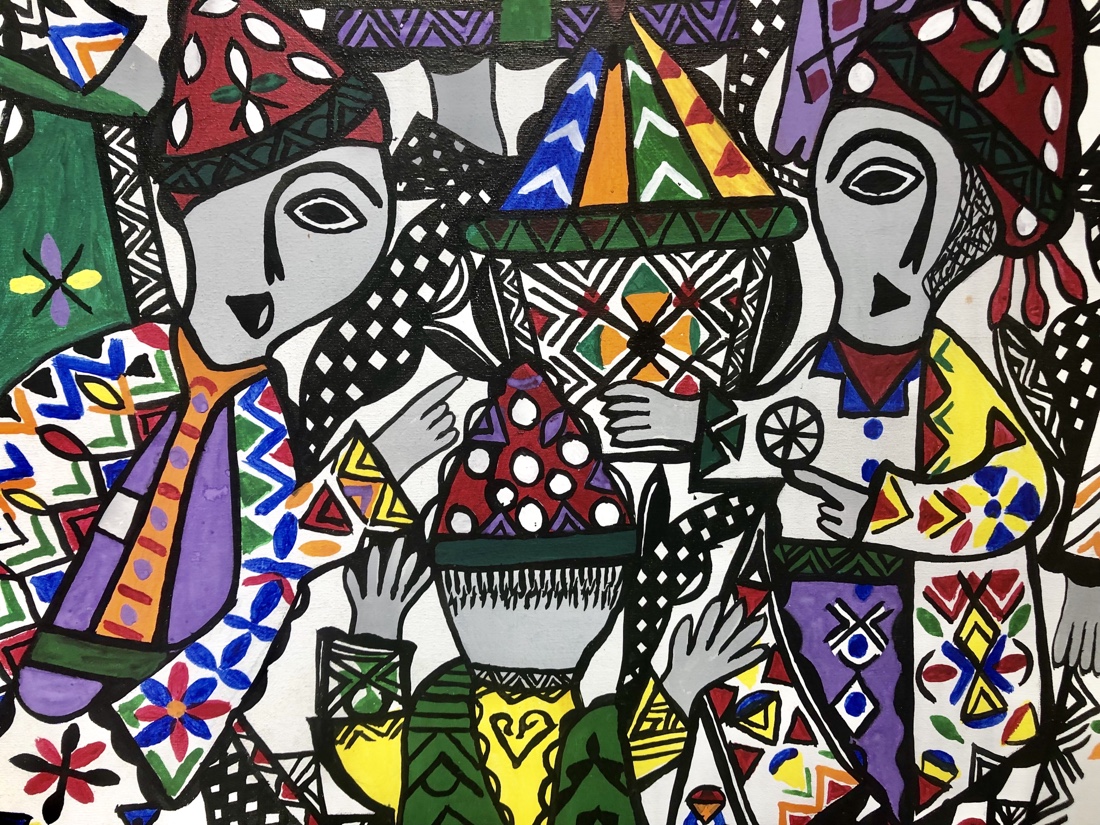 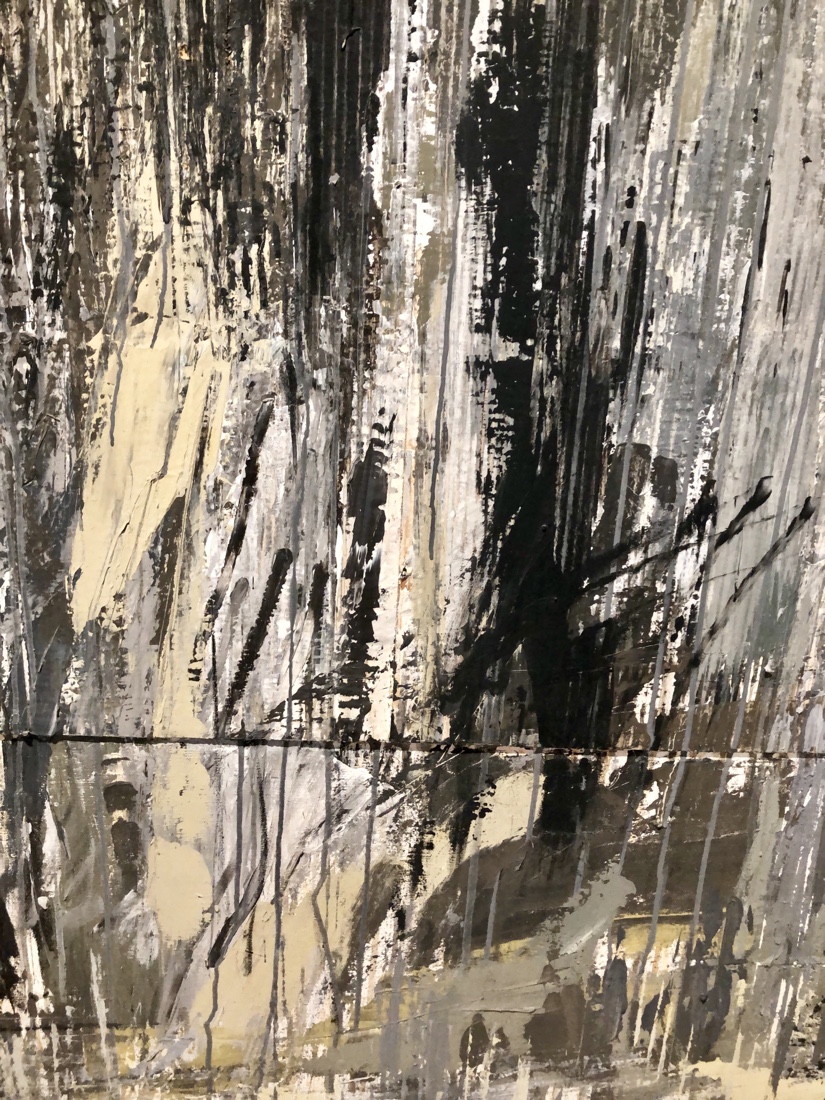 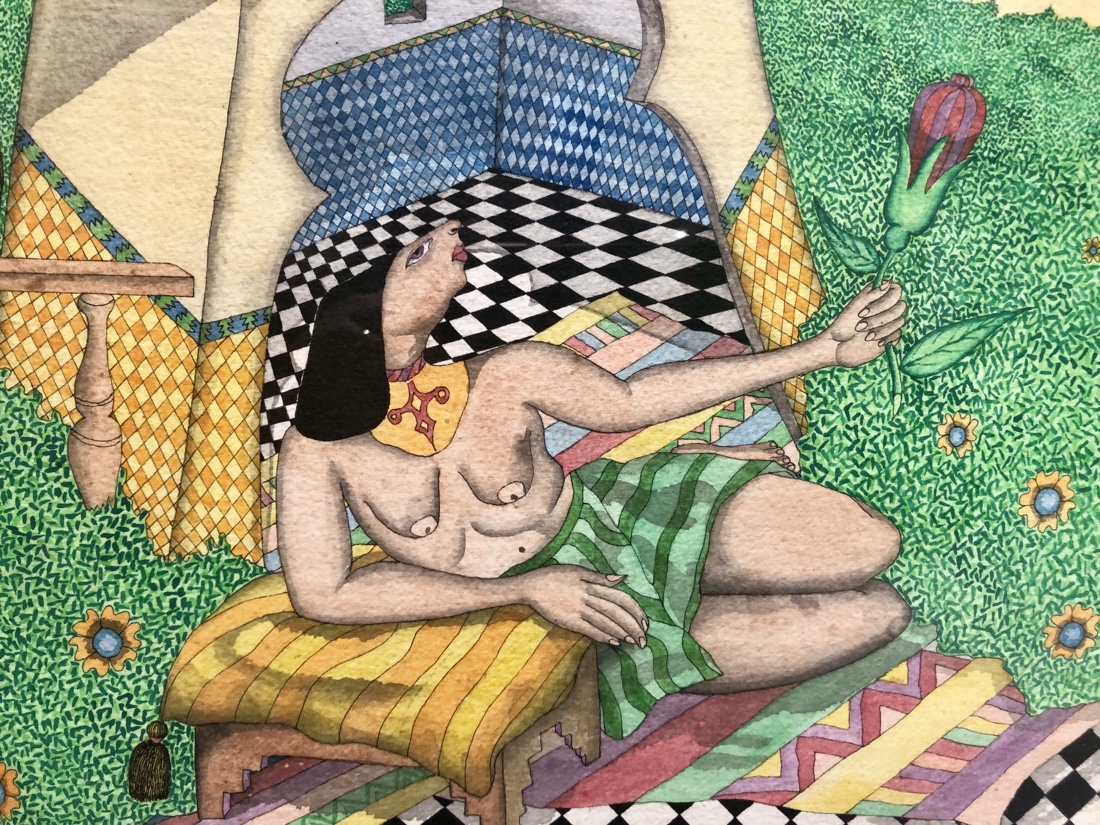 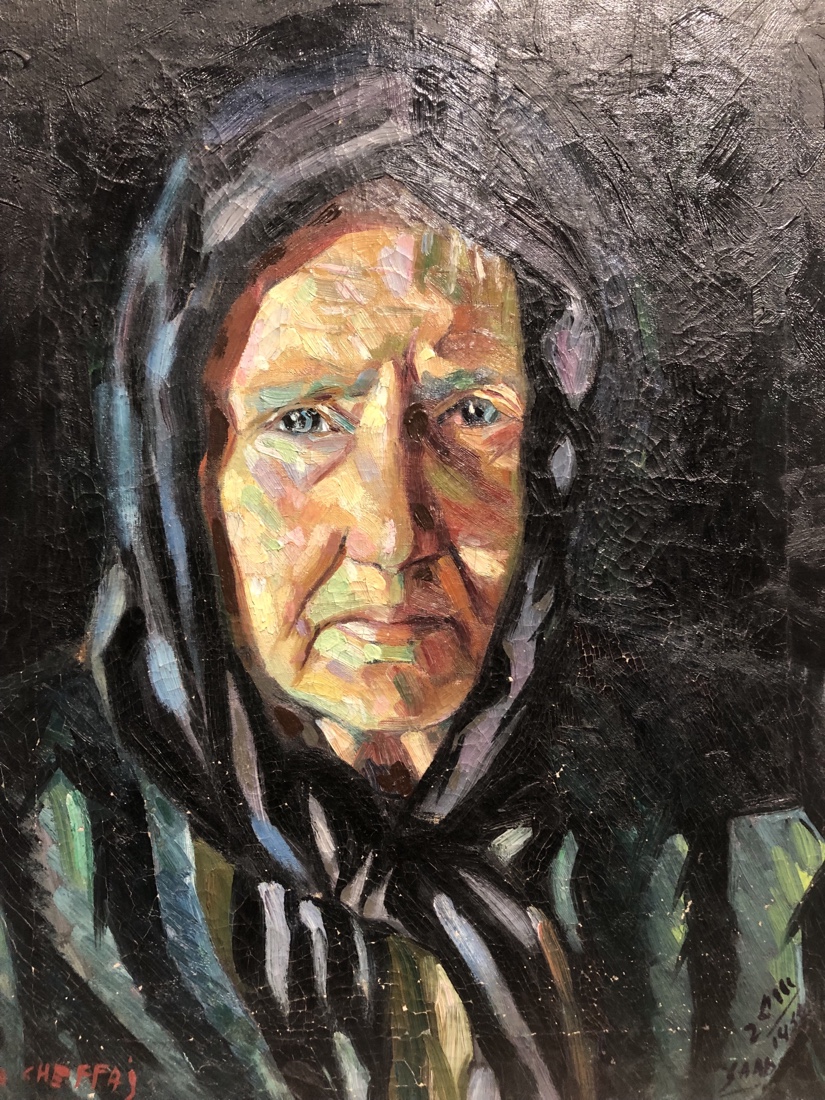
We meet our friend Rick Gaynor (we were not scheduled to go to Rabat, but went primarily to see Rick) and his German girlfriend, Anna, for lunch at Ty Potes, a small restaurant Rick has picked that specializes in crepes. 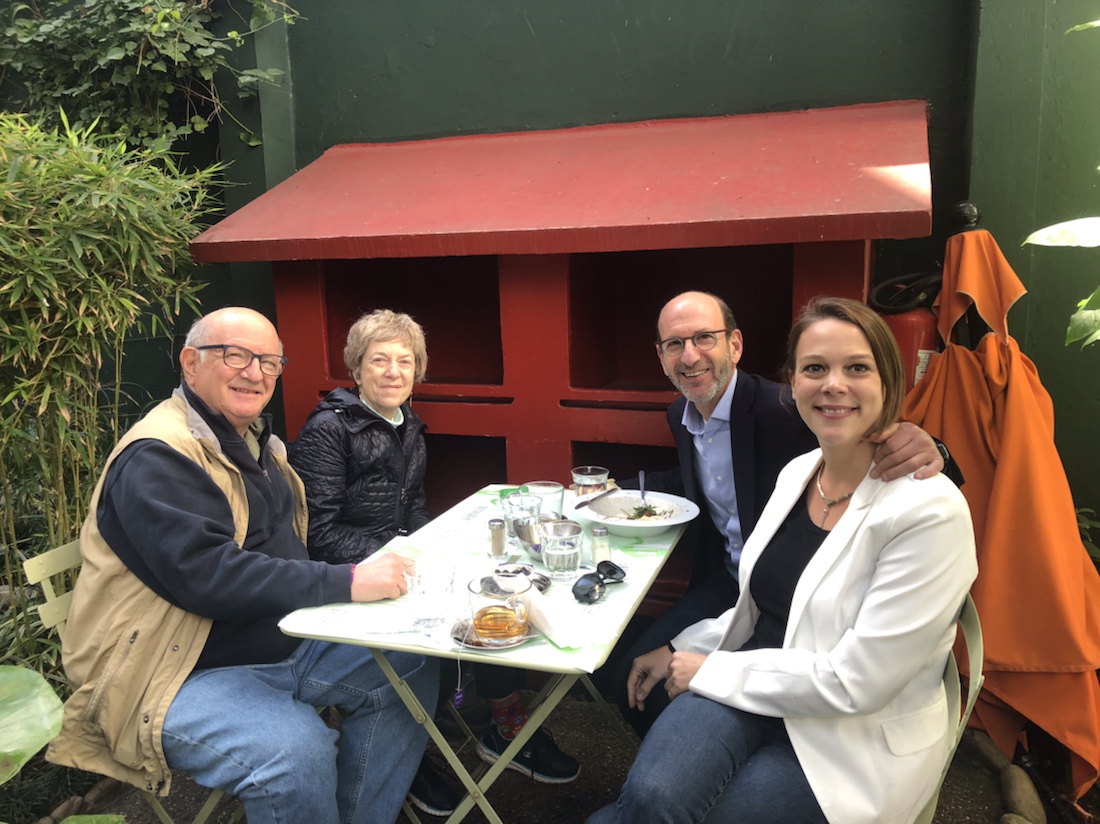
You may recall from my first post, that Rick is the son of Chicago friend, Judy Gaynor, who I ran into at a lecture in Chicago and planted the idea of a trip to Morocco in my mind. Rick is a lawyer who I met even before I knew his parents because probably 35 years ago he was a young associate at a San Francisco law firm that I did some consulting work for. He is a free spirit, we hit it off and have stayed loosely in touch over the years. He has traveled a great deal, and lived in places around the world, so I’ve occasionally sought his advice.
Rick currently works for Millenium Challenge Corporation, a US governmental organization that funds economic development projects in stabile countries around the world in five year substantial, non-renewable grants. Rick is currently finishing the second year of a 3-year commitment he made in Rabat, Morocco, working on the portion of a $900 million grant that deals with reformation of real estate records and land ownership in Morocco, a delicate and highly political project. Anna works on development projects for Germany.
After a delightful lunch with Rick and Anna, the four of us visit a photography exhibit Anna knew about across the street from the restaurant, of works by Daoud Aoulad-Shad. The photography is good, but not great.
Carol and I are then driven approximately 3 1/2 hours up the coast and then north-east towards the Rif Mountains and its rich agriculture of lush produce, both legal and less so (it’s a huge producer of hashish), but both beautifully nurtured. We head to the once sleepy town of Chefchaouen, which has become something of a must for visitors to the North of Morocco. This charming mountain town, known for its sky blue painted streets and fragrant orange trees, offers a relaxed alternative to the more bustling cities of Morocco. With a Spanish vibe it reveals the Andalucian traditions that influenced the region. A haven for photographers and fans of color, most of the population still is in traditional dress, the women in particular are colorful in their pom-pom lined hats and aprons. Our brief walk/climb to our hotel confirms that the town seems quite charming, our first real taste of what we think of as Morocco.
It’s after 5:30 and drizzling when we arrive so we have no real opportunity to photograph. Here are a few examples, though. More tomorrow.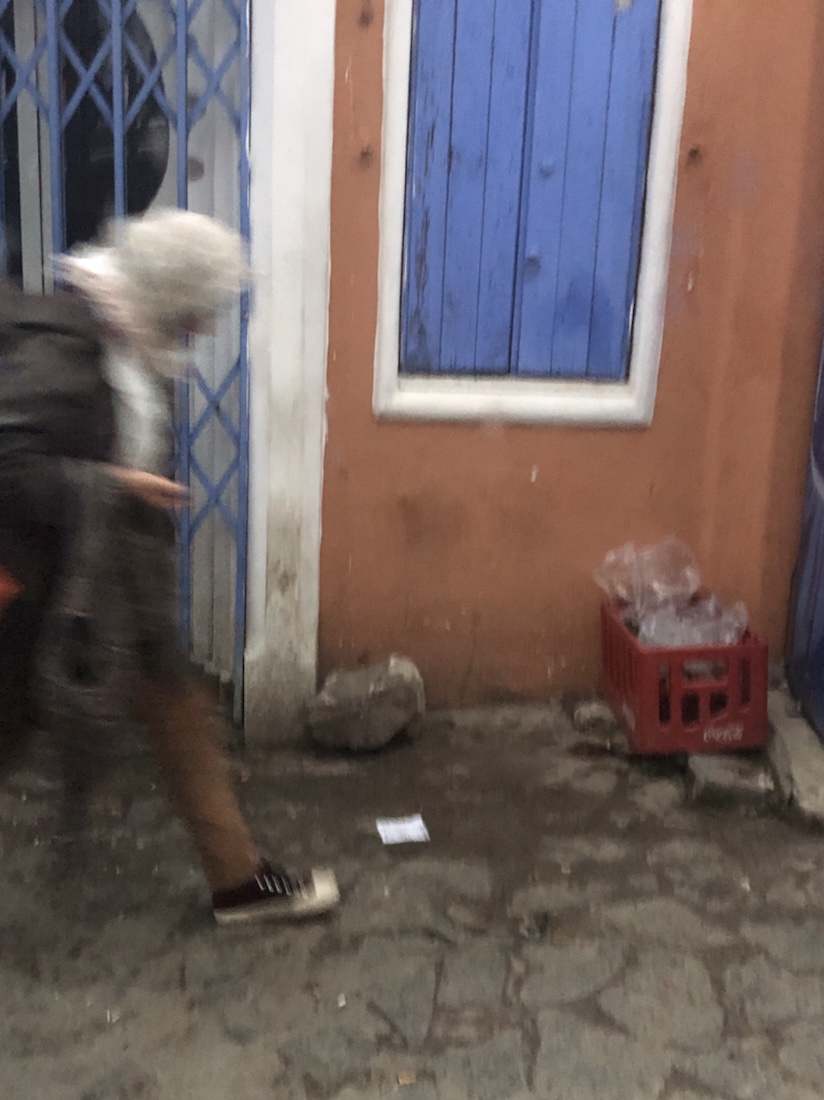 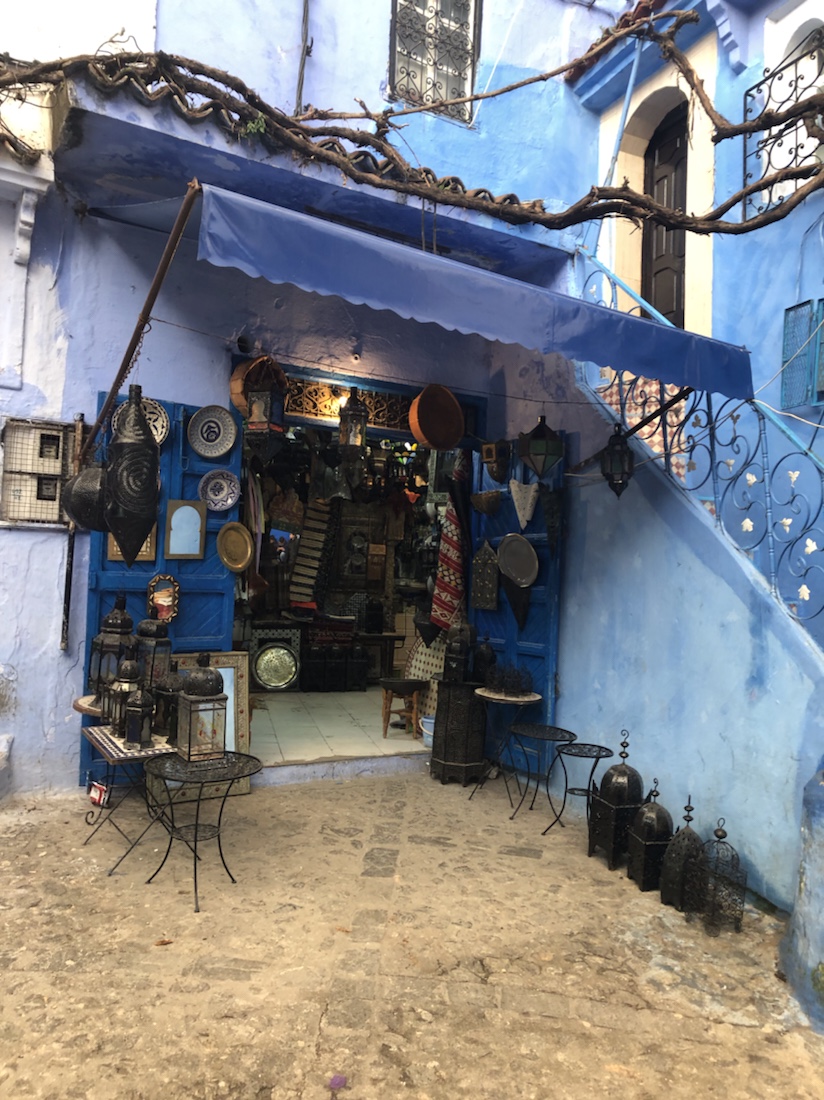 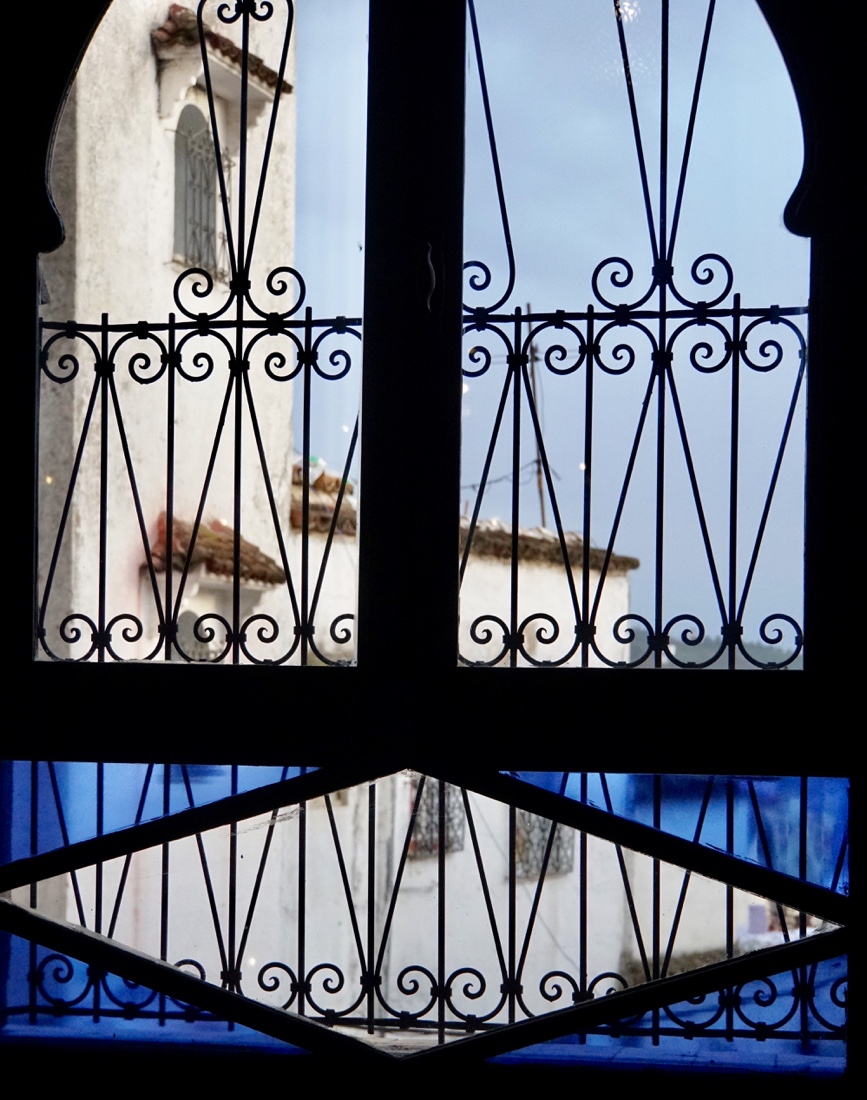
Surrounded by magnificent mountains and nestled in the heart of the medina, our “hotel”, Lina Riad, a luxurious riad, enjoys a privileged location in one of Morocco’s most unique destinations. The bright and spacious suites enjoy the views of the surrounding peaks and the bustling medina, and the 300 square meter terraces offer spectacular views, making Lina Riad one of the most peaceful places in the world.
Because it’s chilly and raining, and at Younes’ recommendation, we forego dinner at the restaurant recommended by our travel agent in favor of dinner at our riad. Dinner is quite excellent, with a terrific chick pea soup, and Carol raved about her vegetable terrine. We’re happy to have stayed in and be able to retire early, as tomorrow appears to be a very full day.
|
|








 Our first stop, unscheduled, was another synagogue. No services were being conducted, but we enjoyed seeing and walking around the building.
Our first stop, unscheduled, was another synagogue. No services were being conducted, but we enjoyed seeing and walking around the building.































 Carol, meanwhile is brought into the world of ancient beauty secrets and where it all began in a session at a private home that unearths traditional methods and natural beauty. She is accompanied by a female member of the staff, who translates and facilitates.
Carol, meanwhile is brought into the world of ancient beauty secrets and where it all began in a session at a private home that unearths traditional methods and natural beauty. She is accompanied by a female member of the staff, who translates and facilitates.







































































